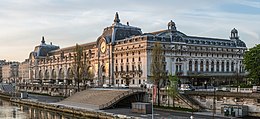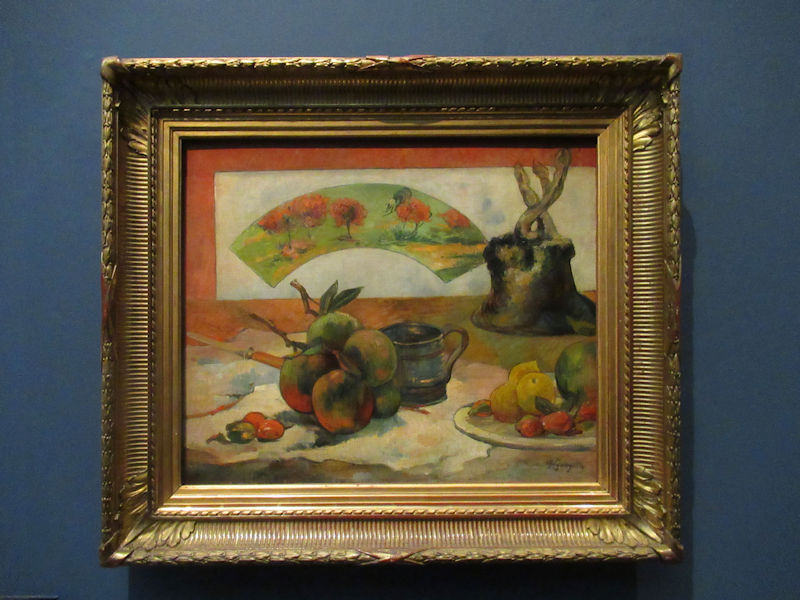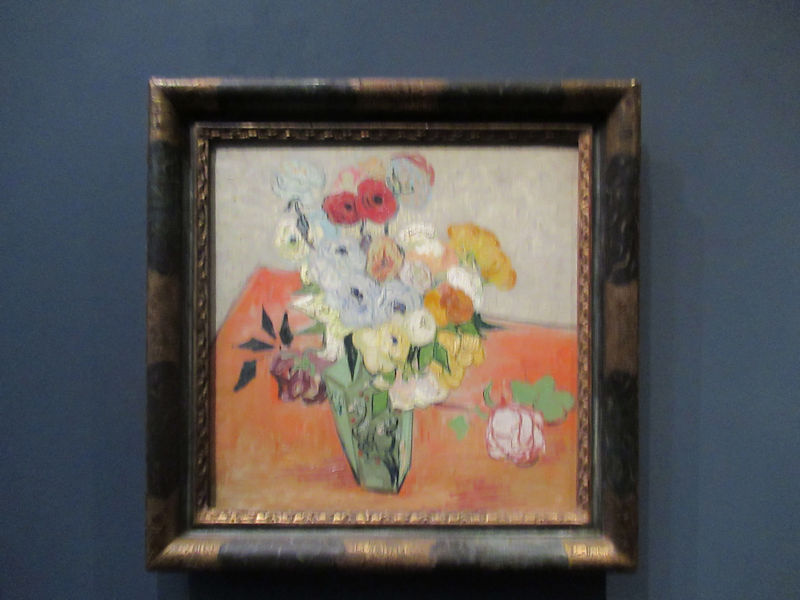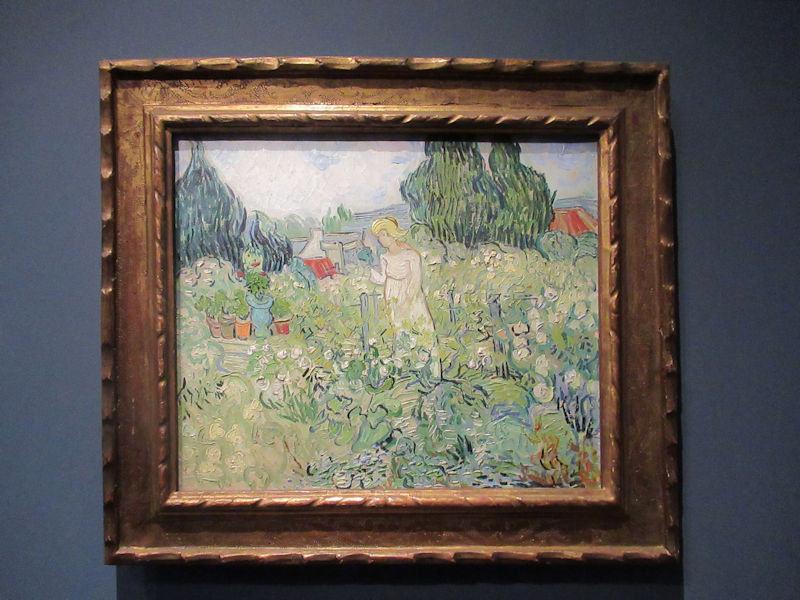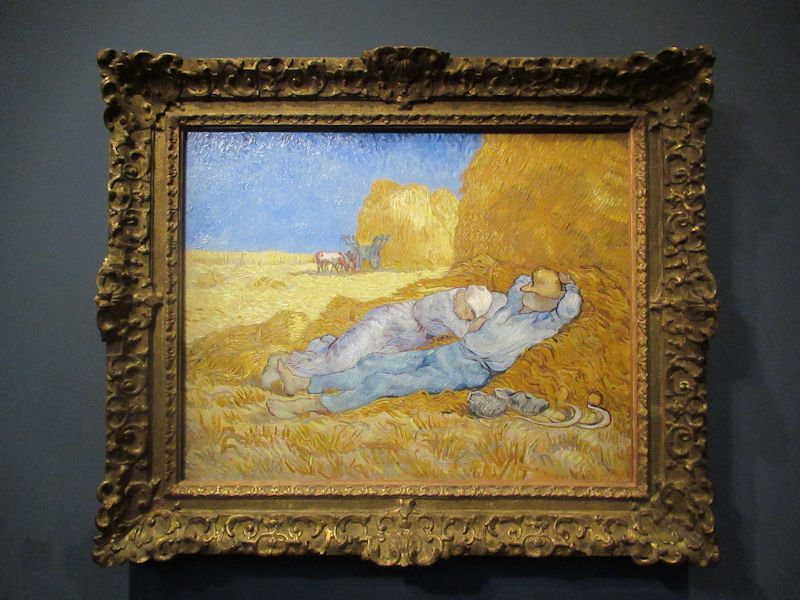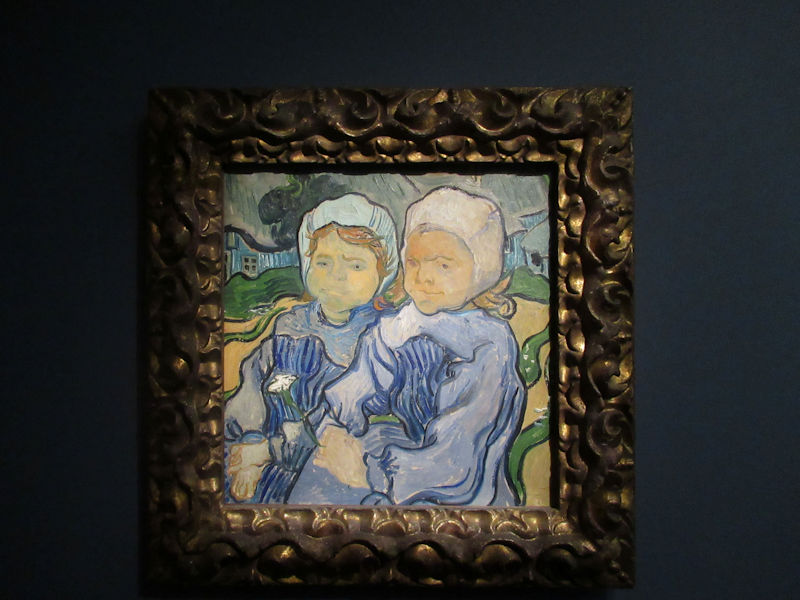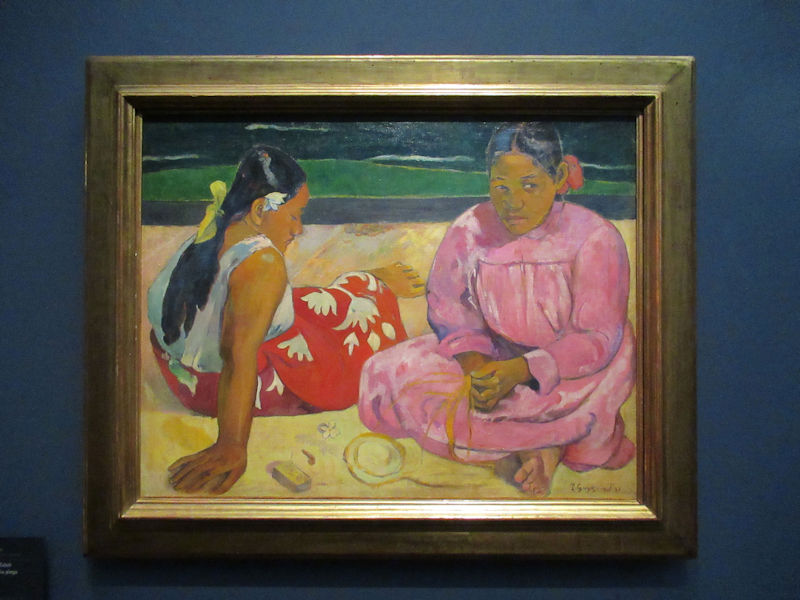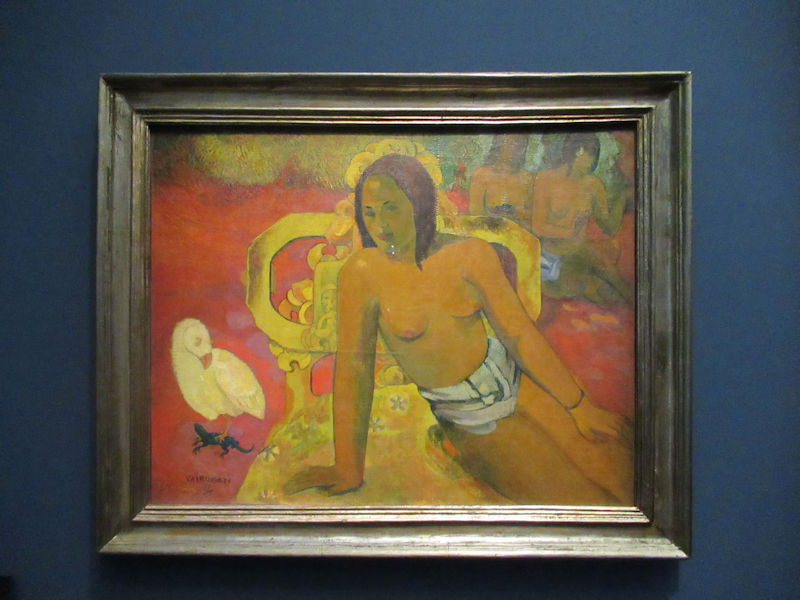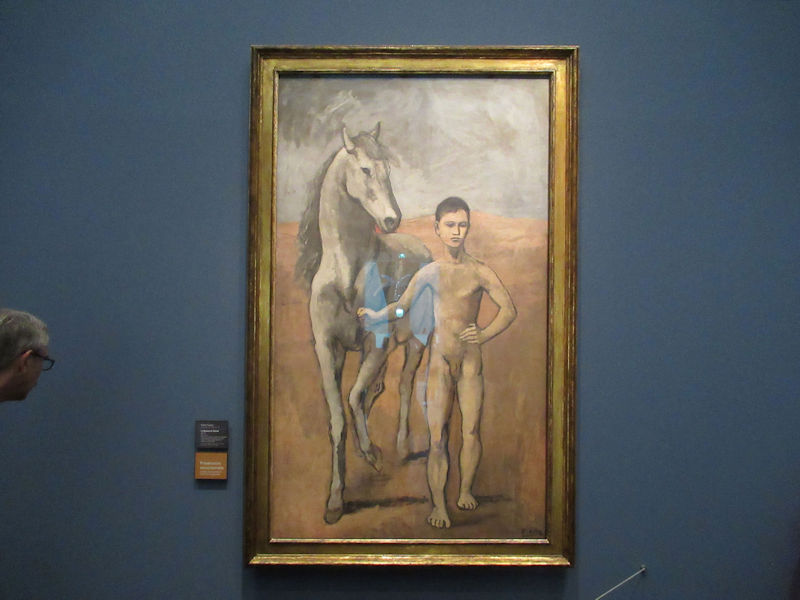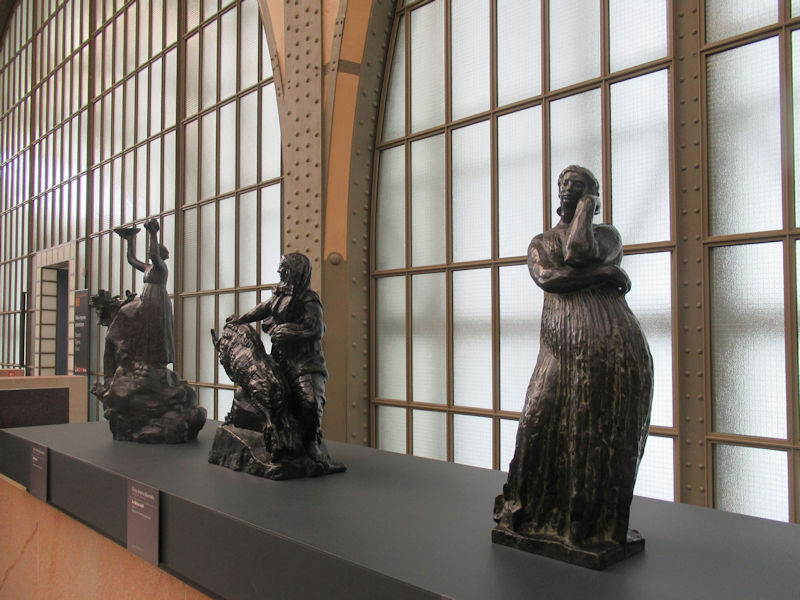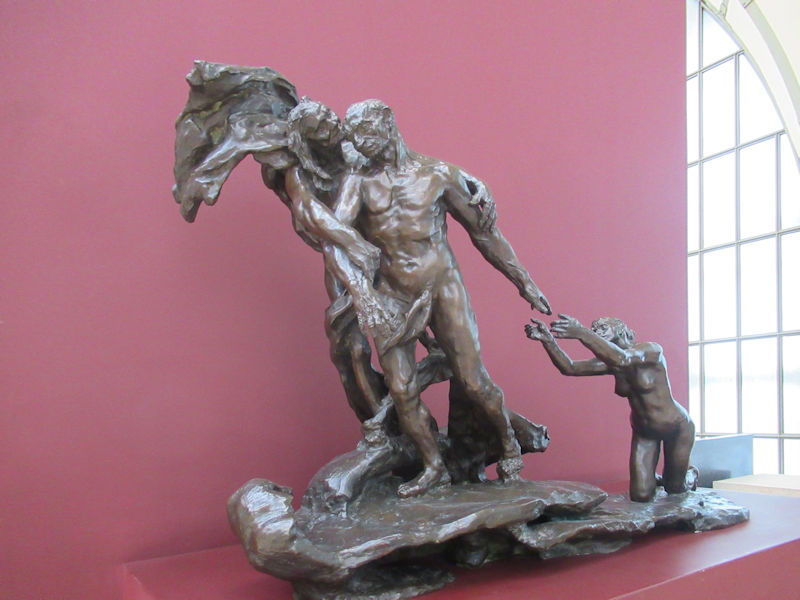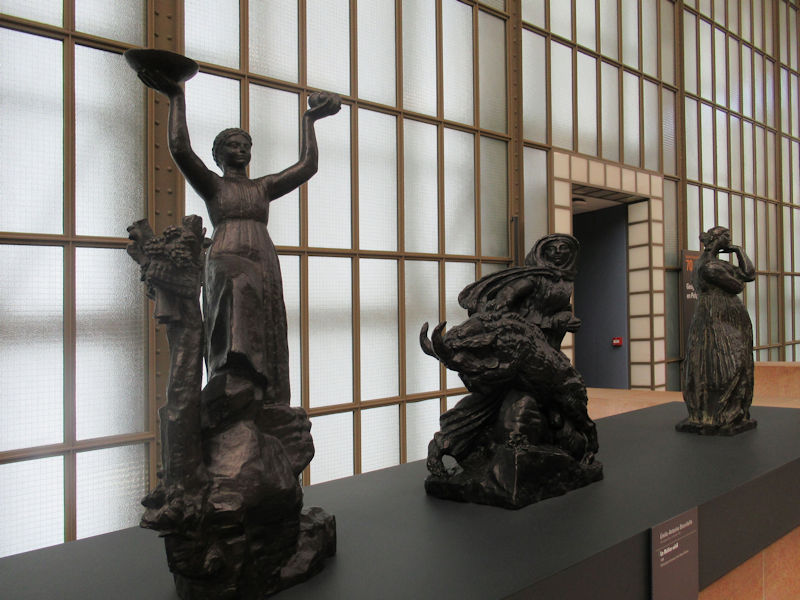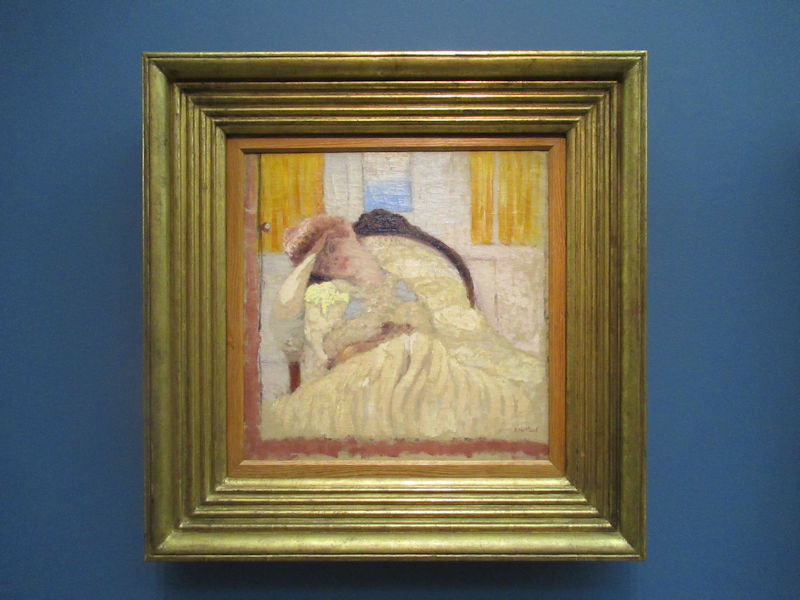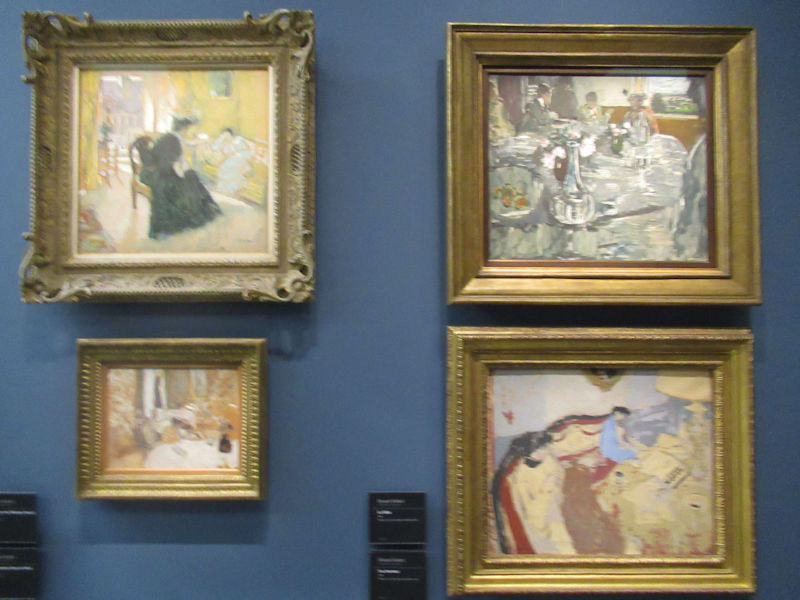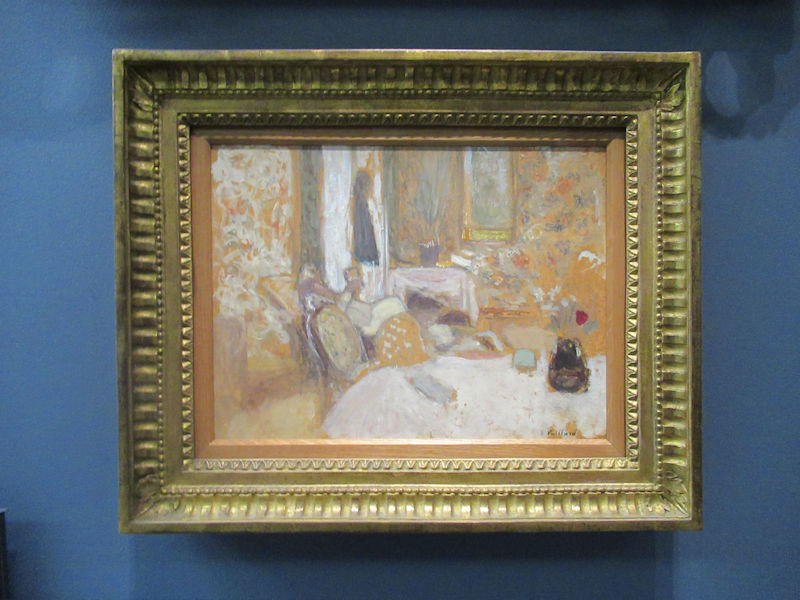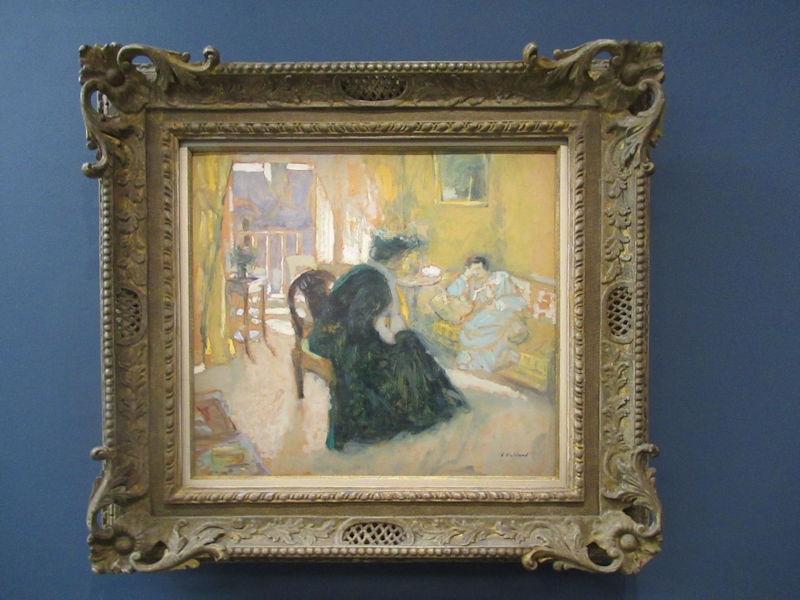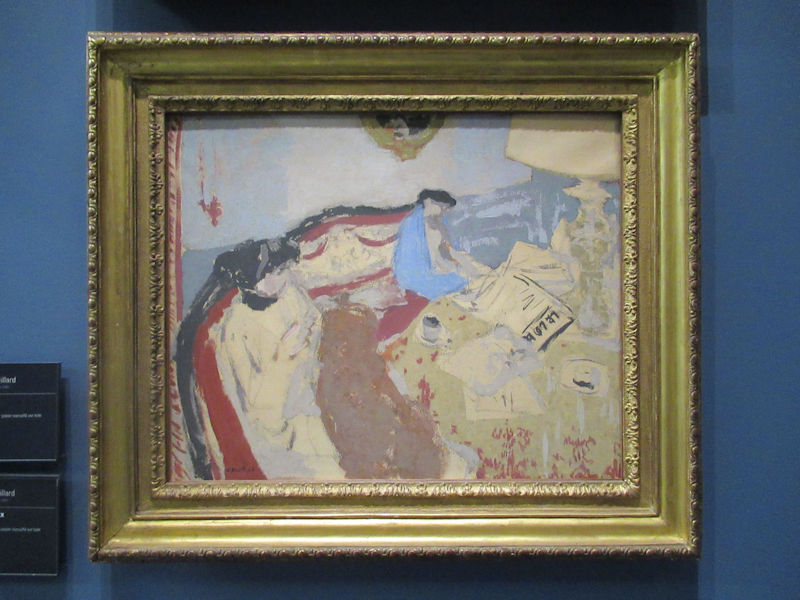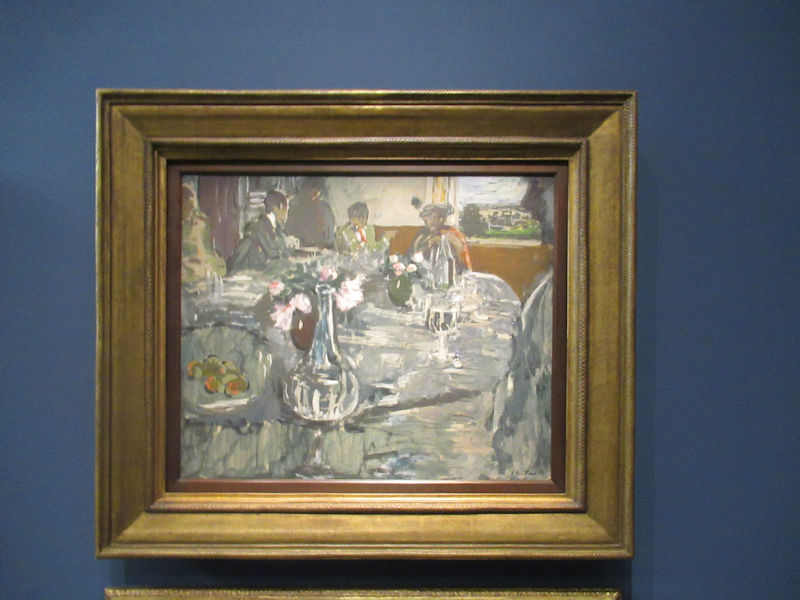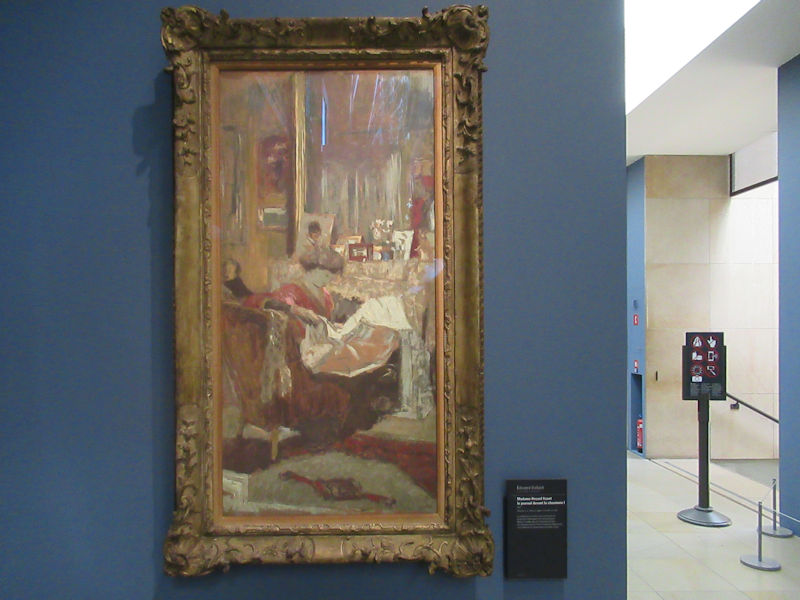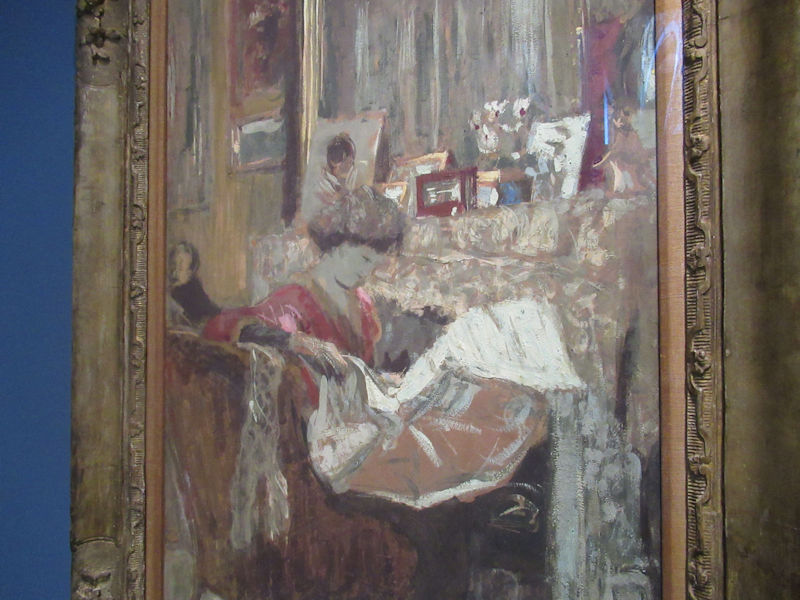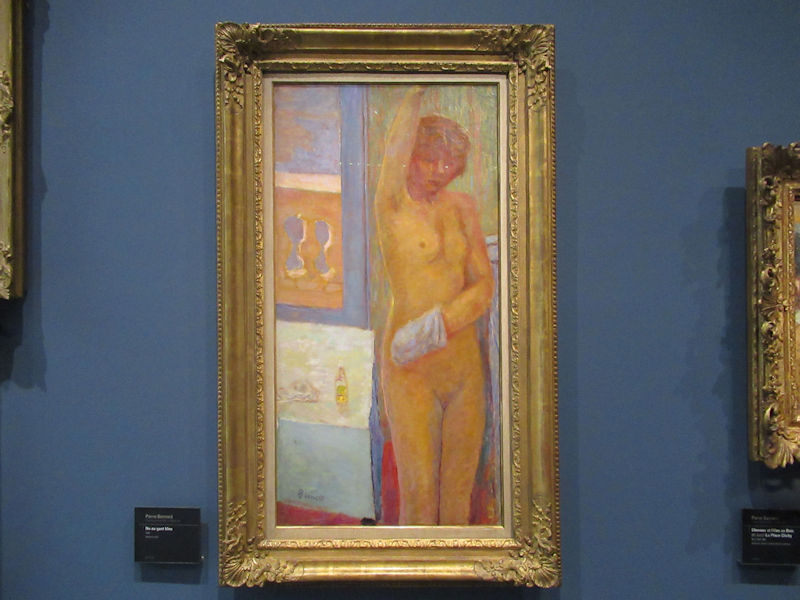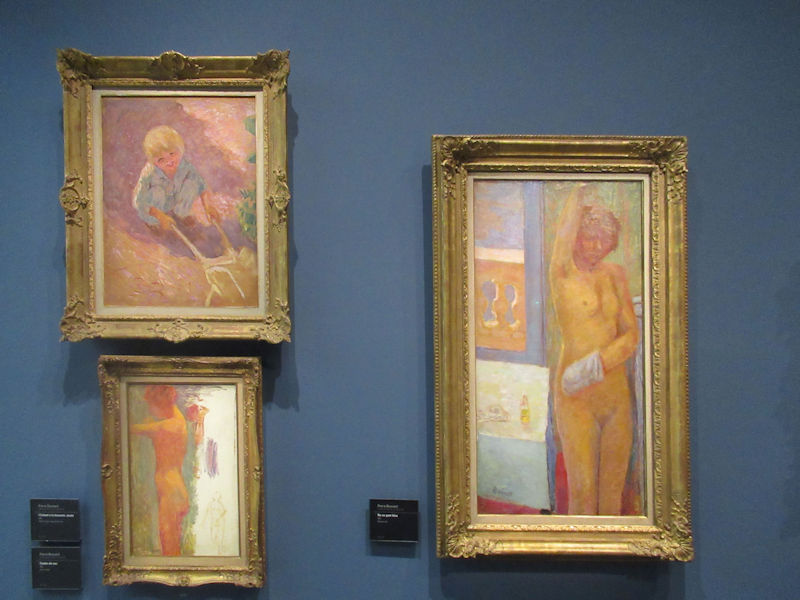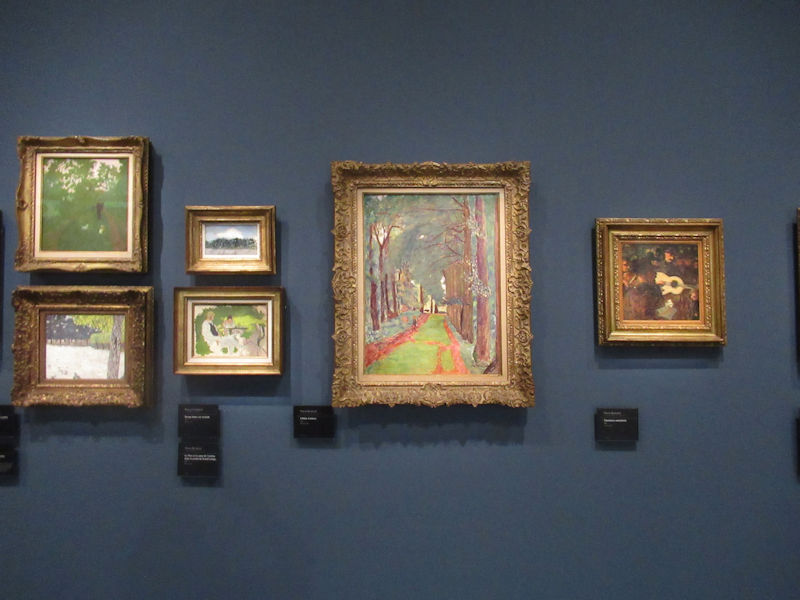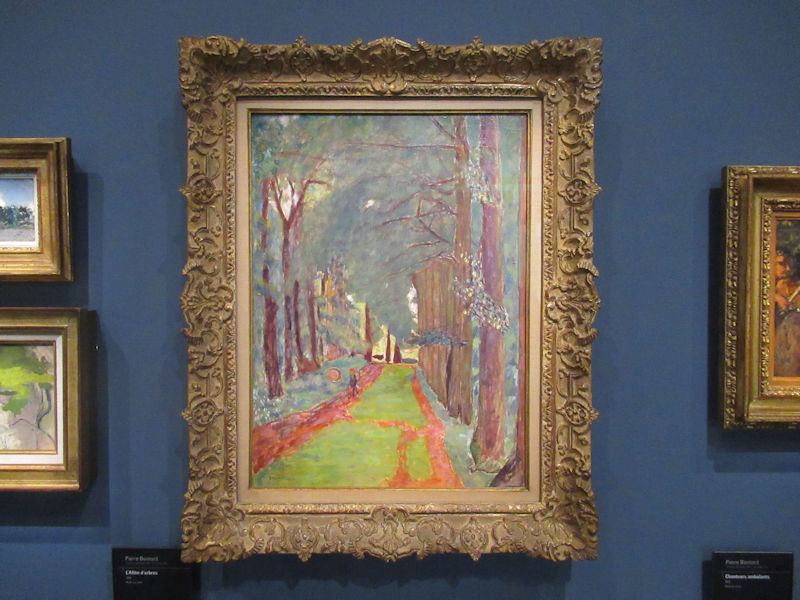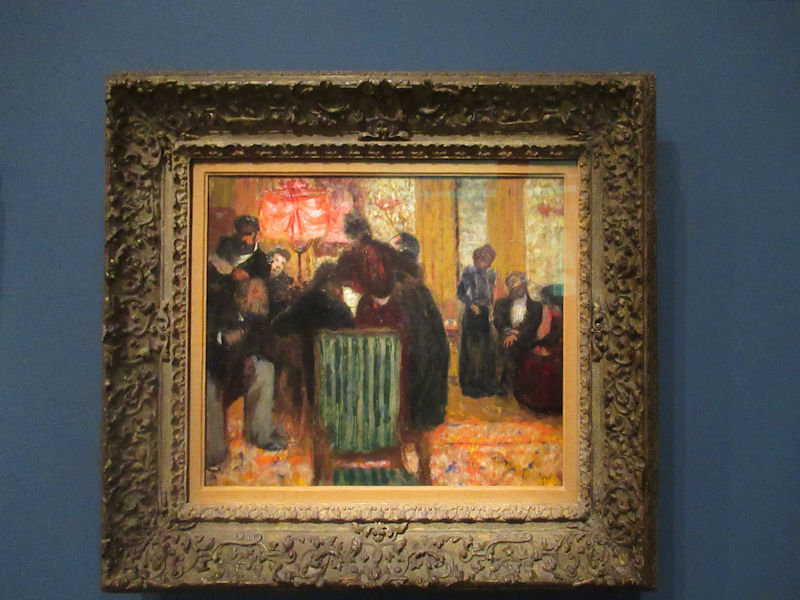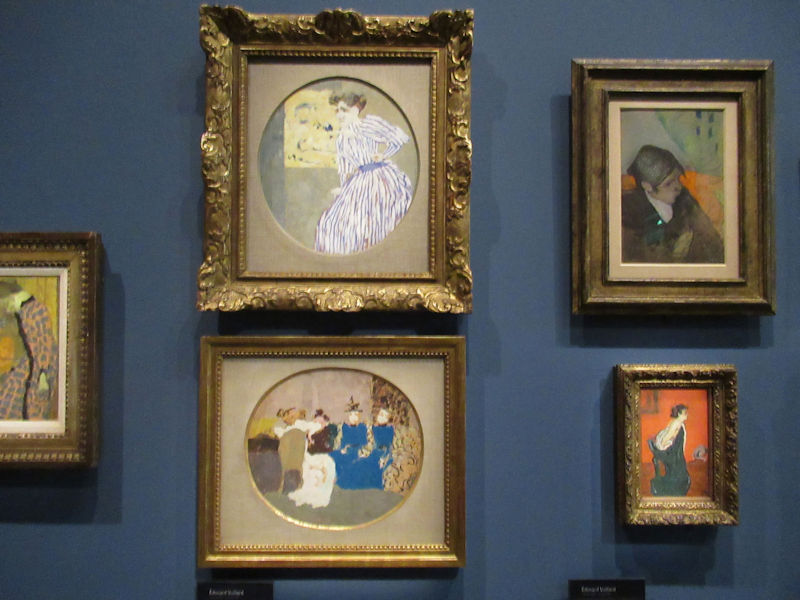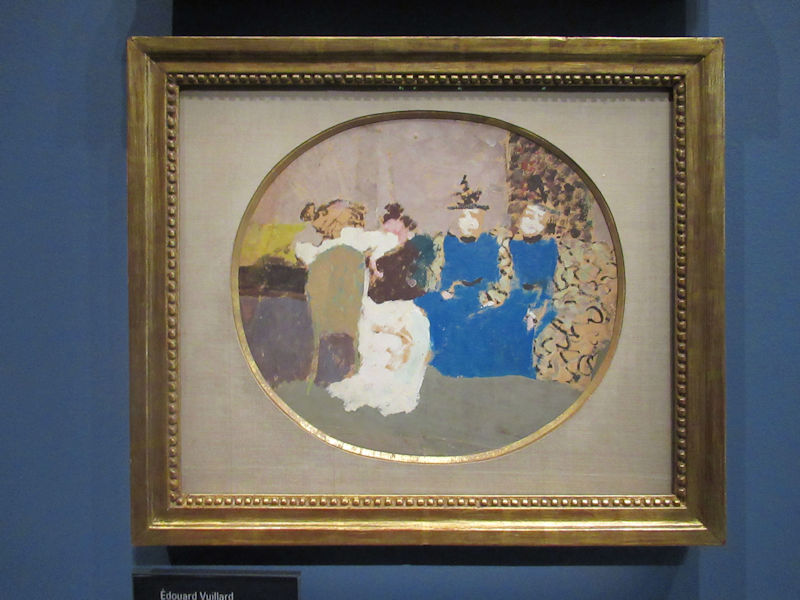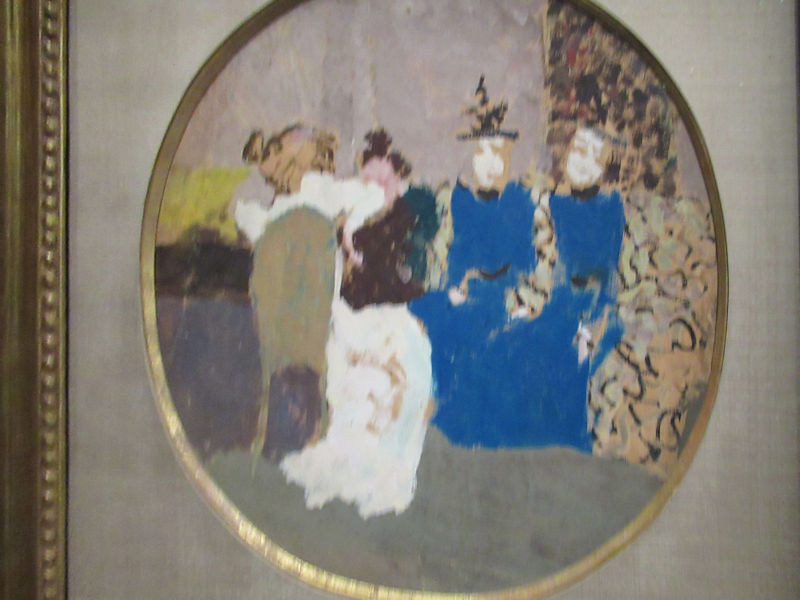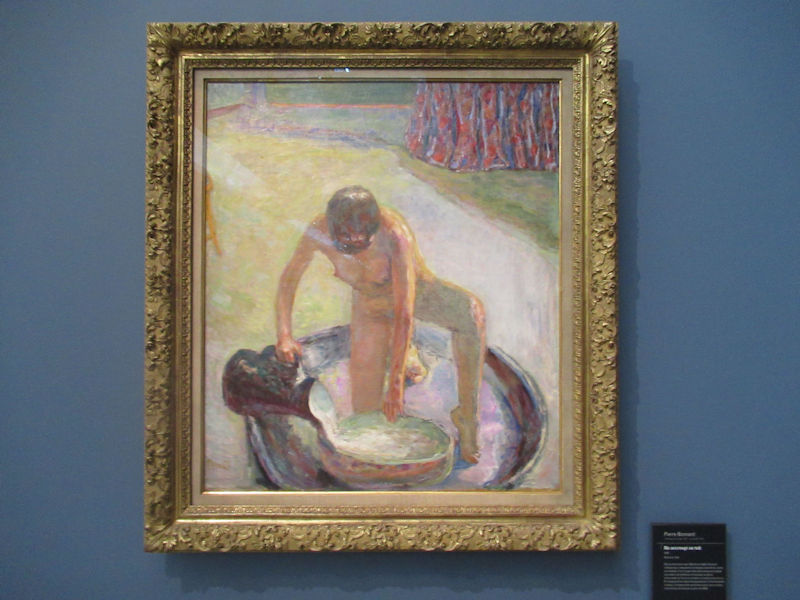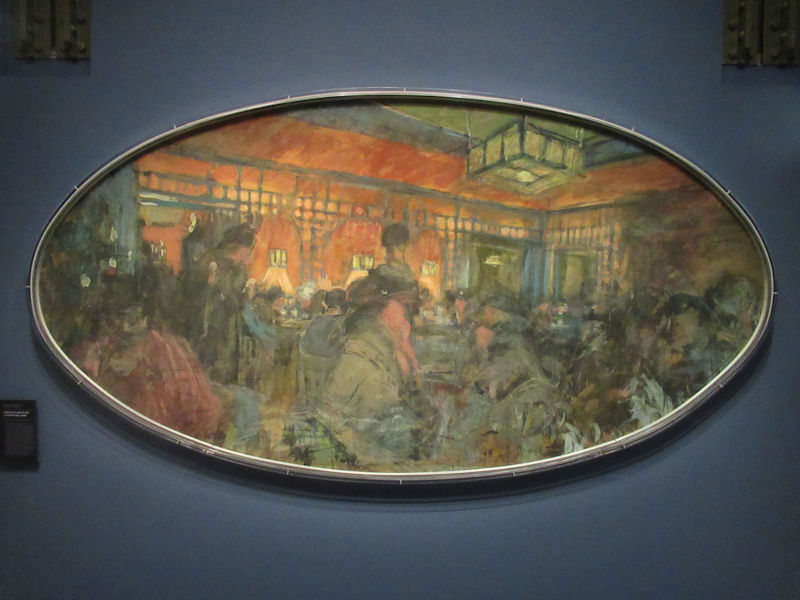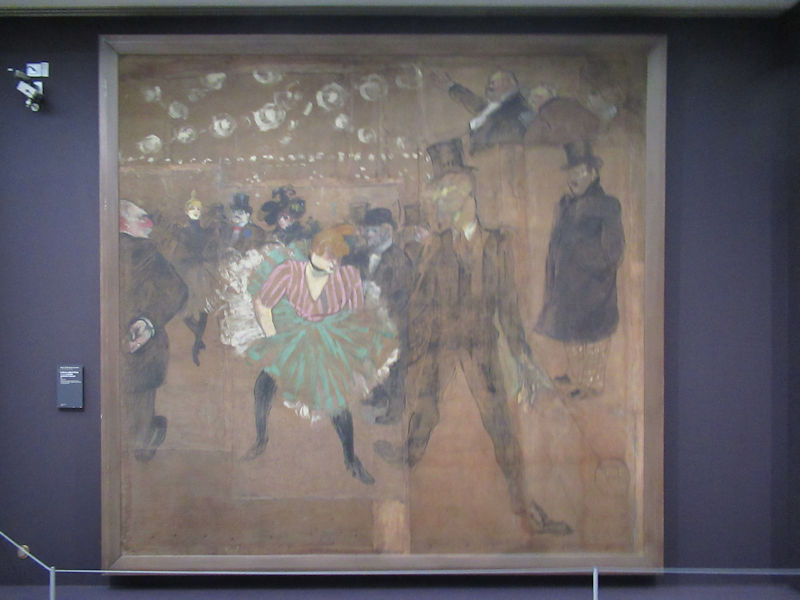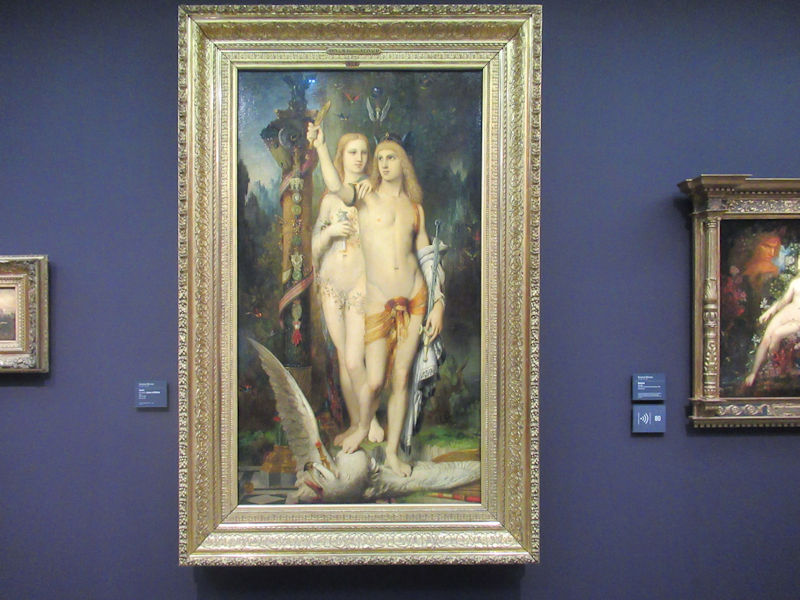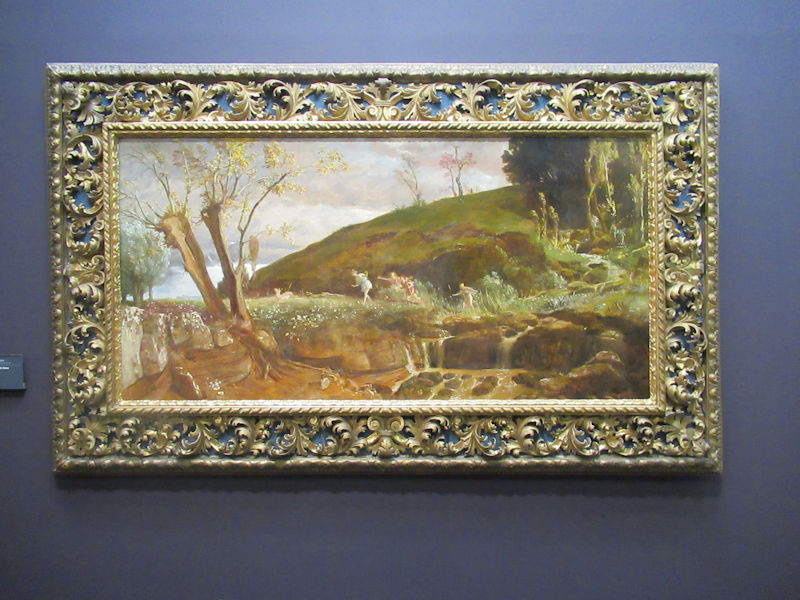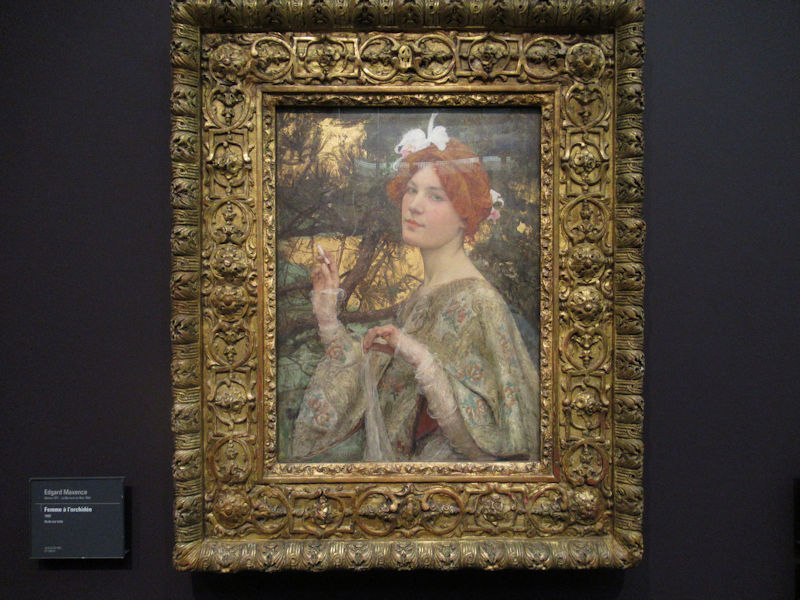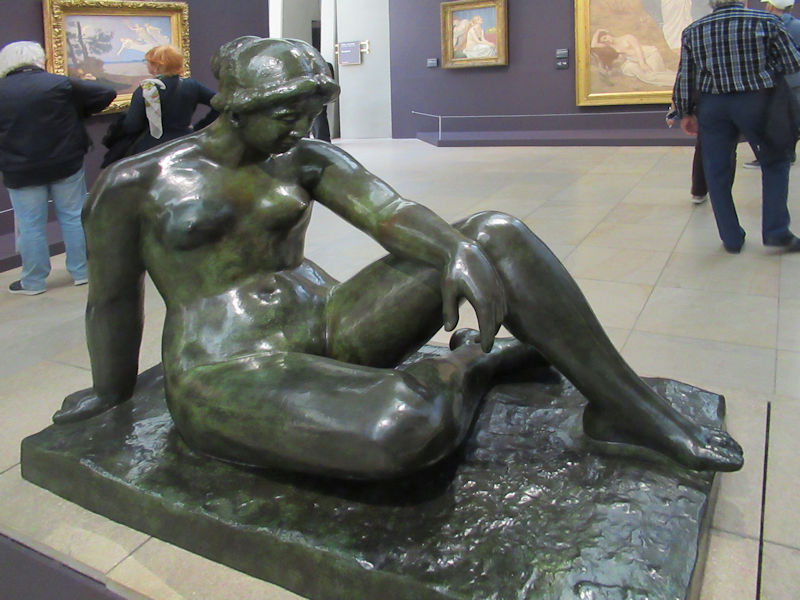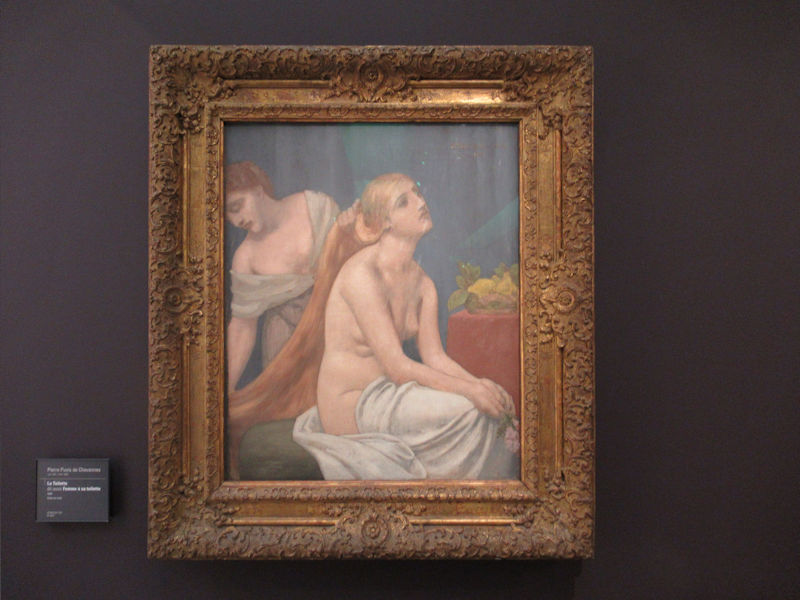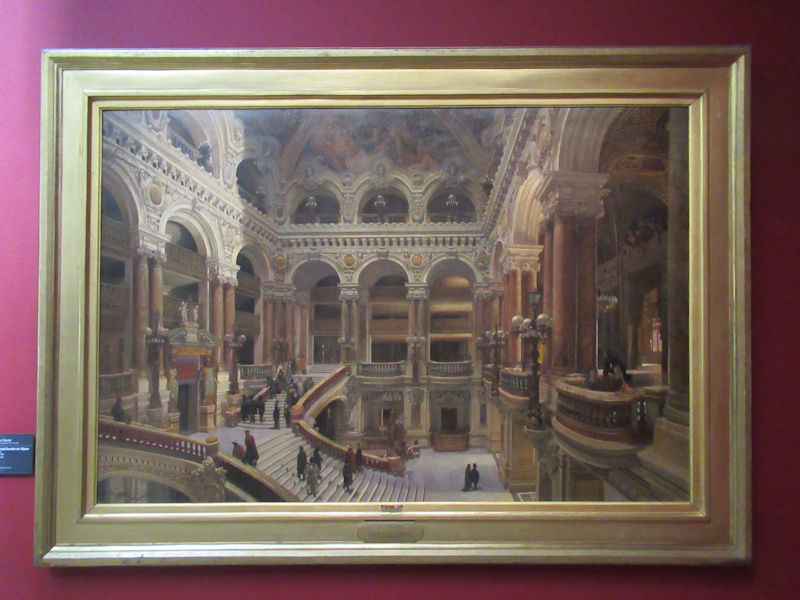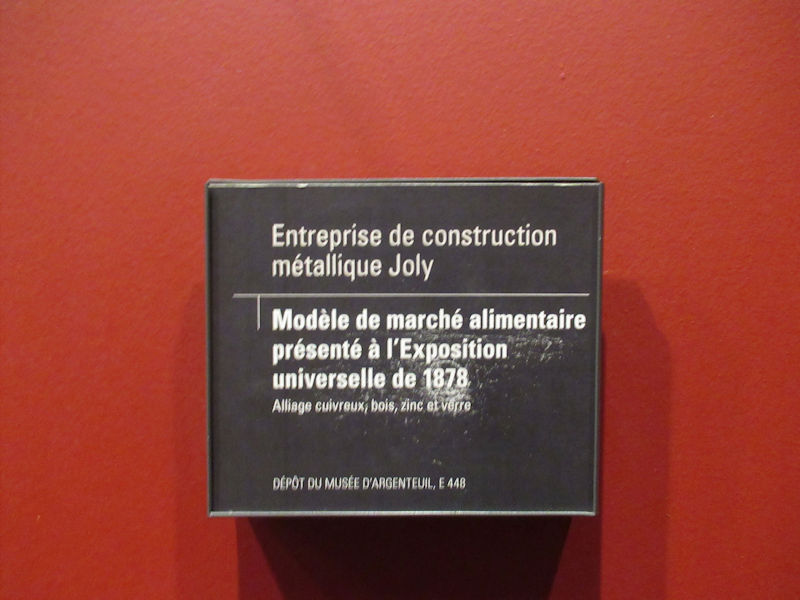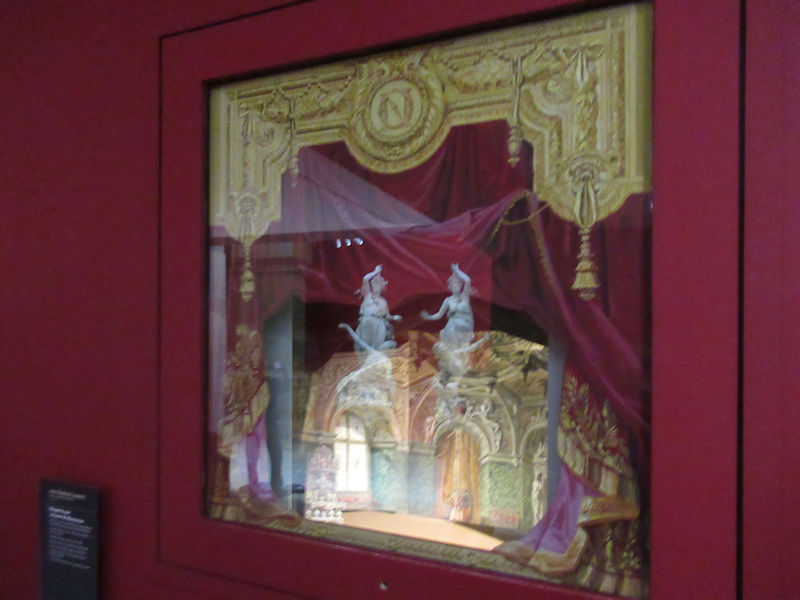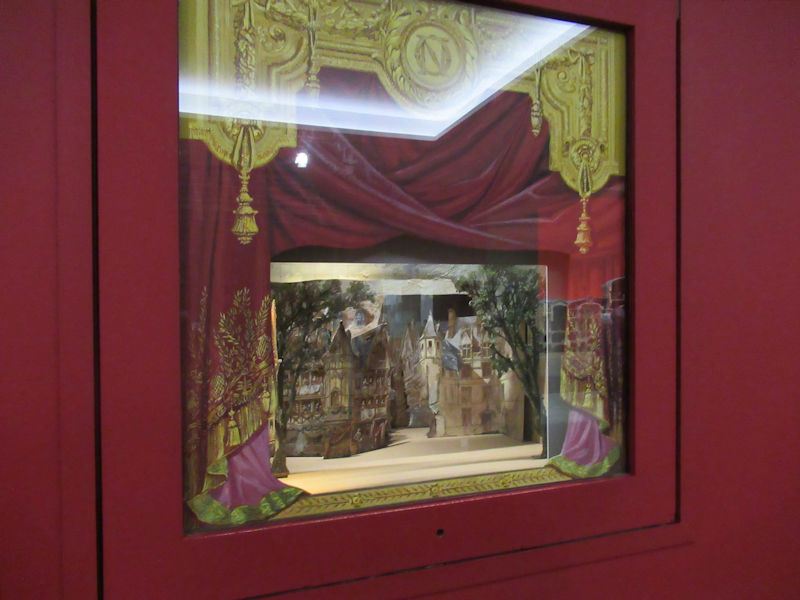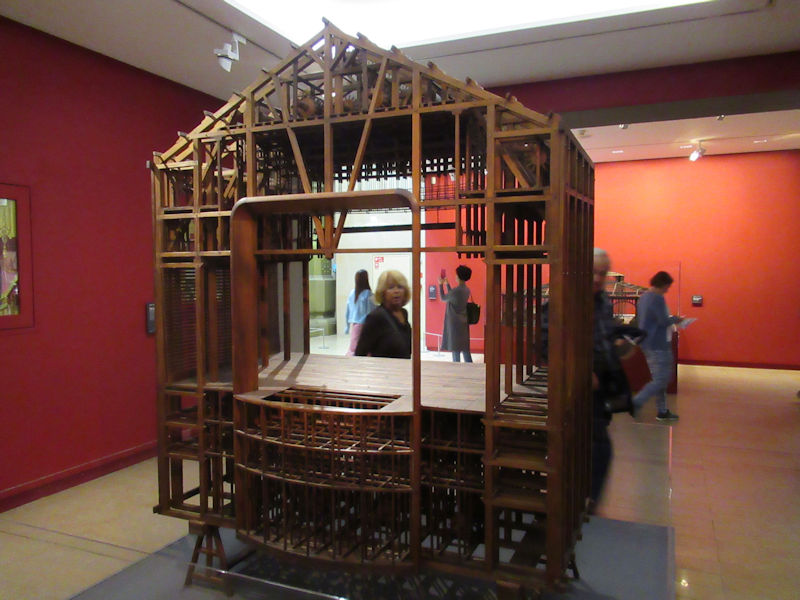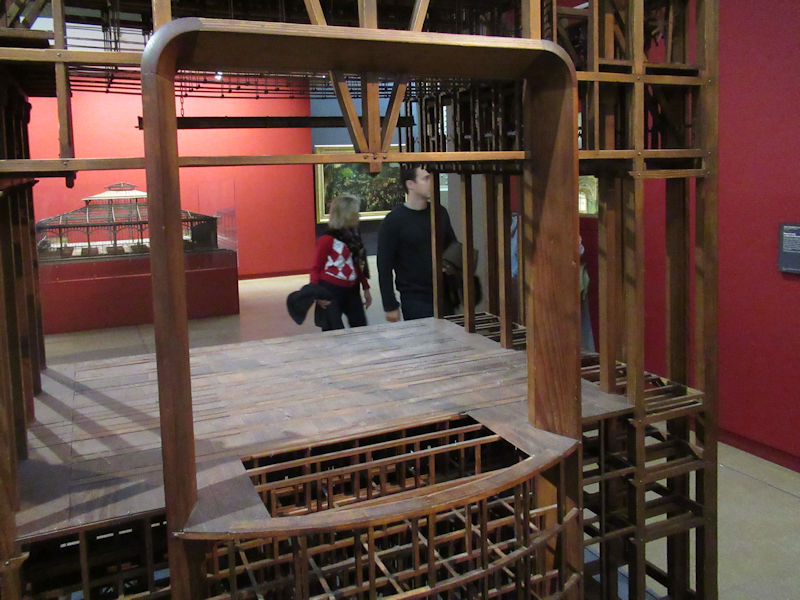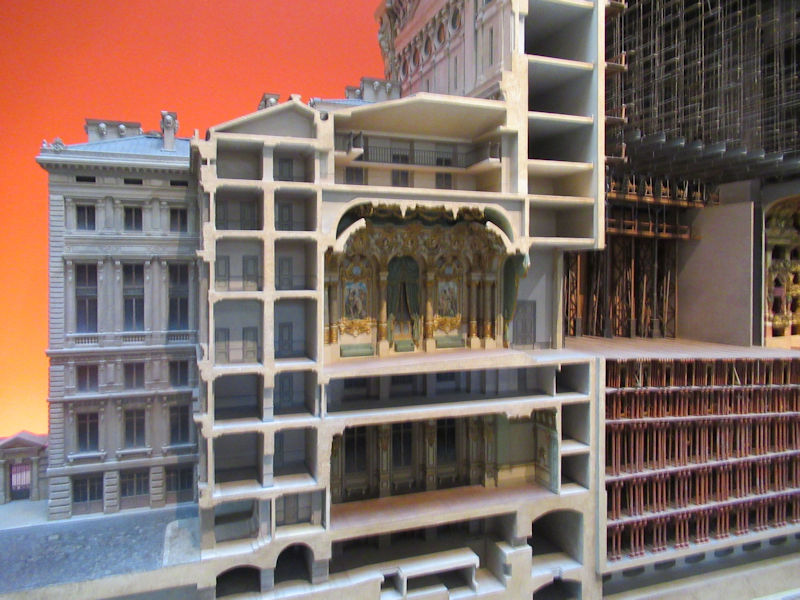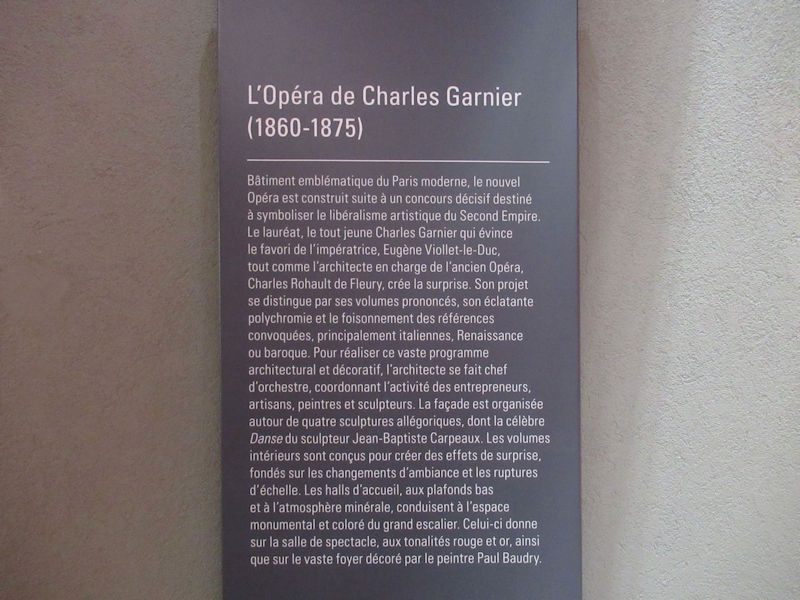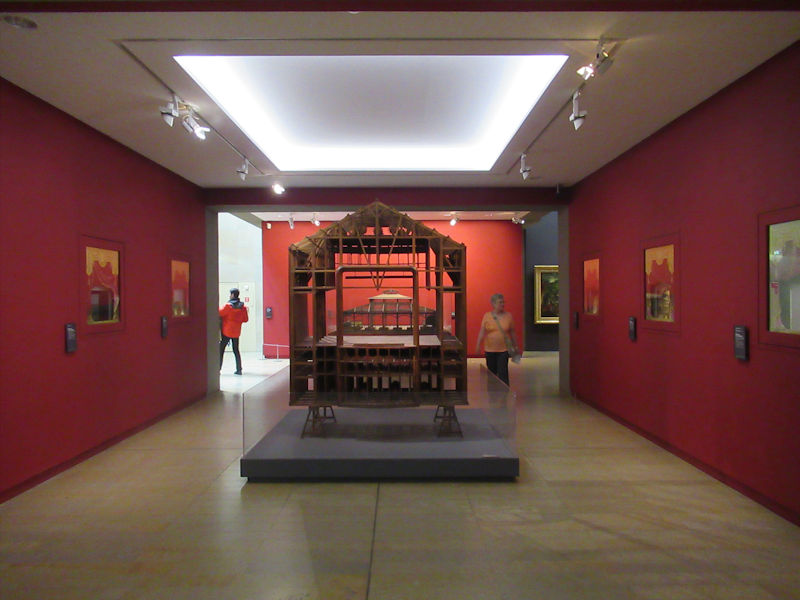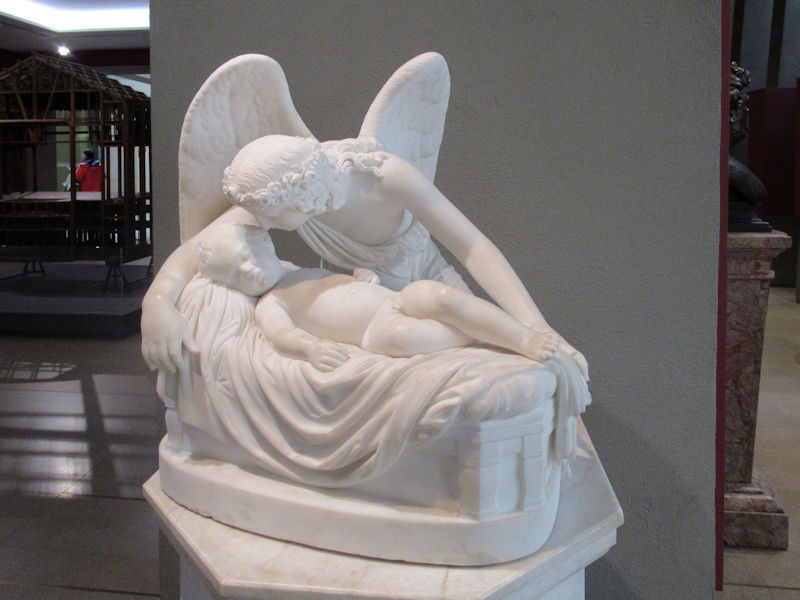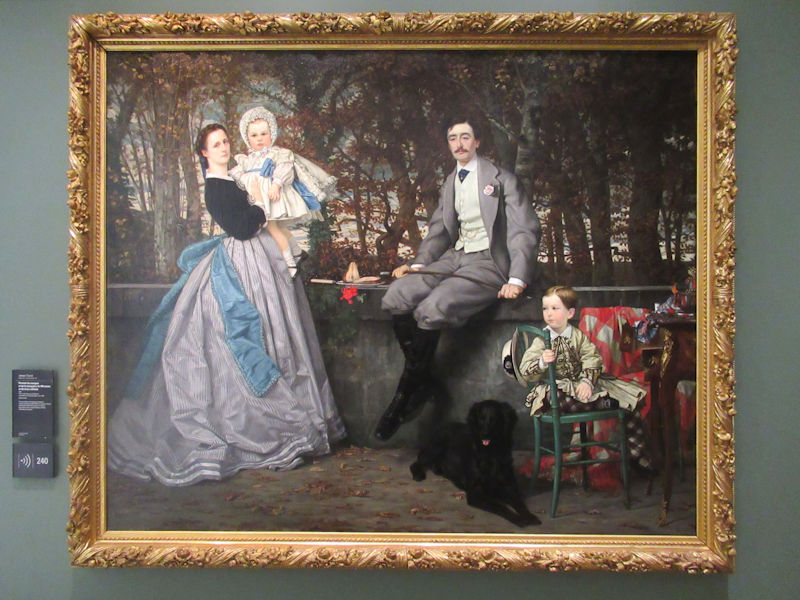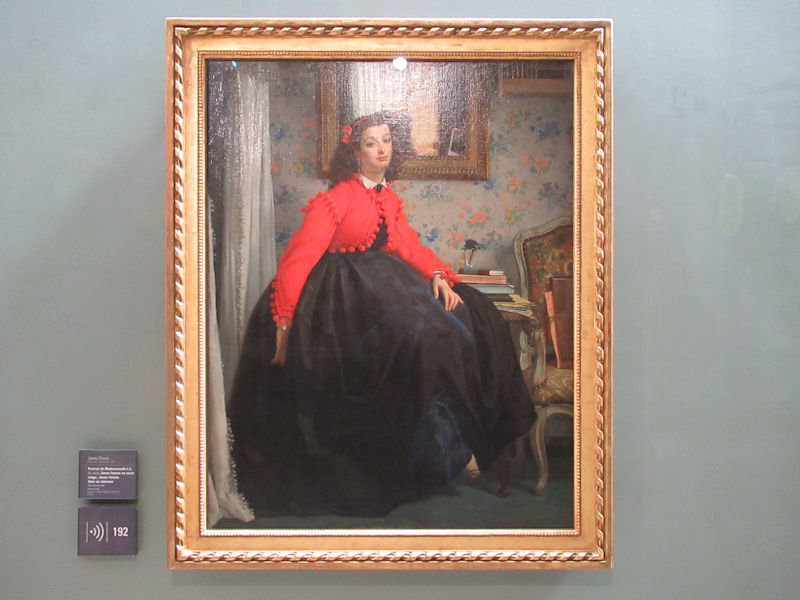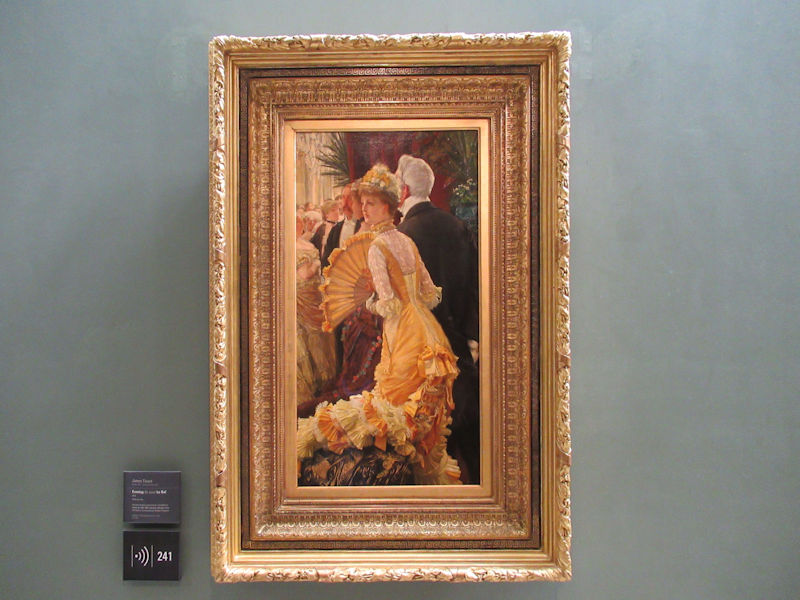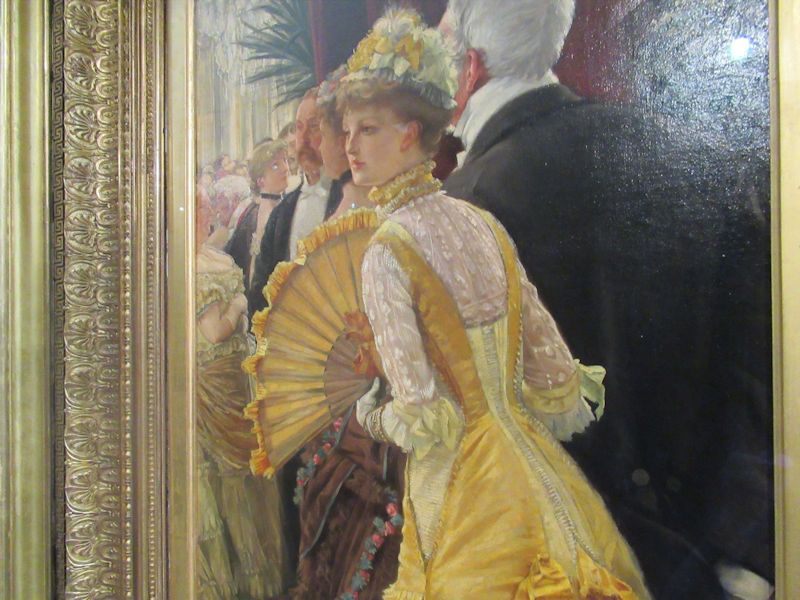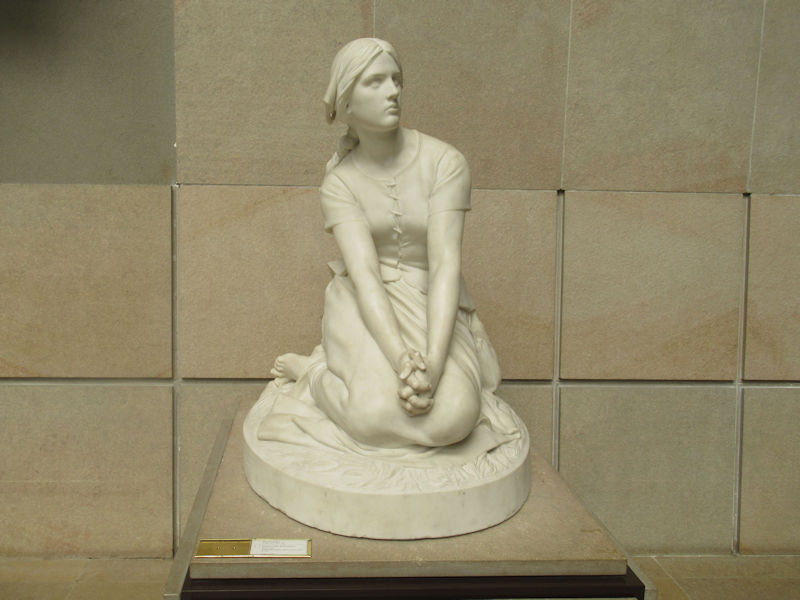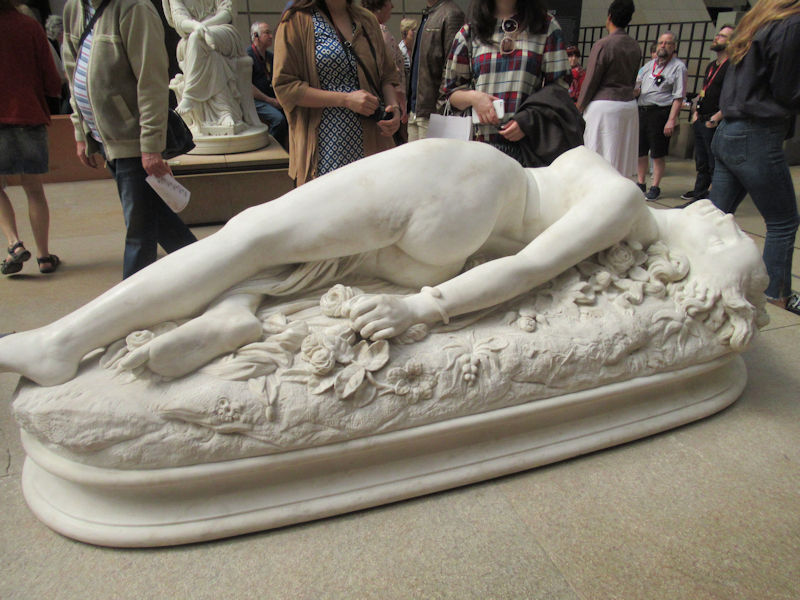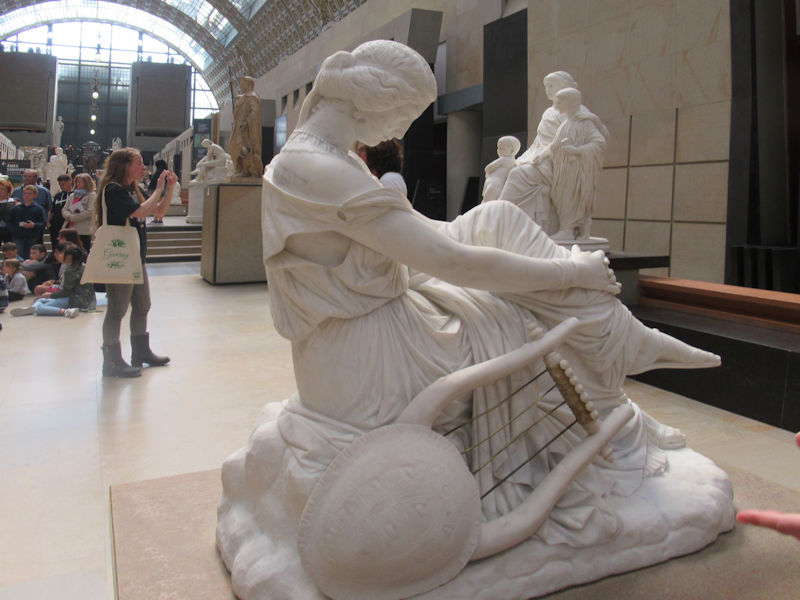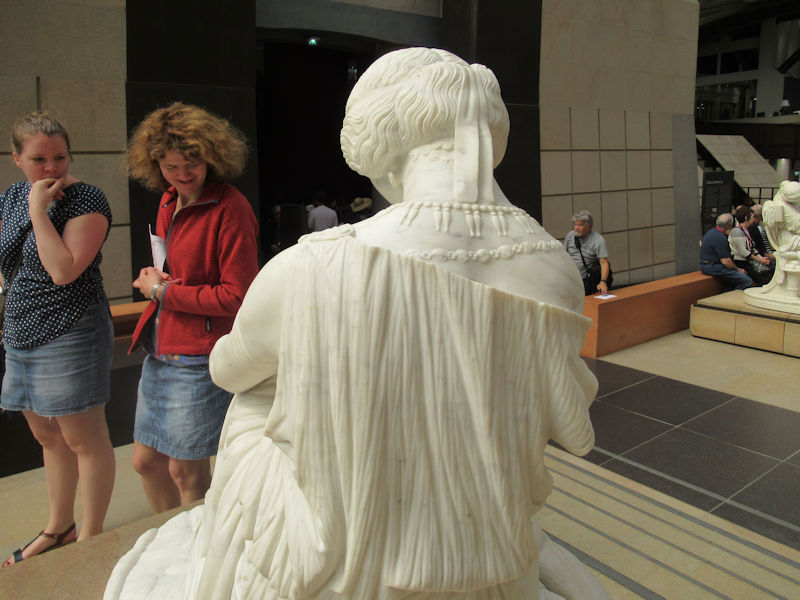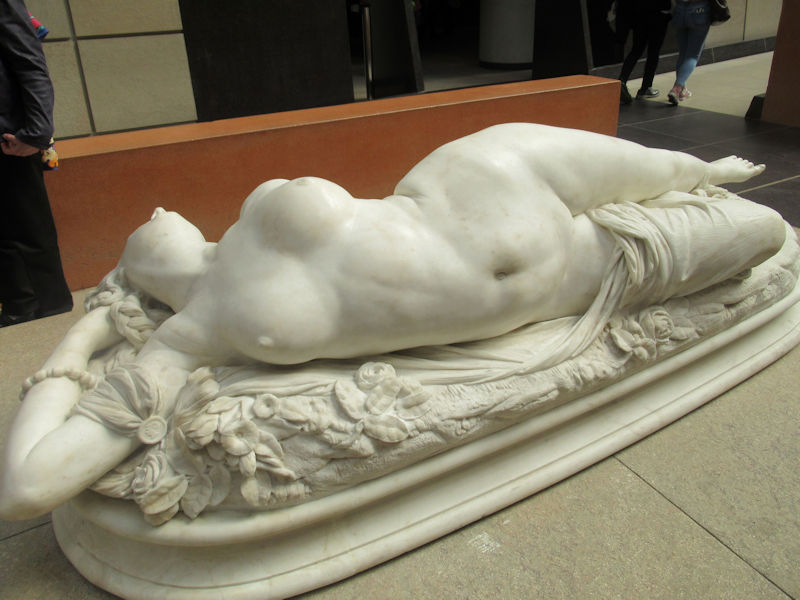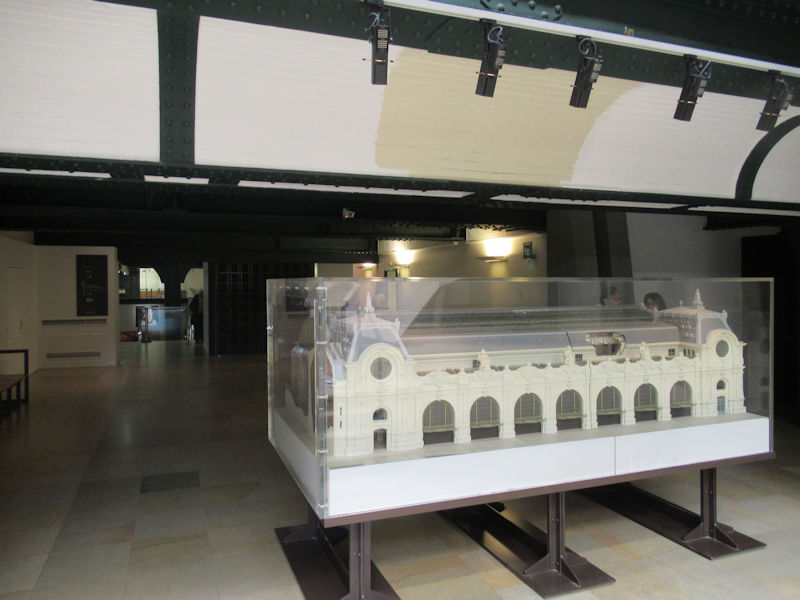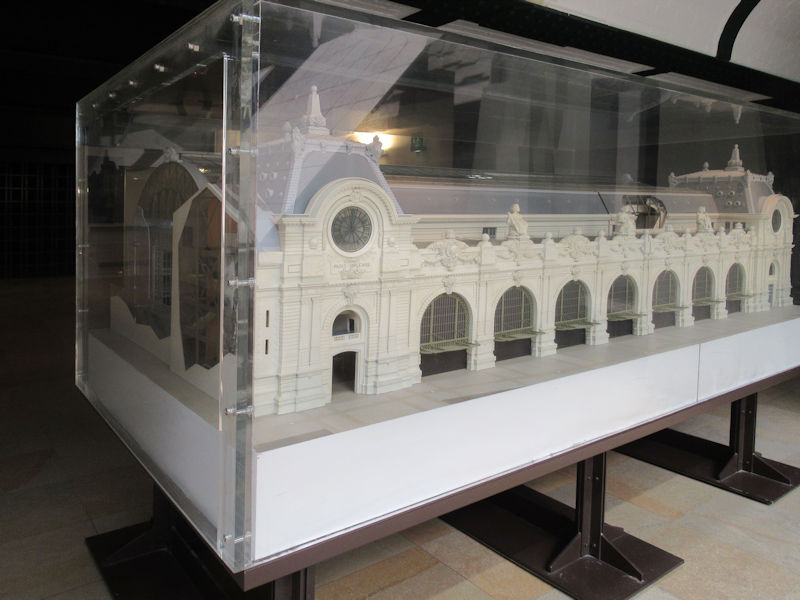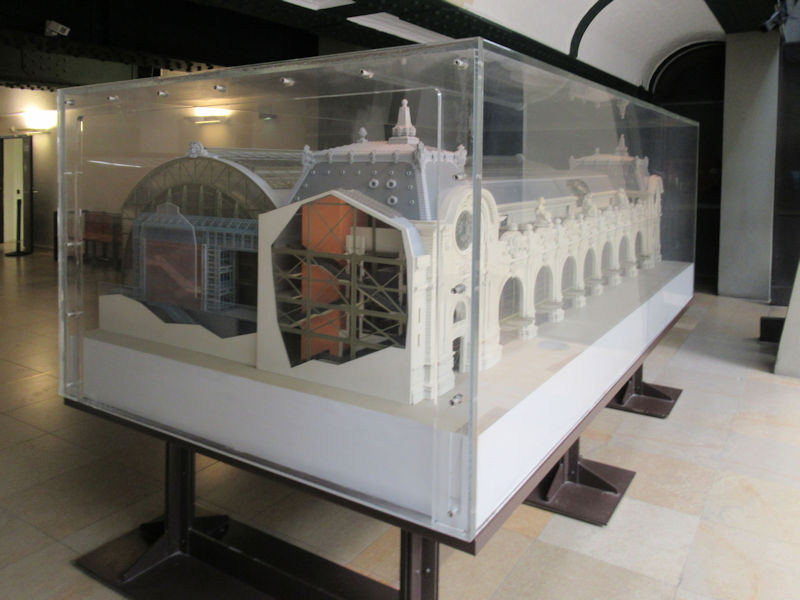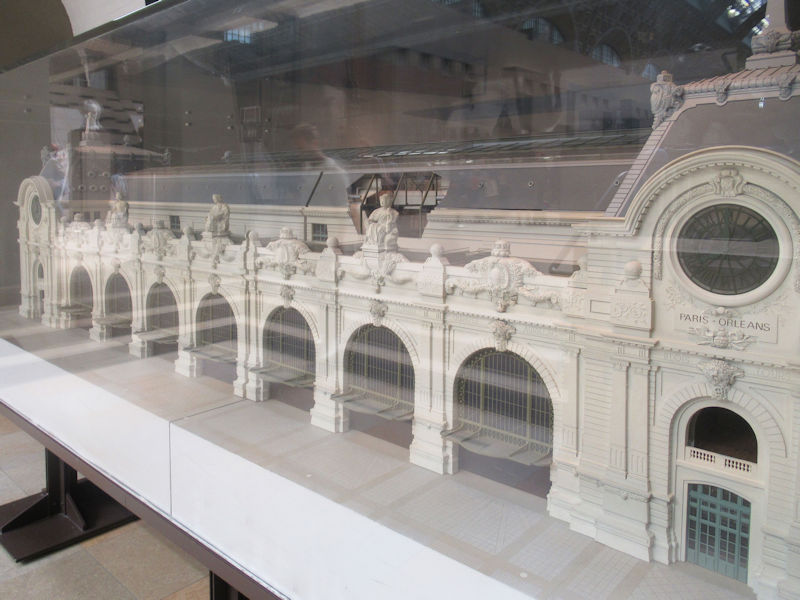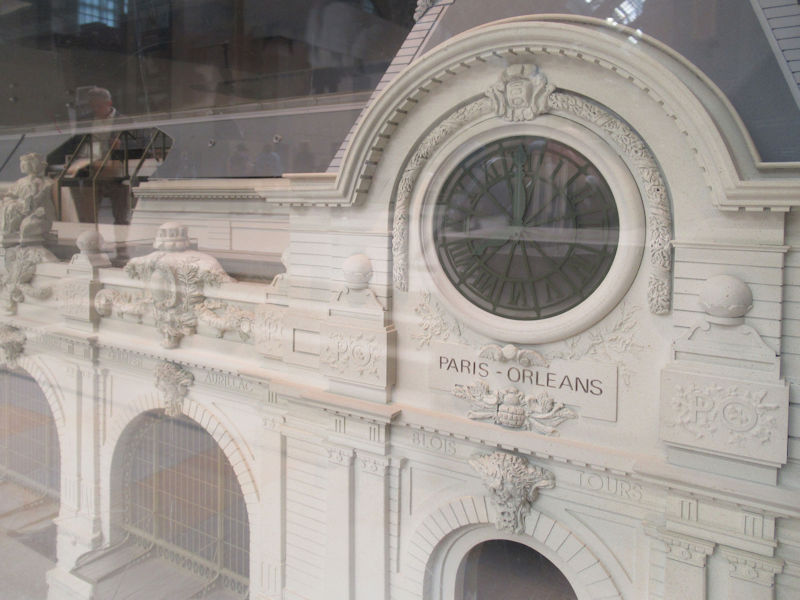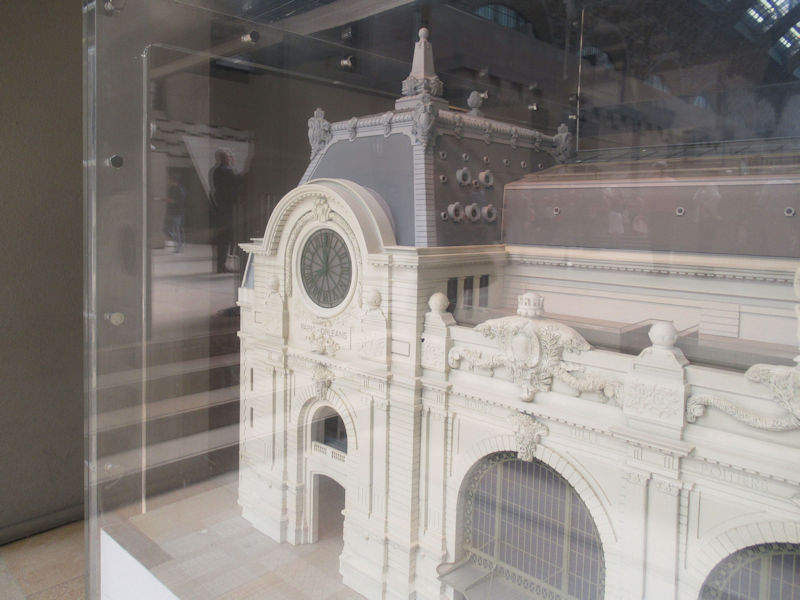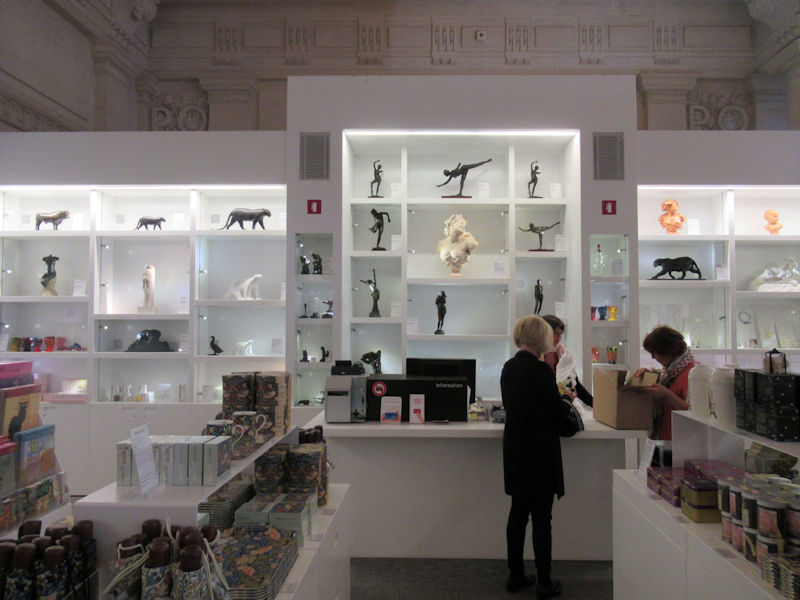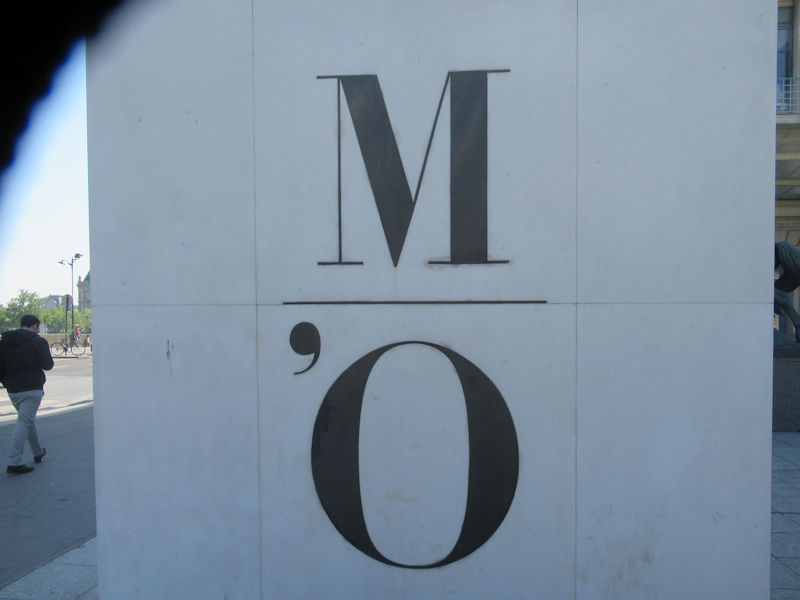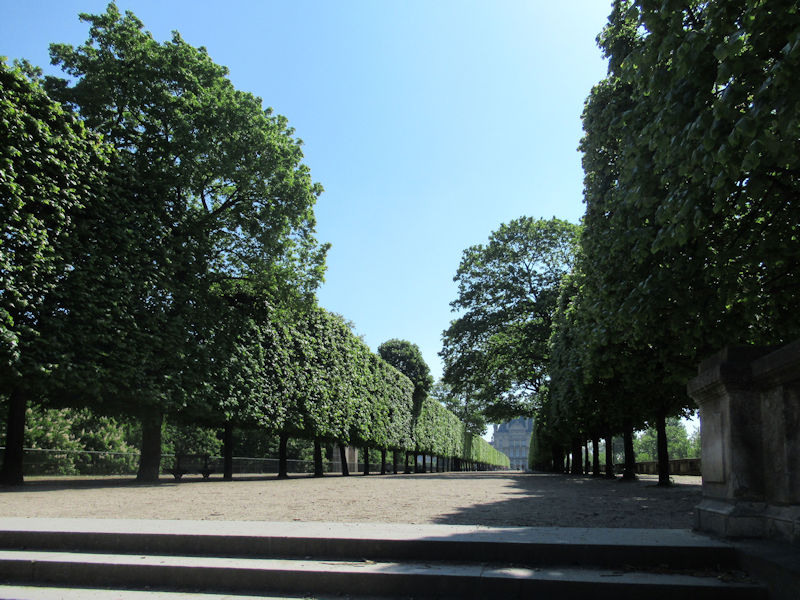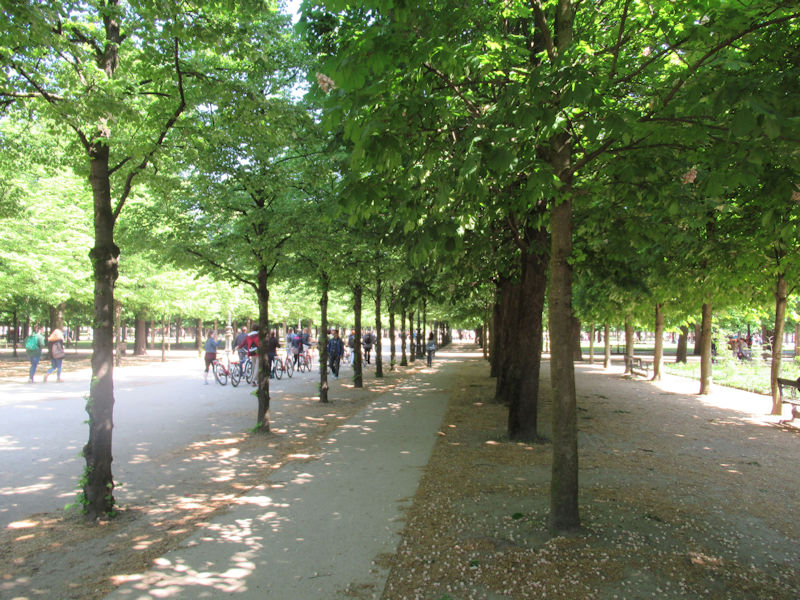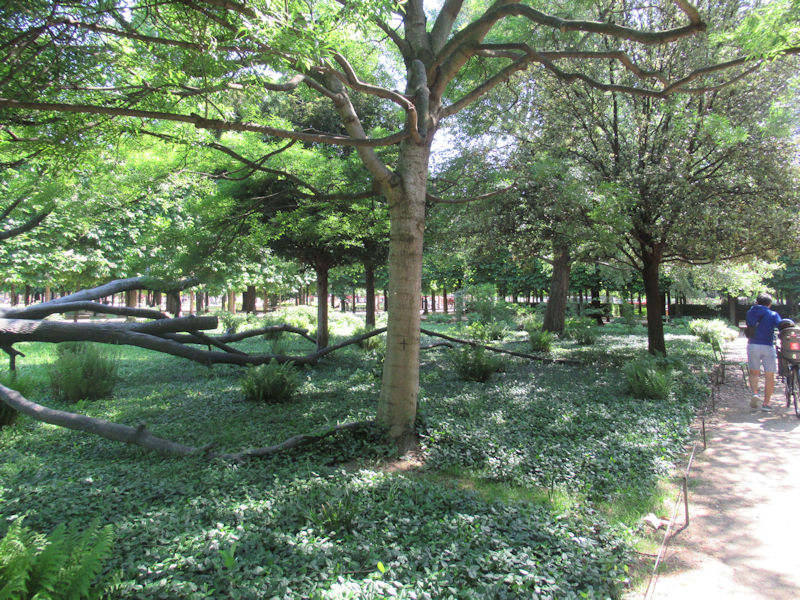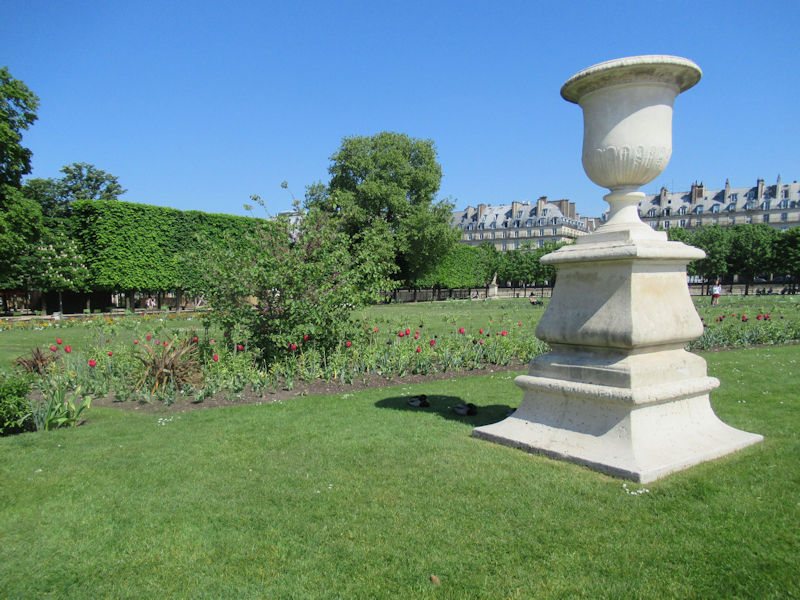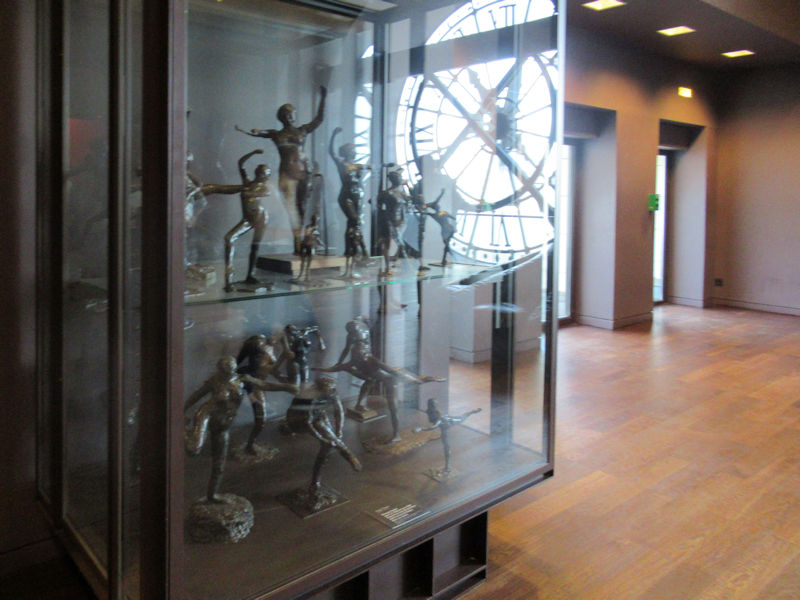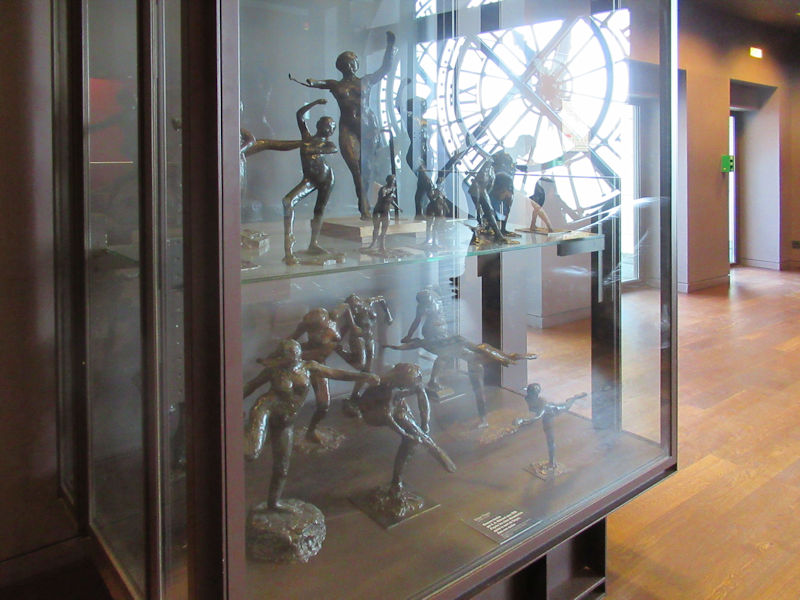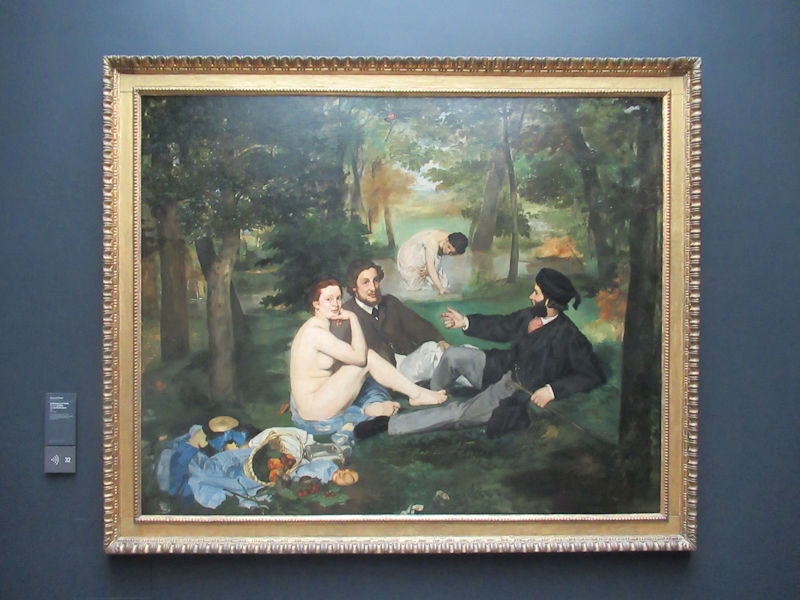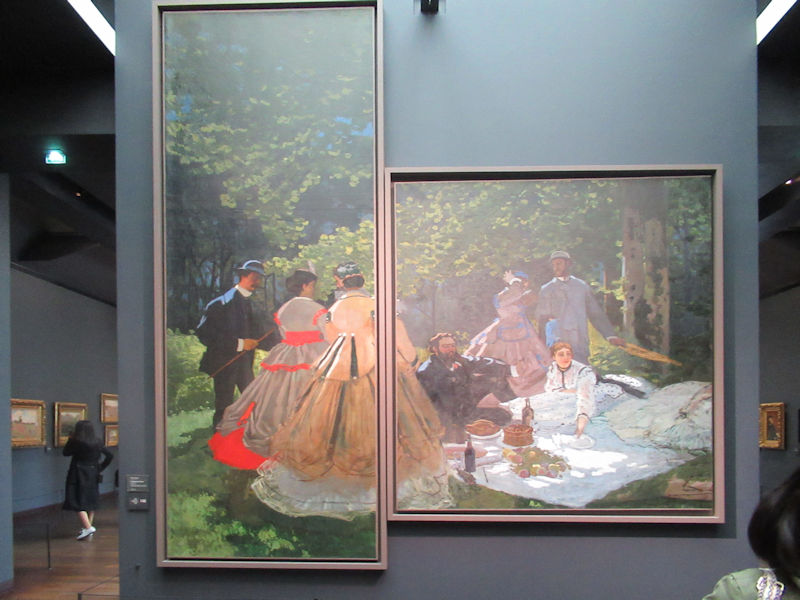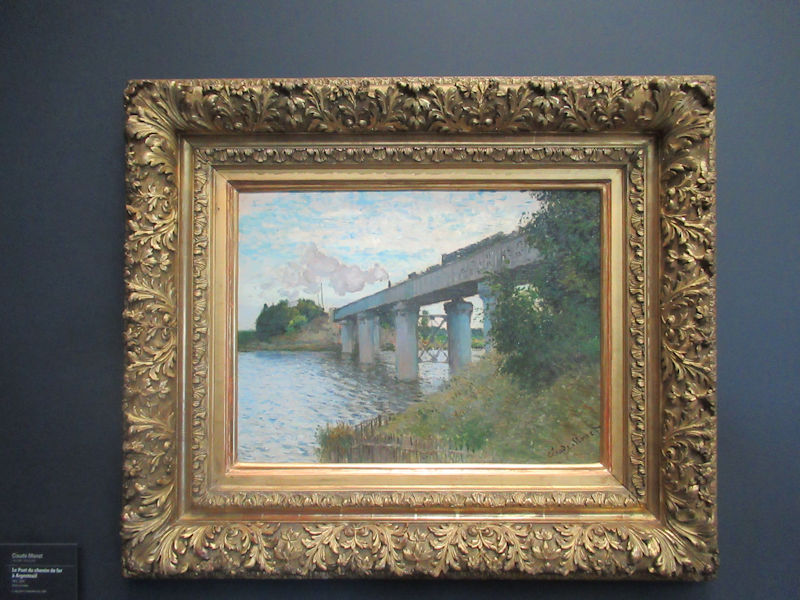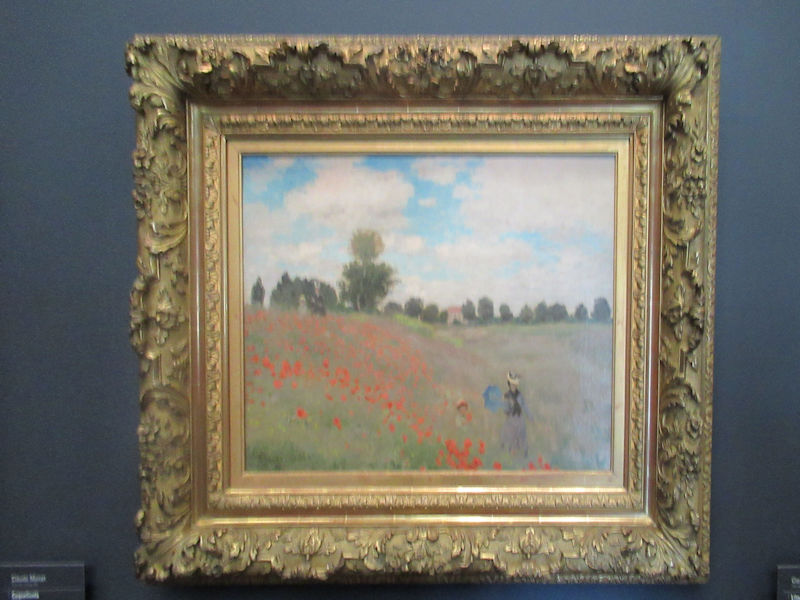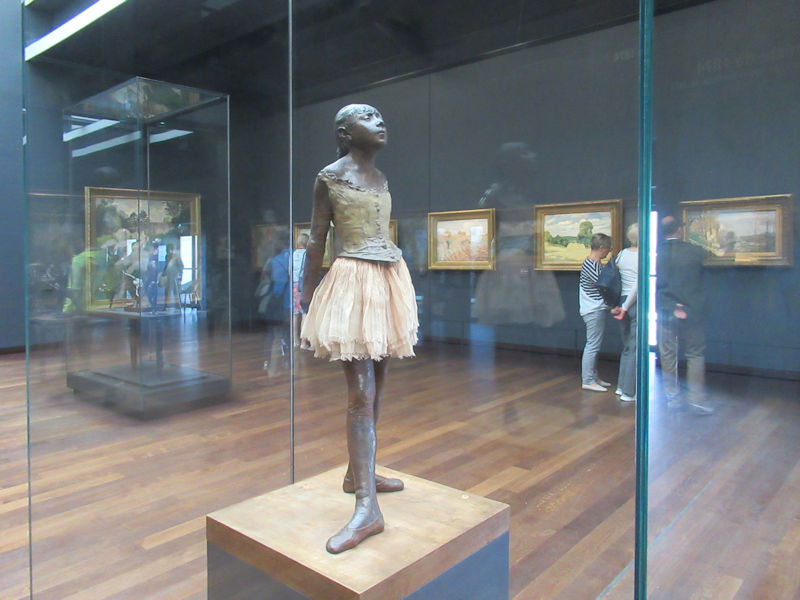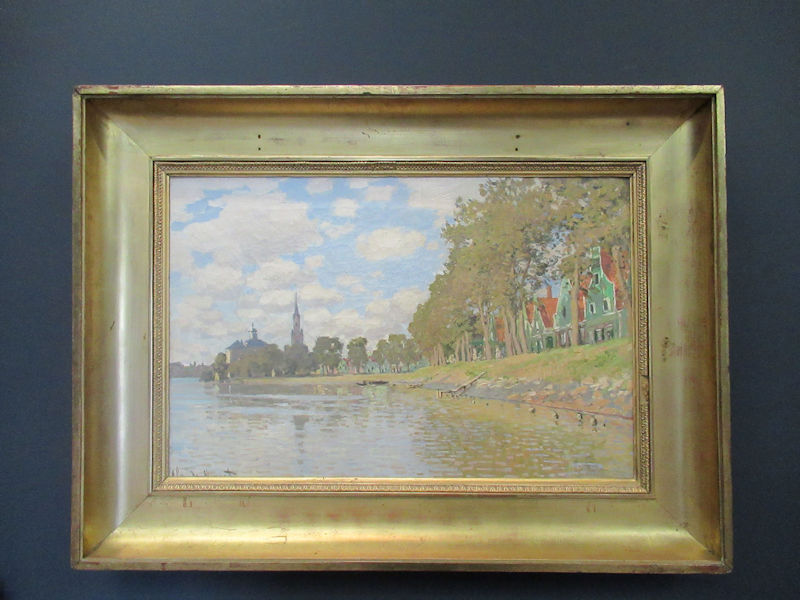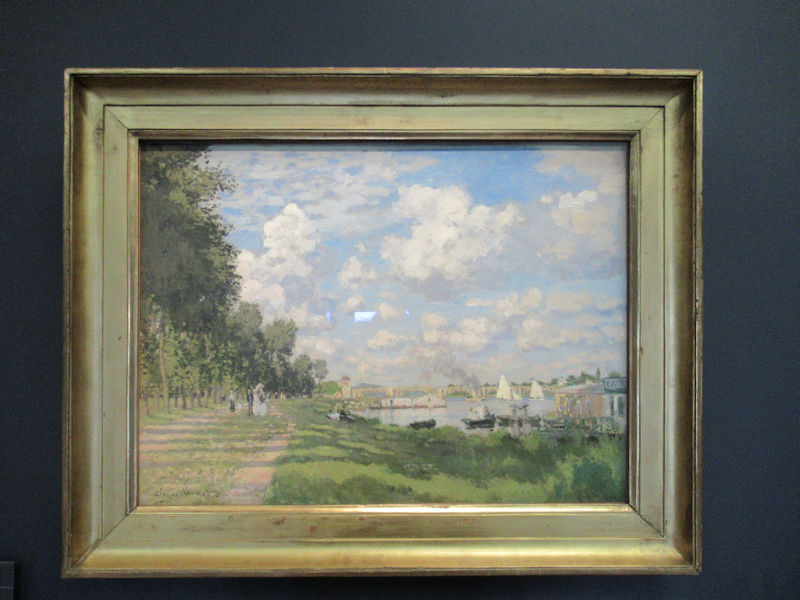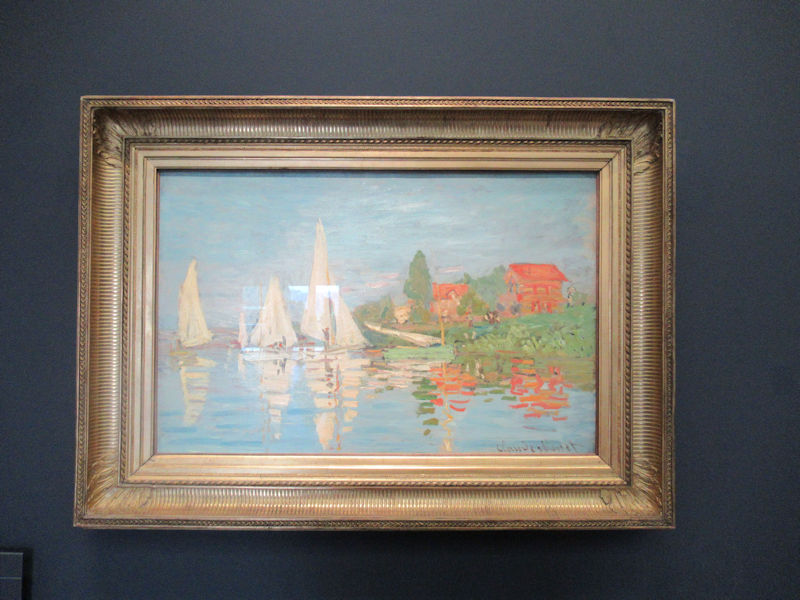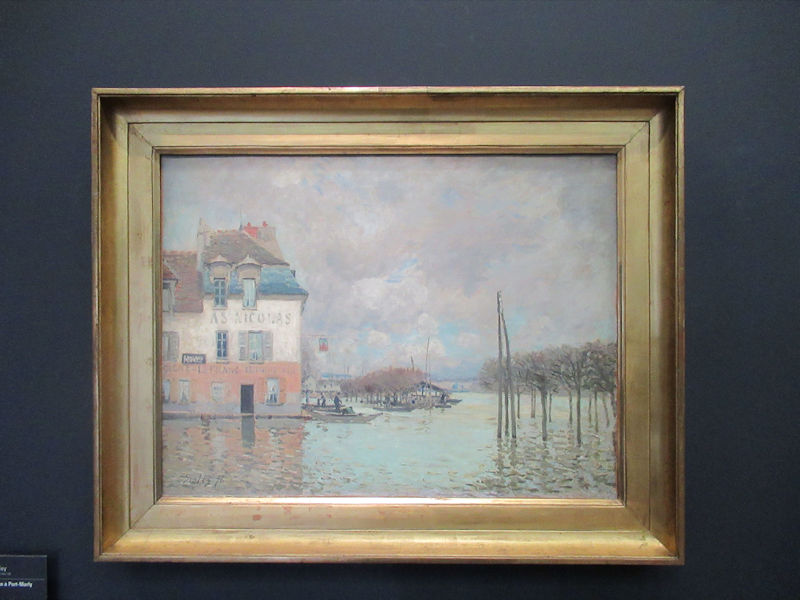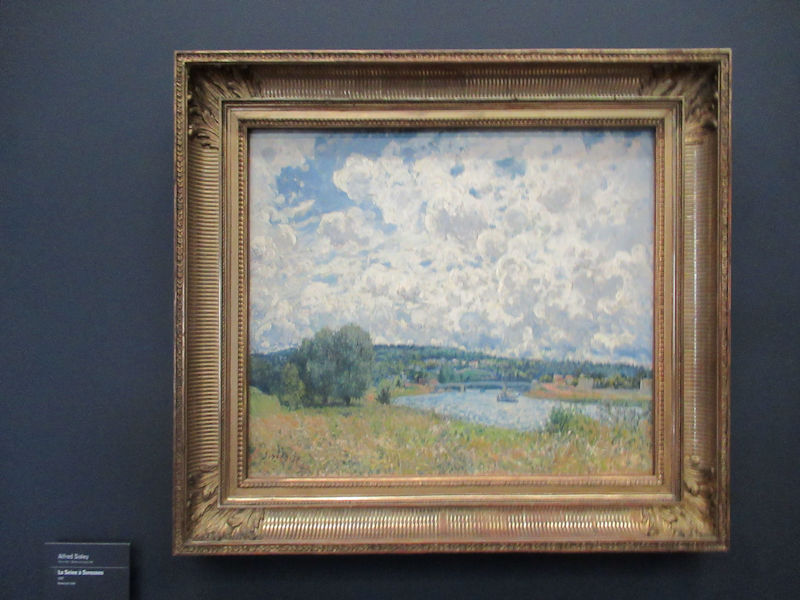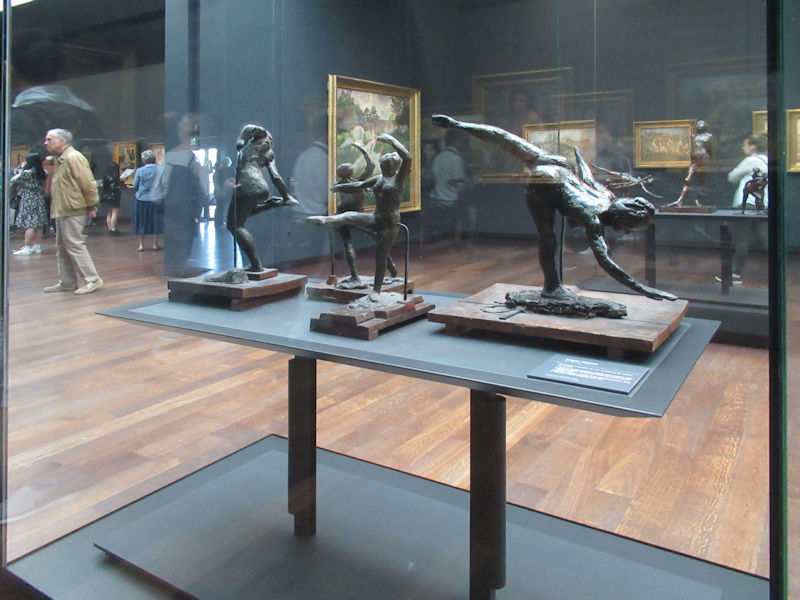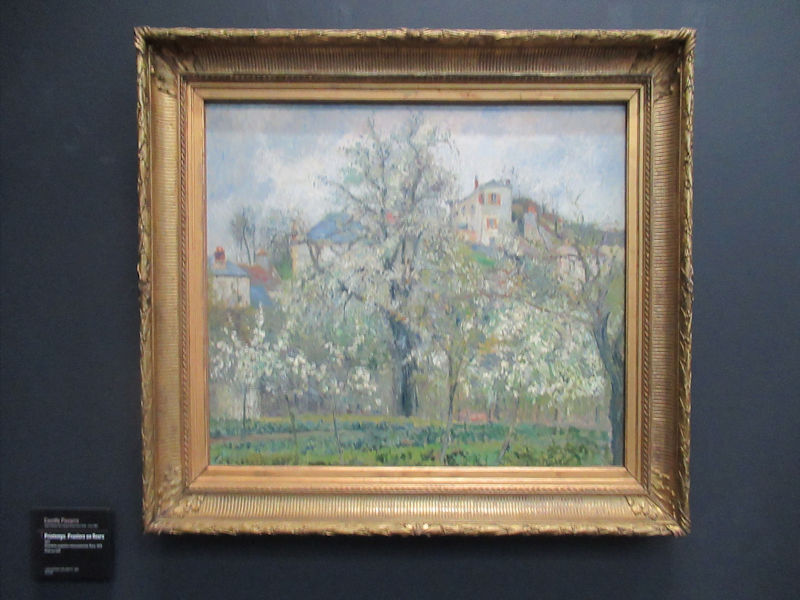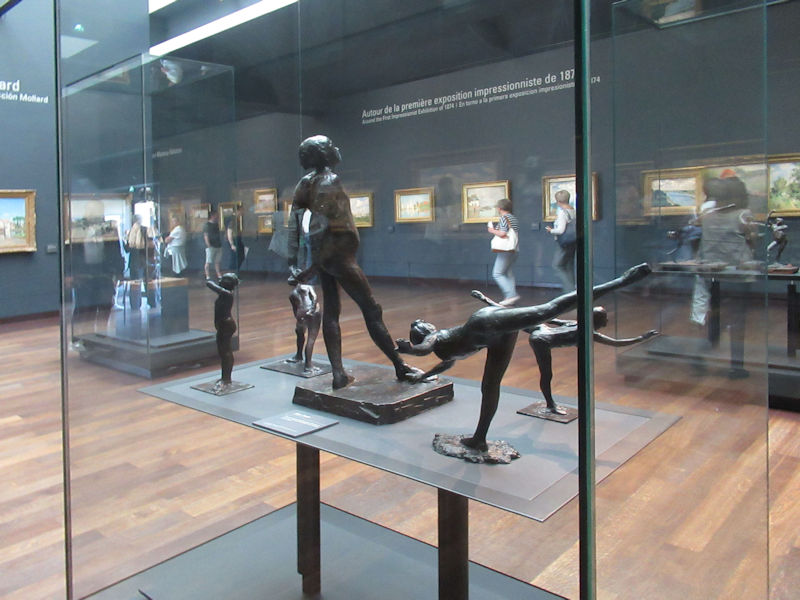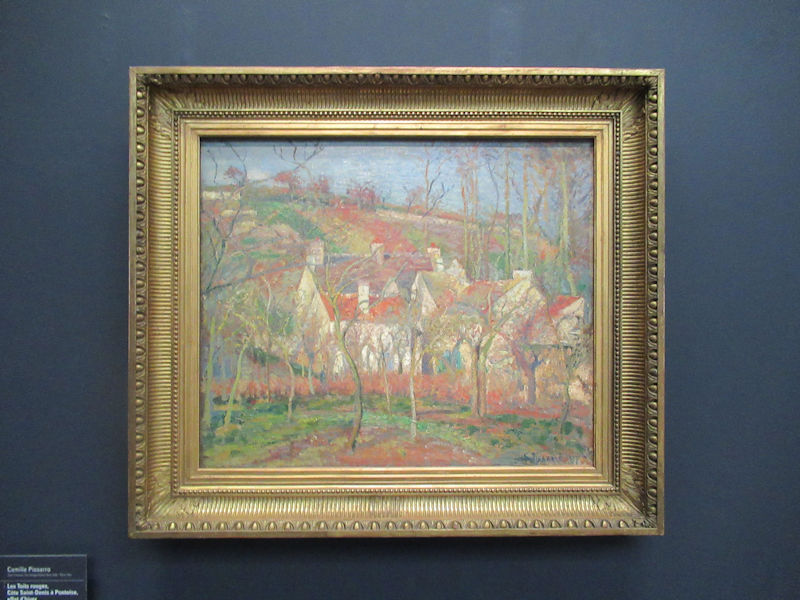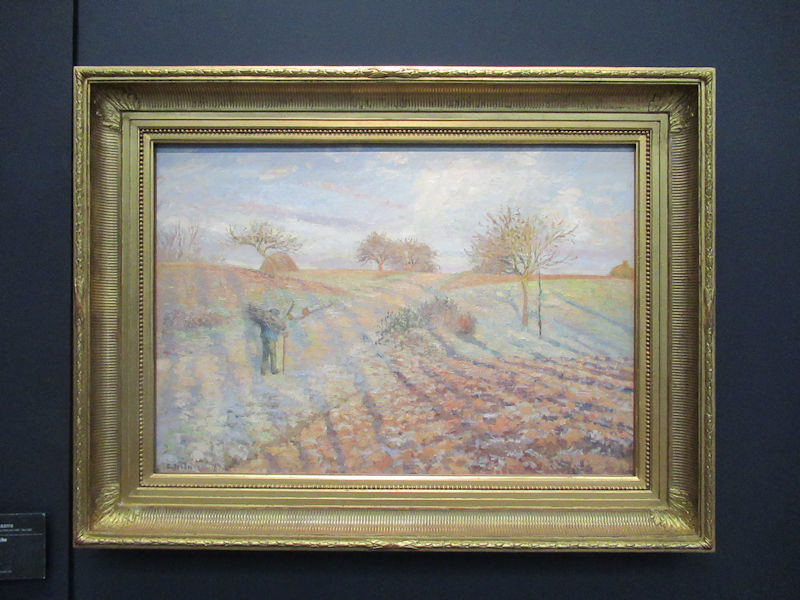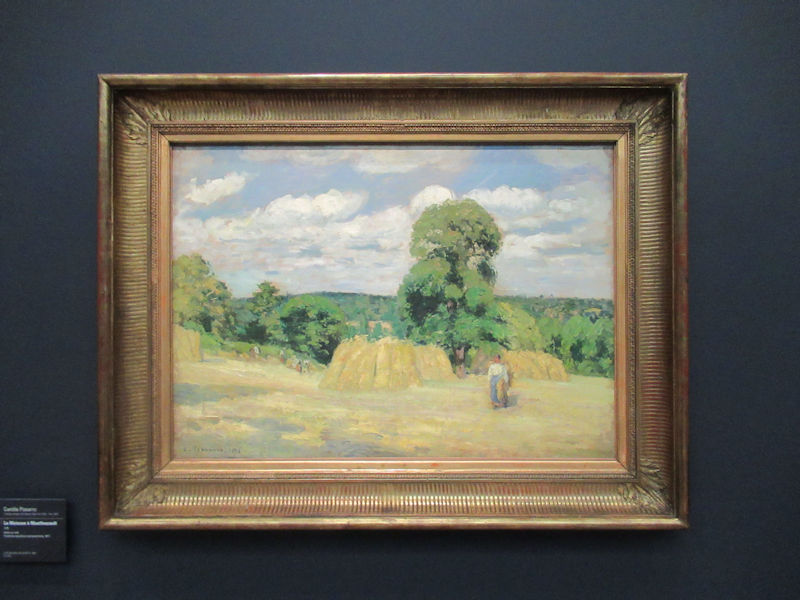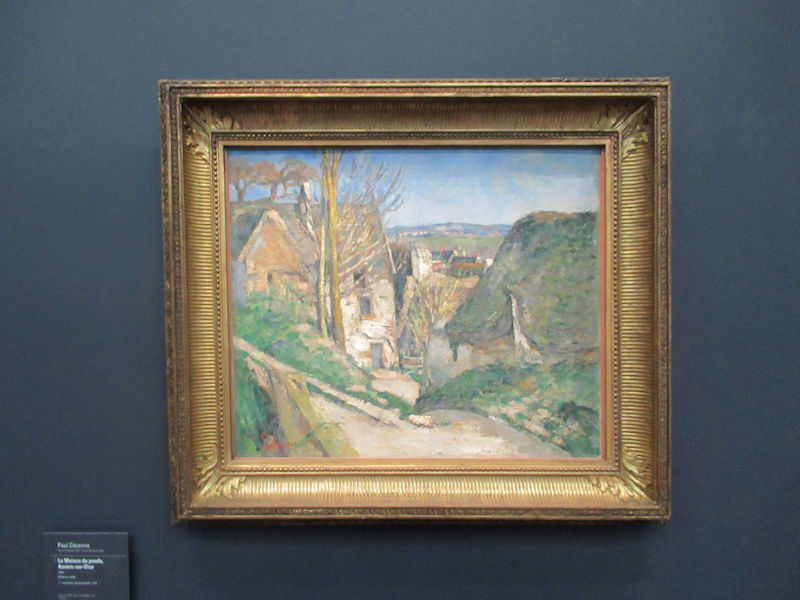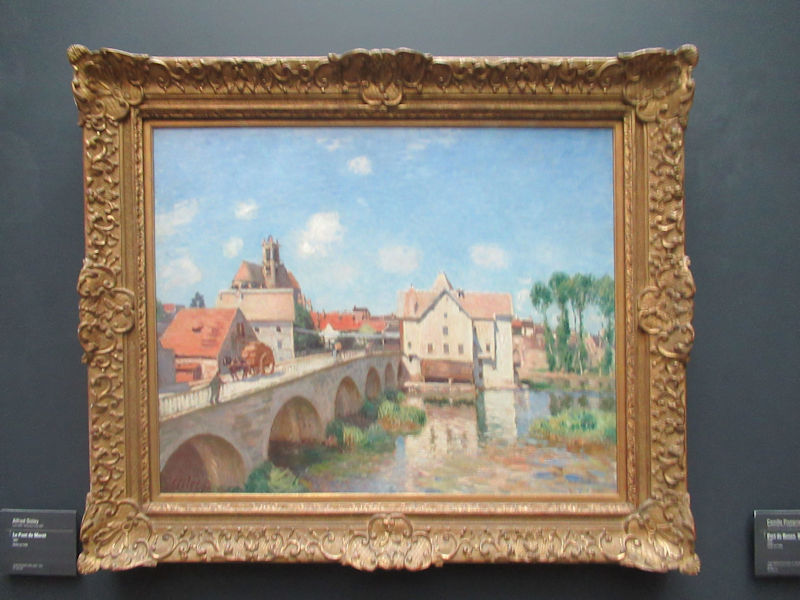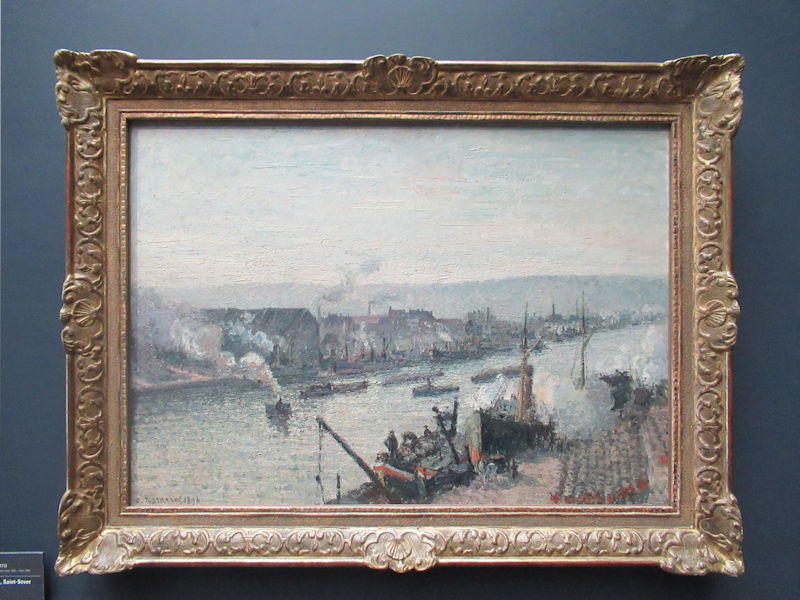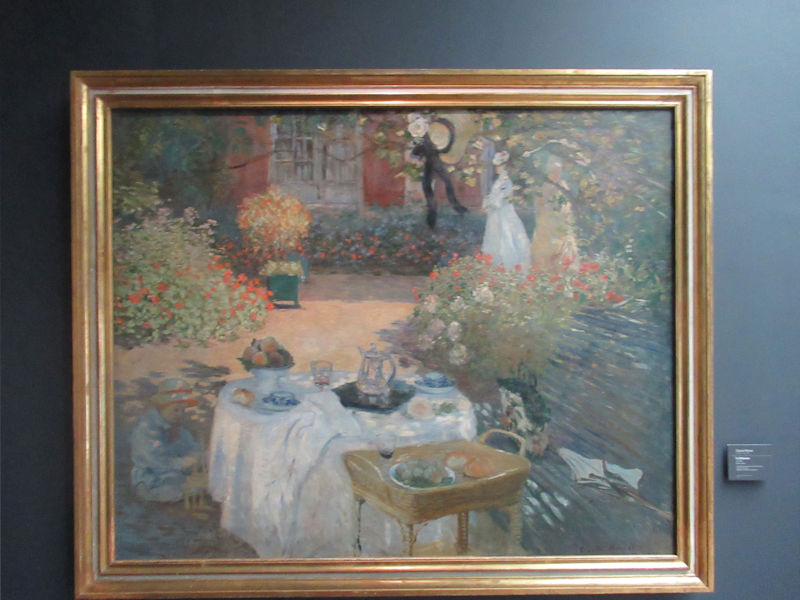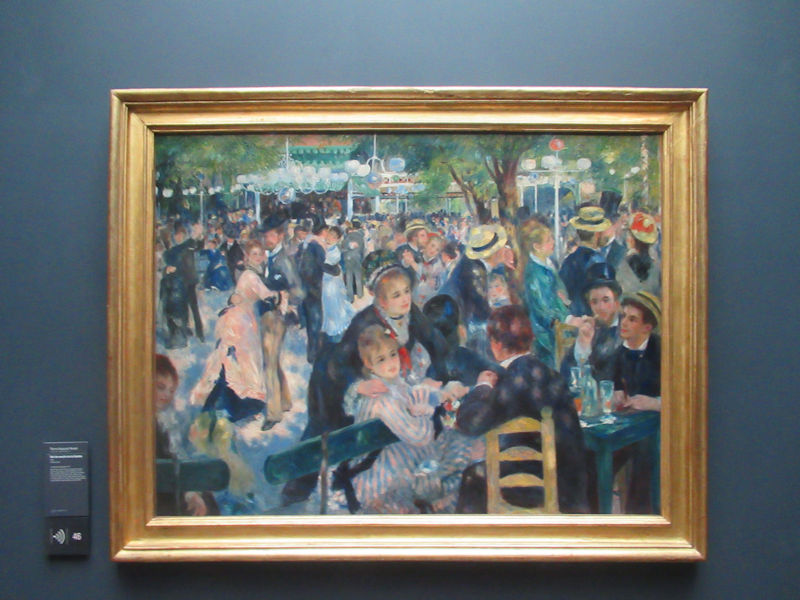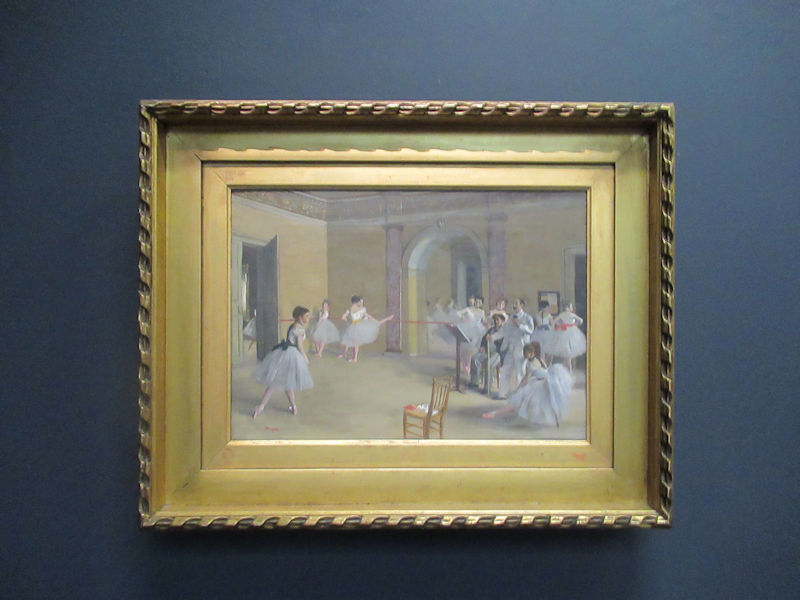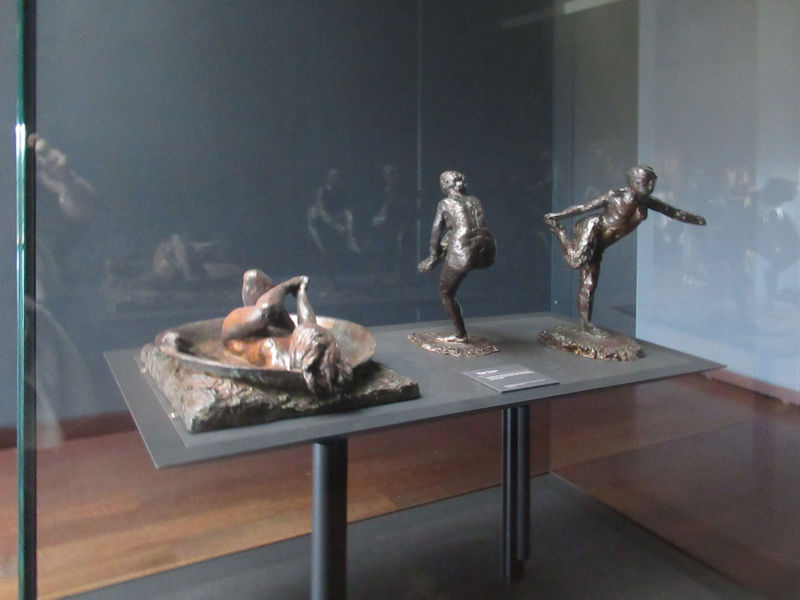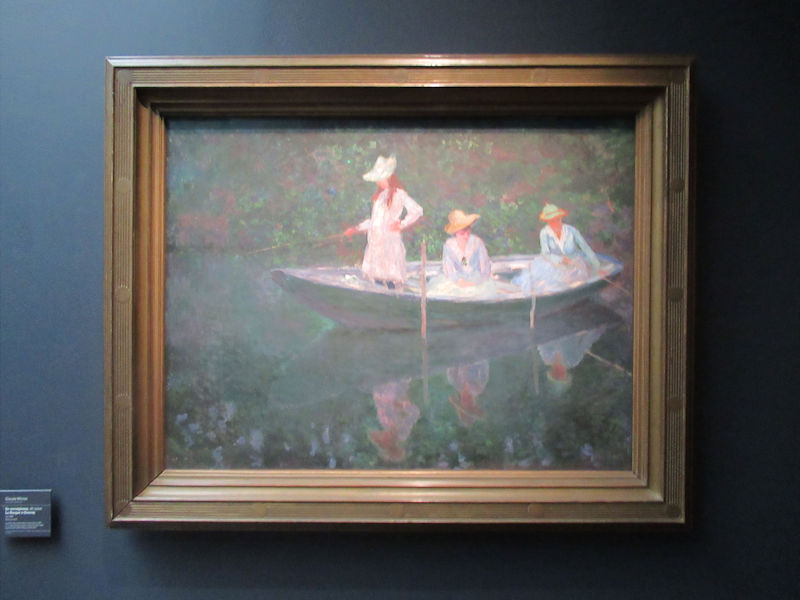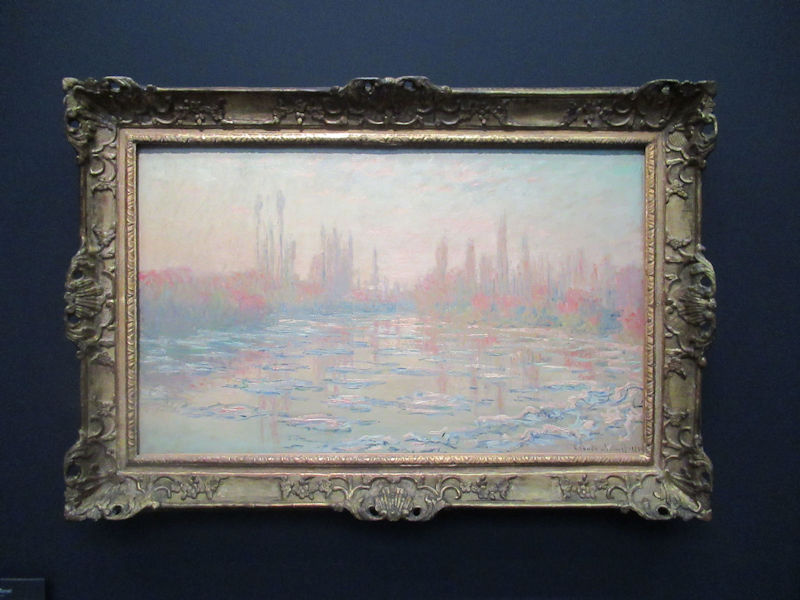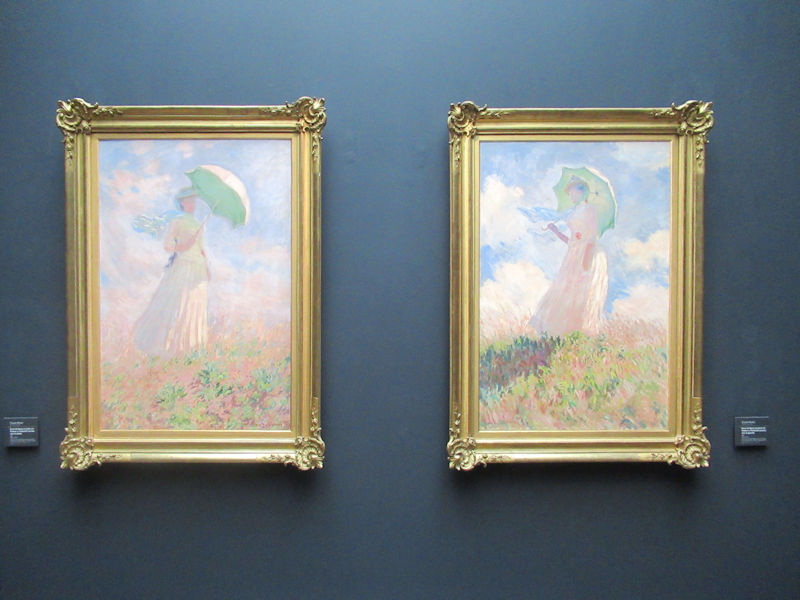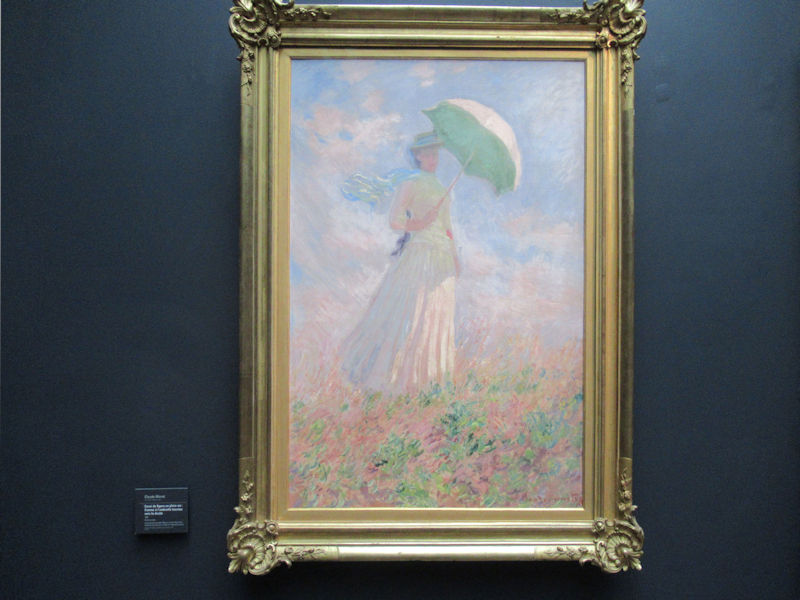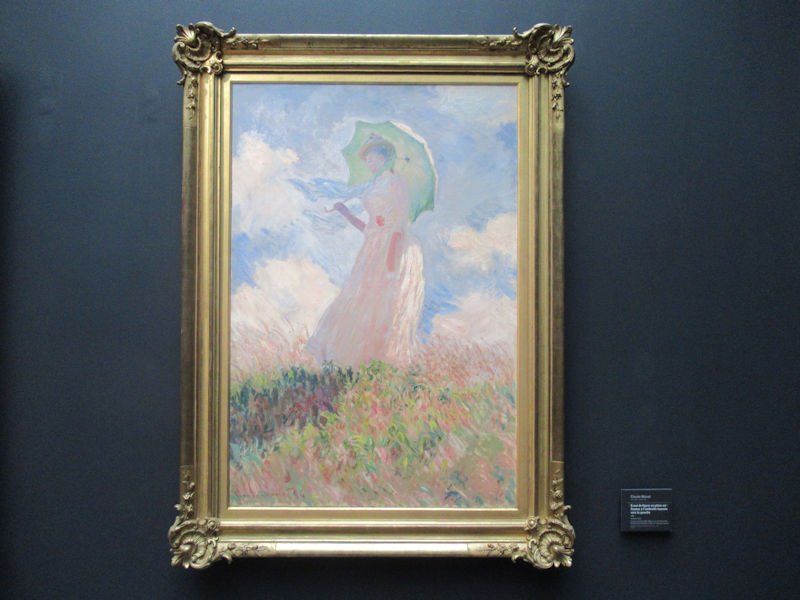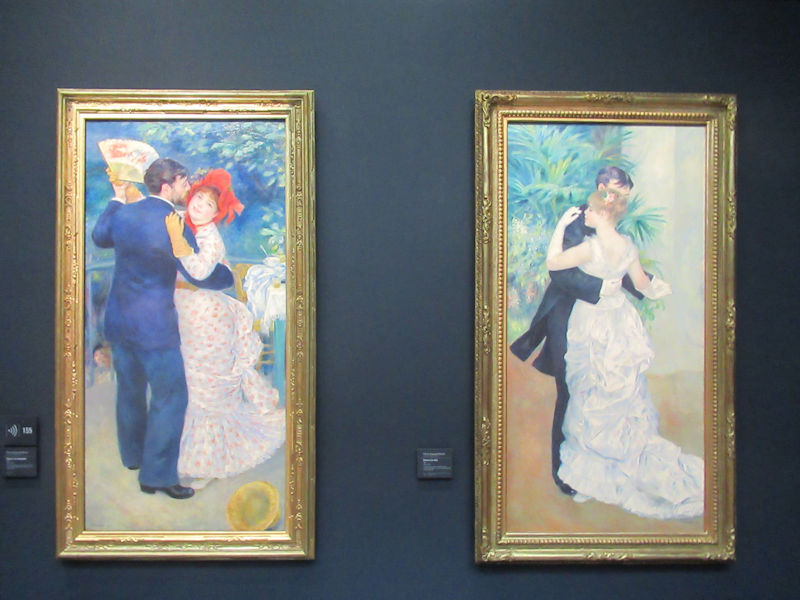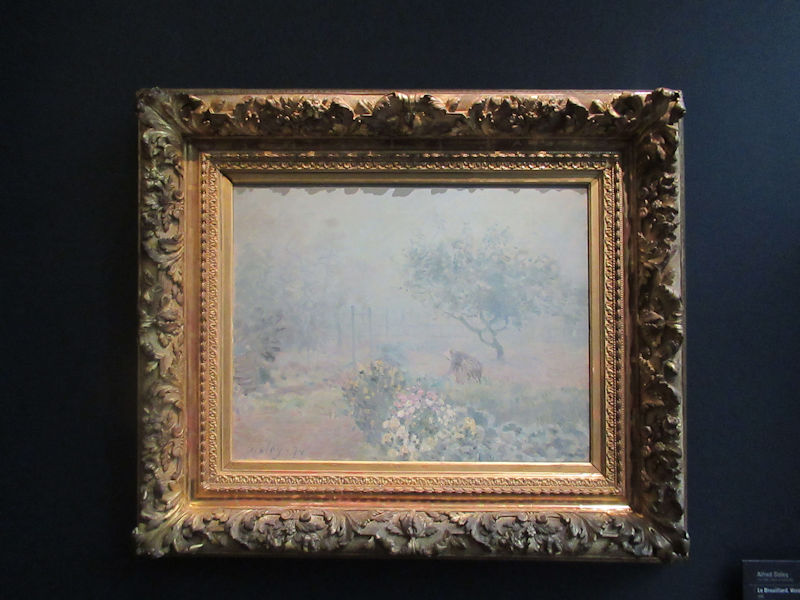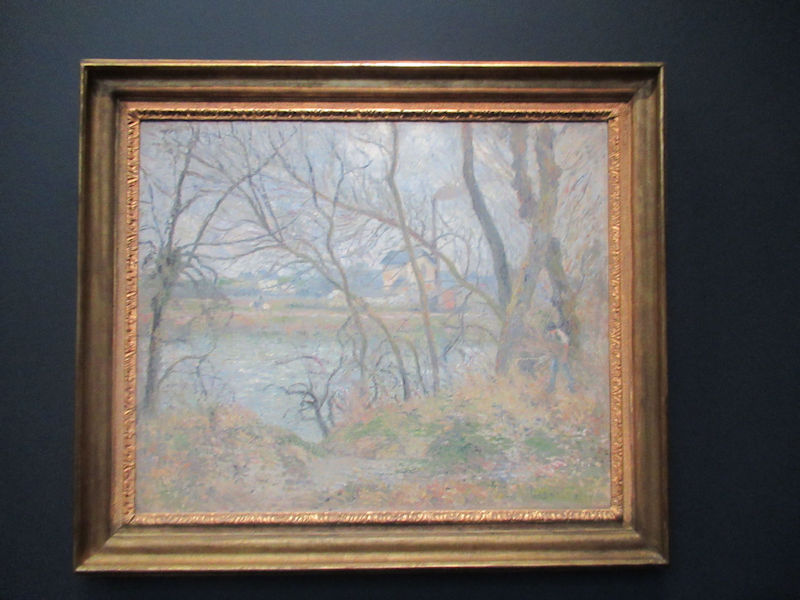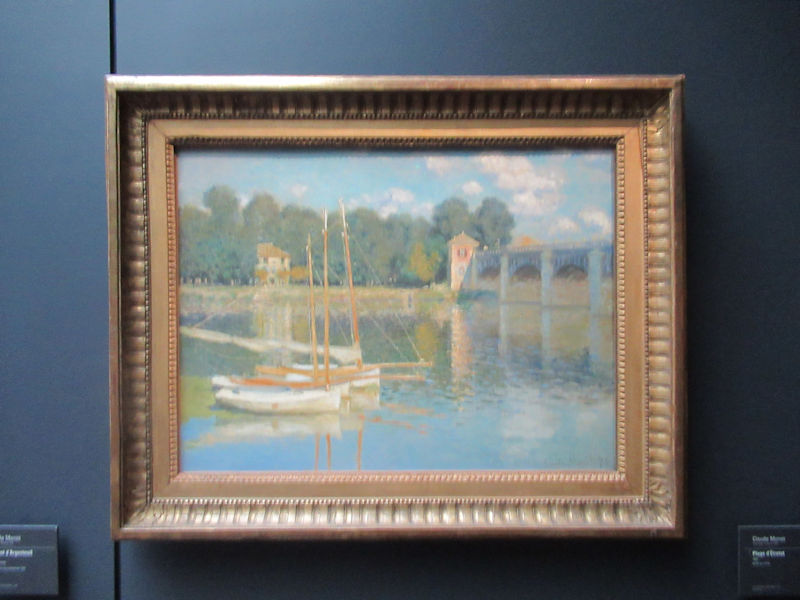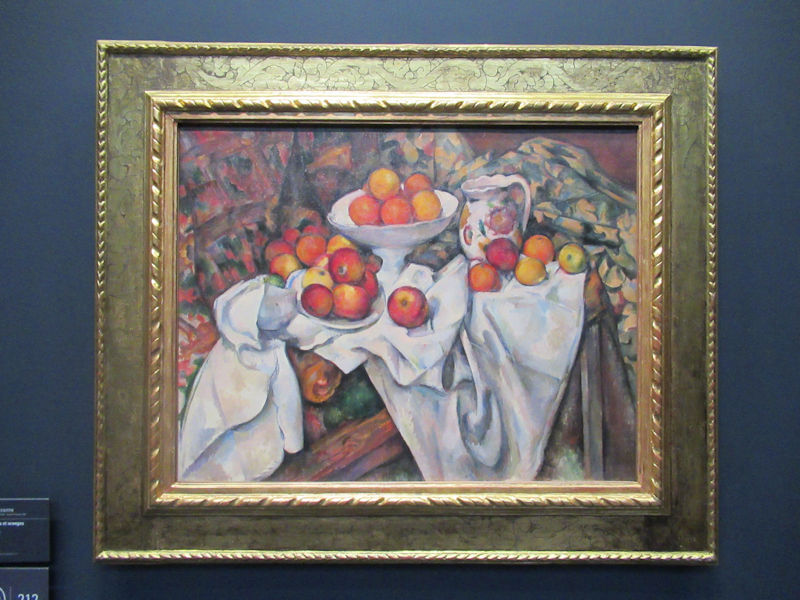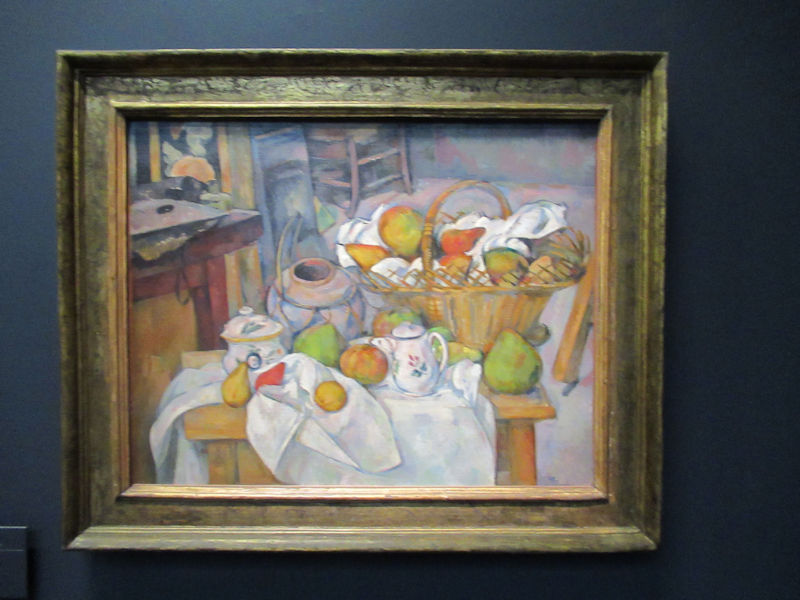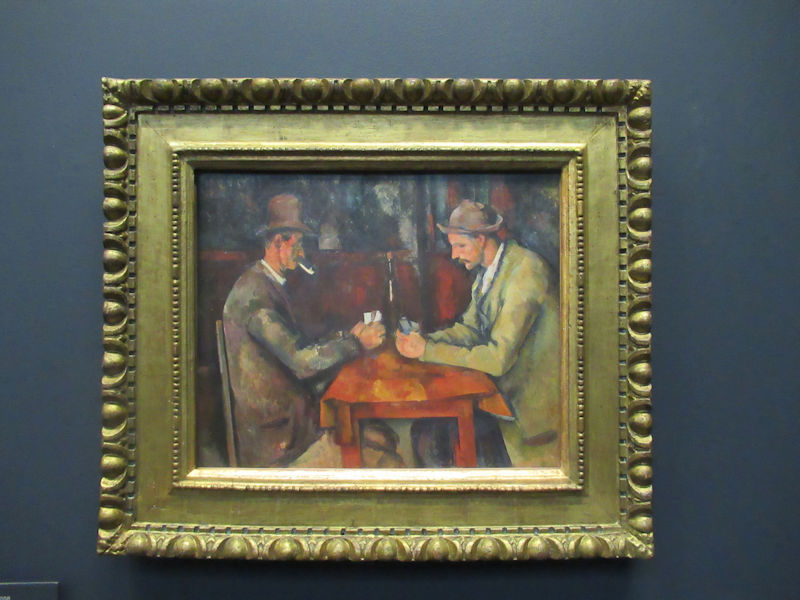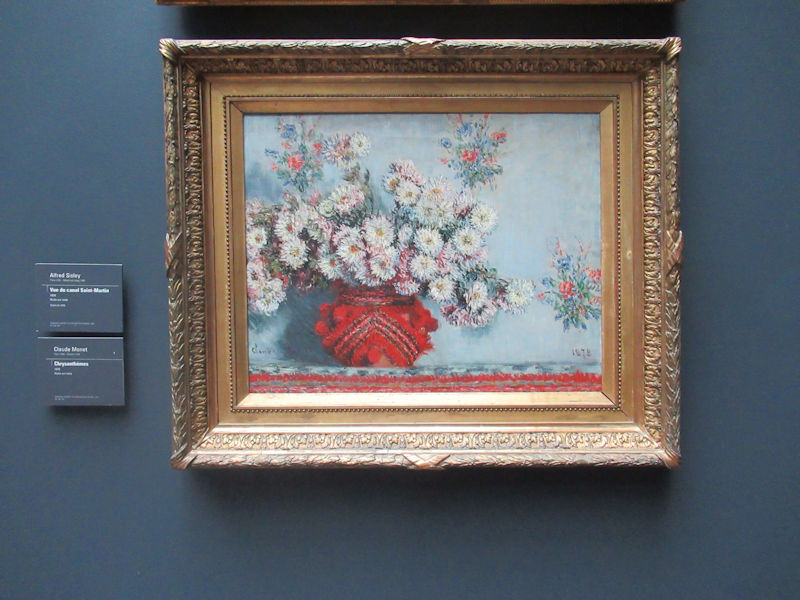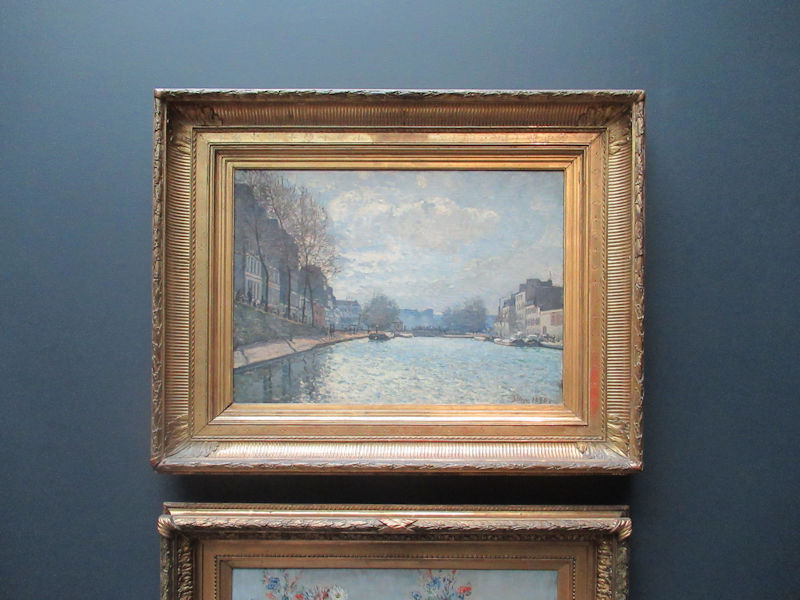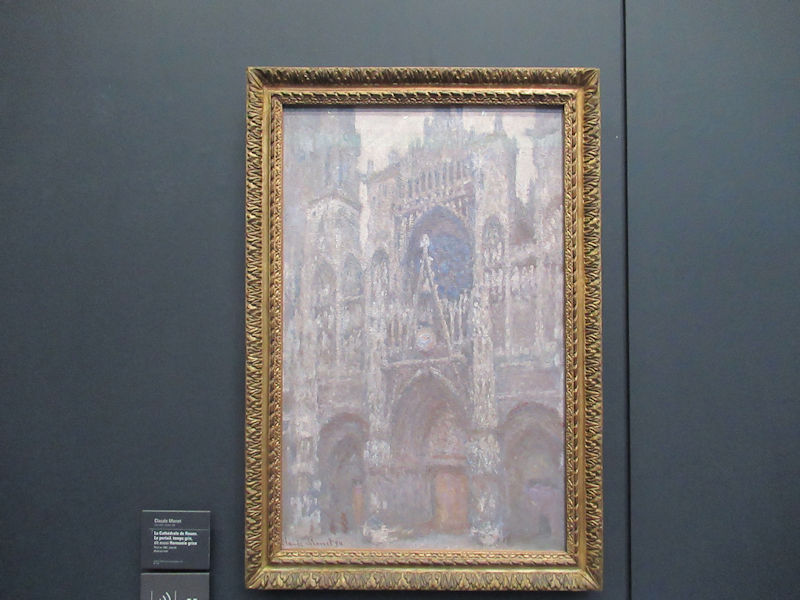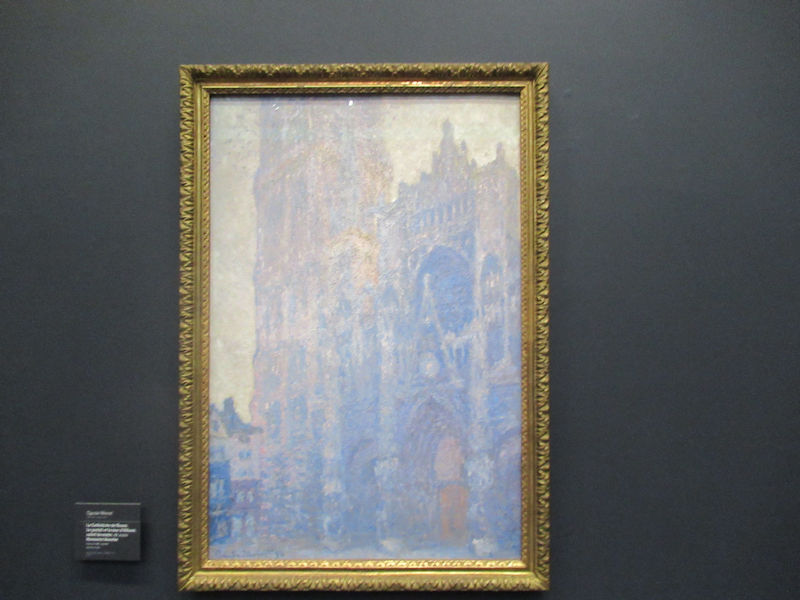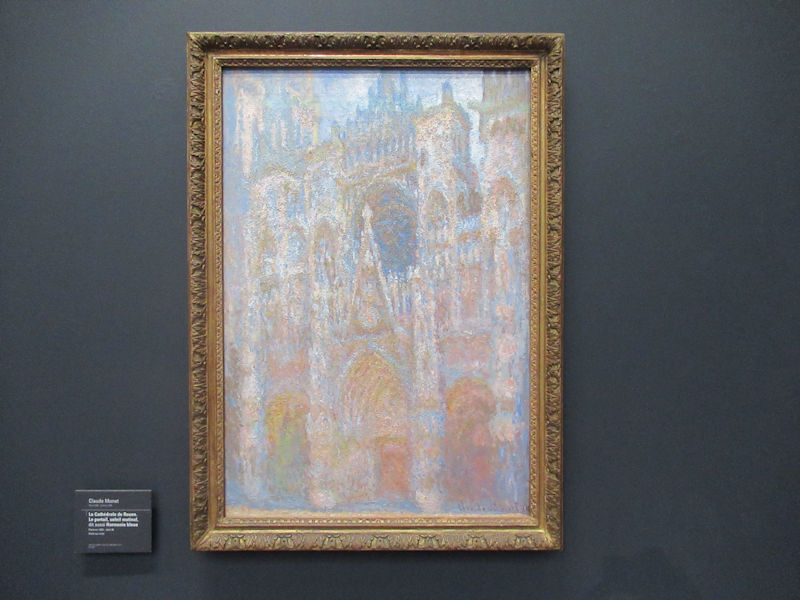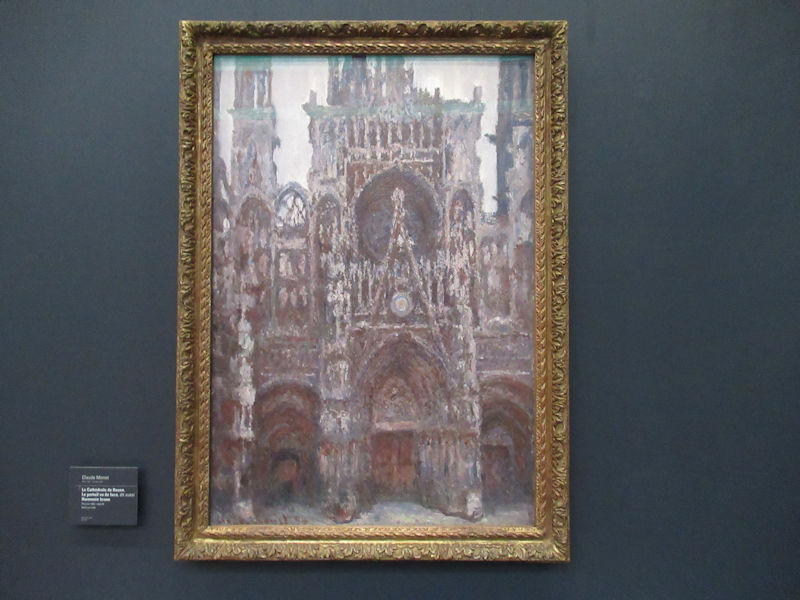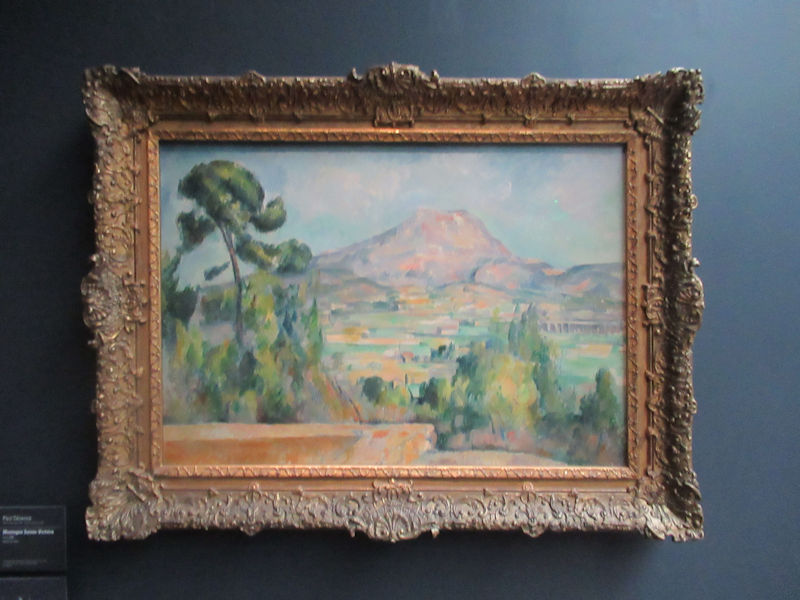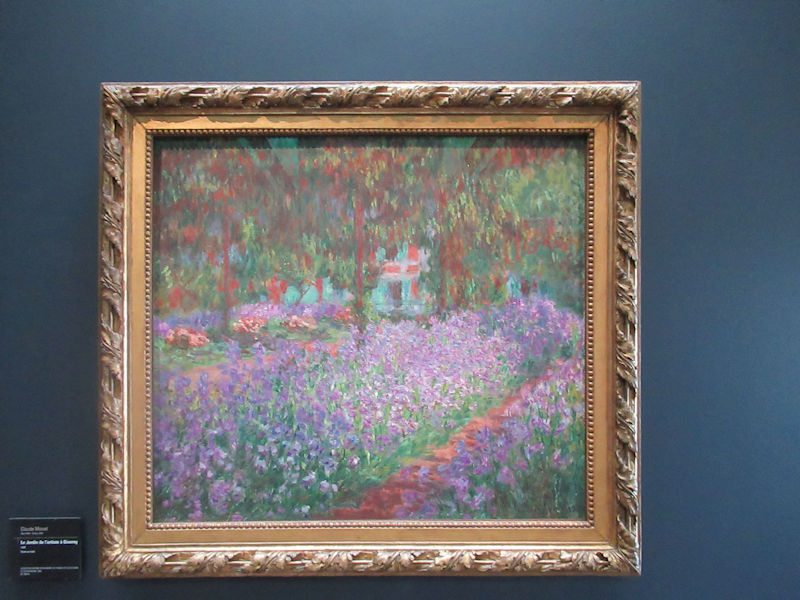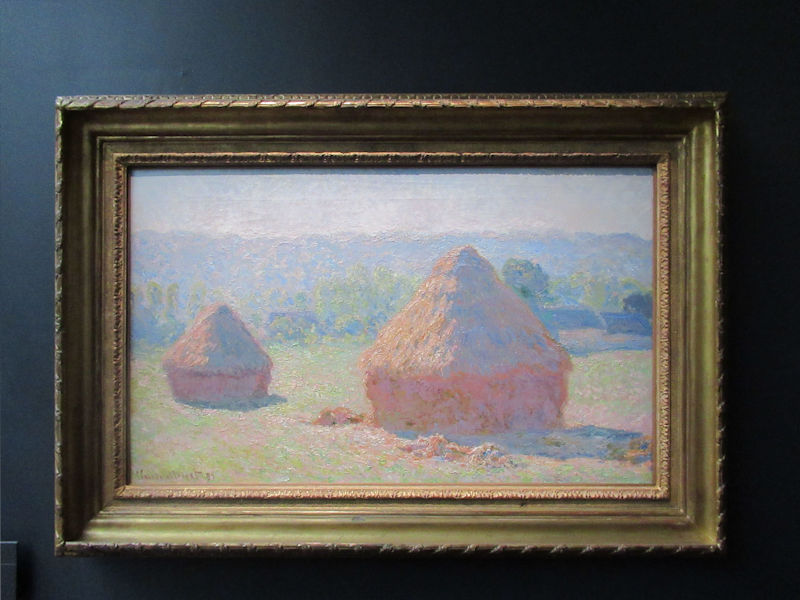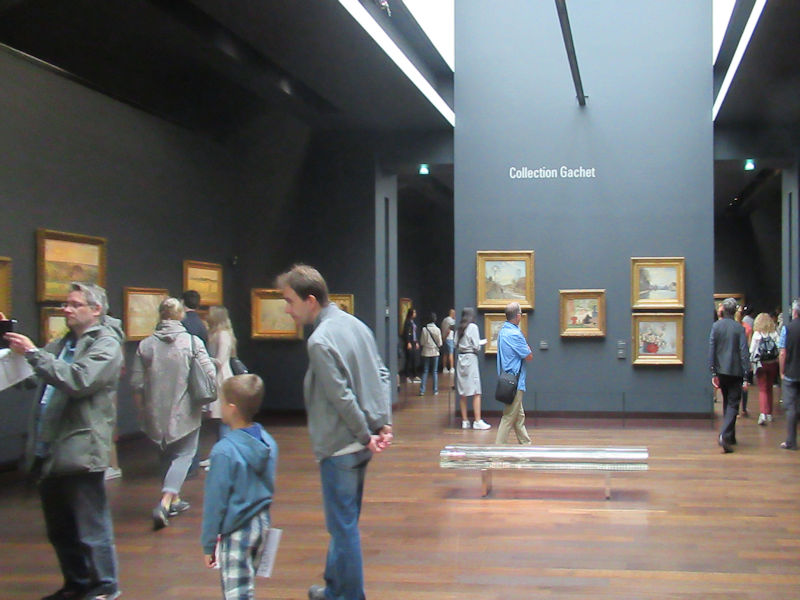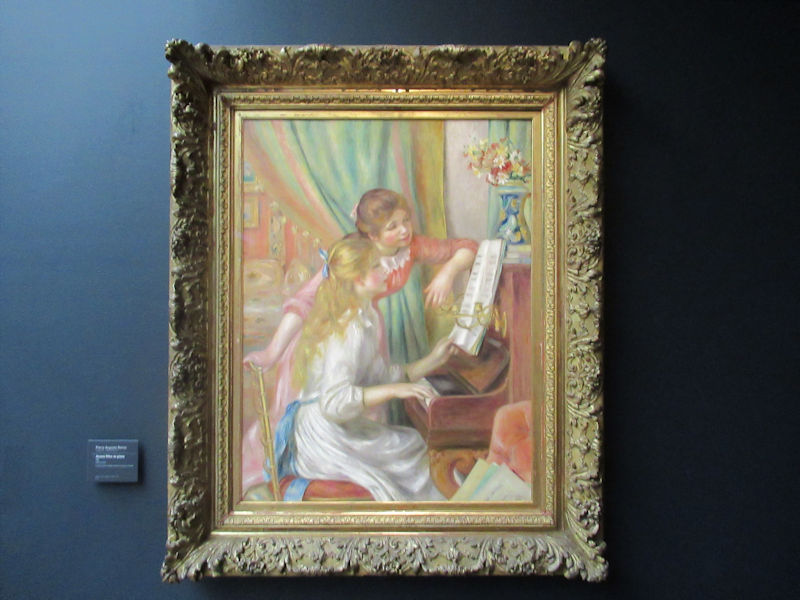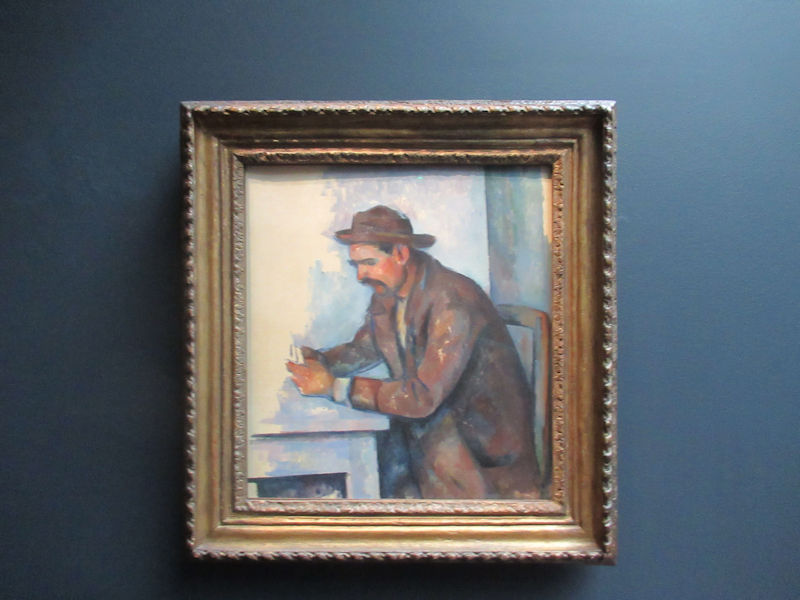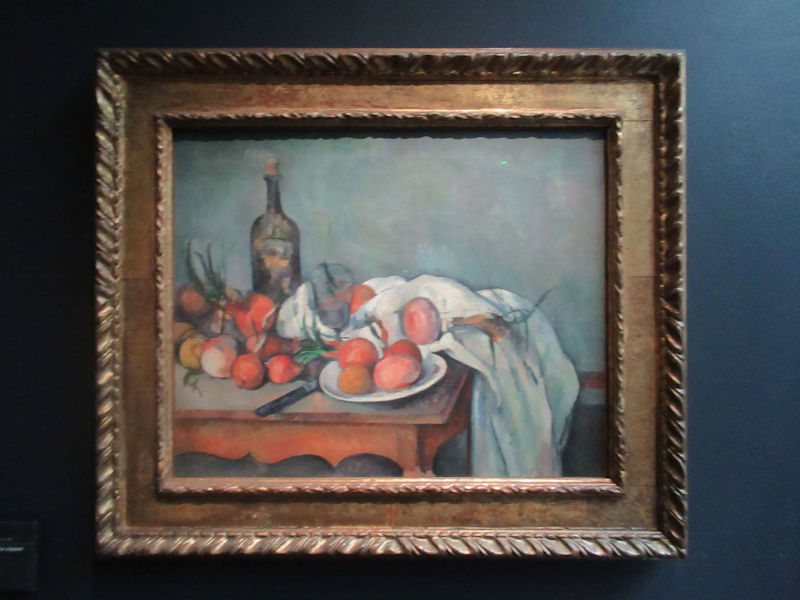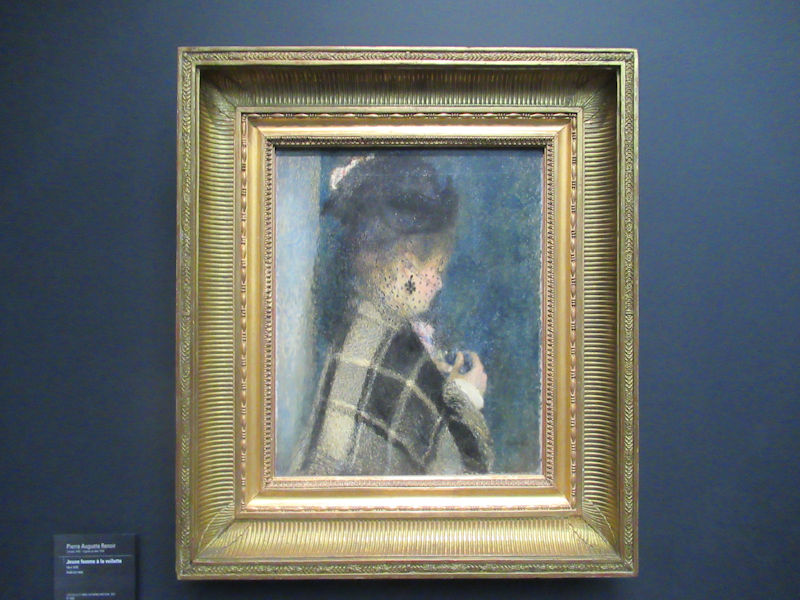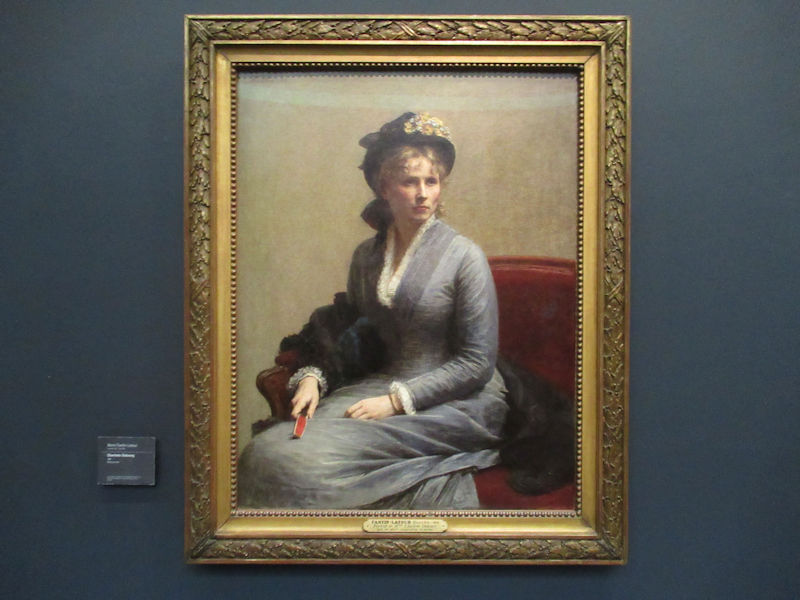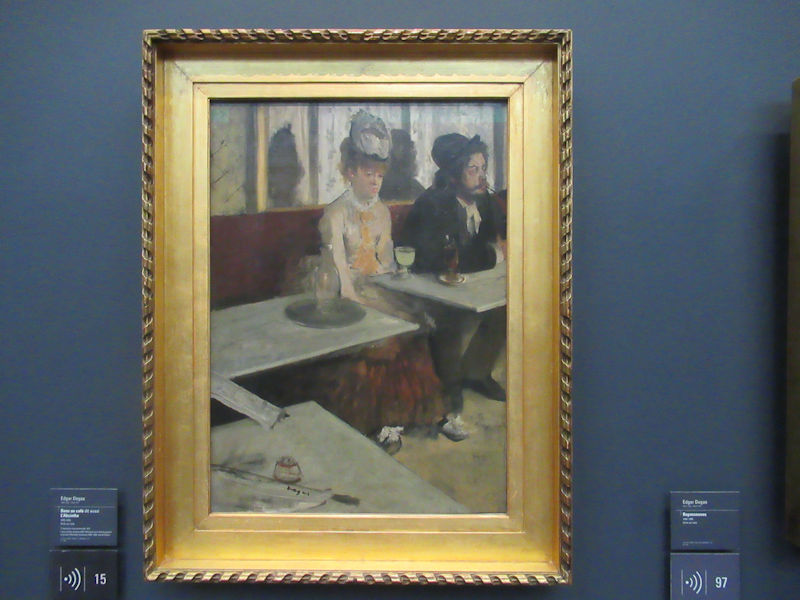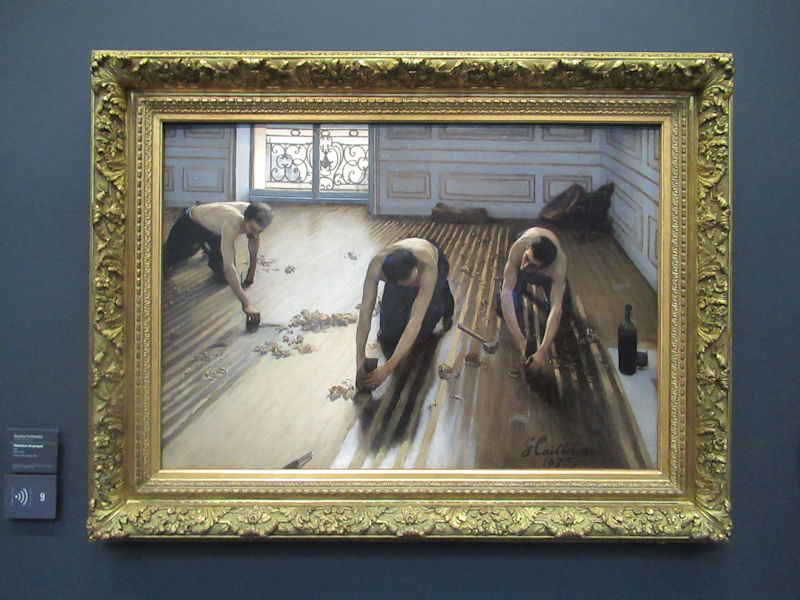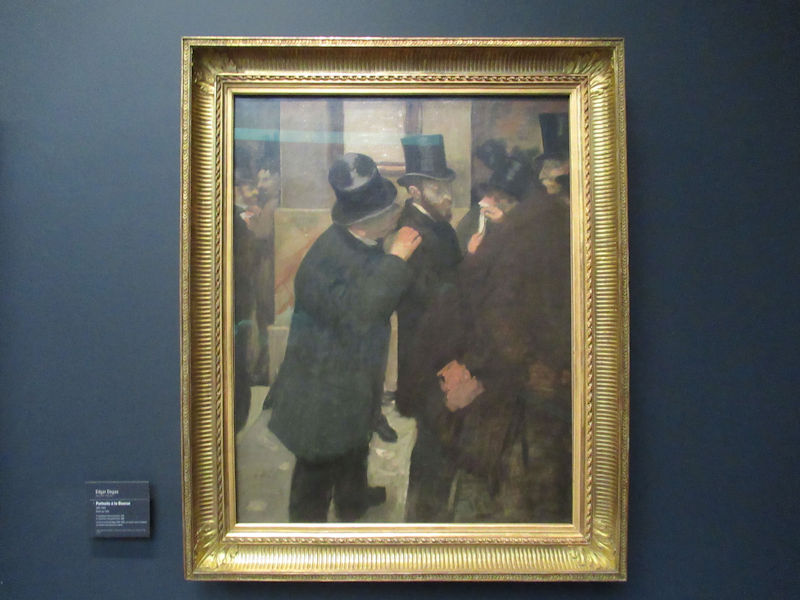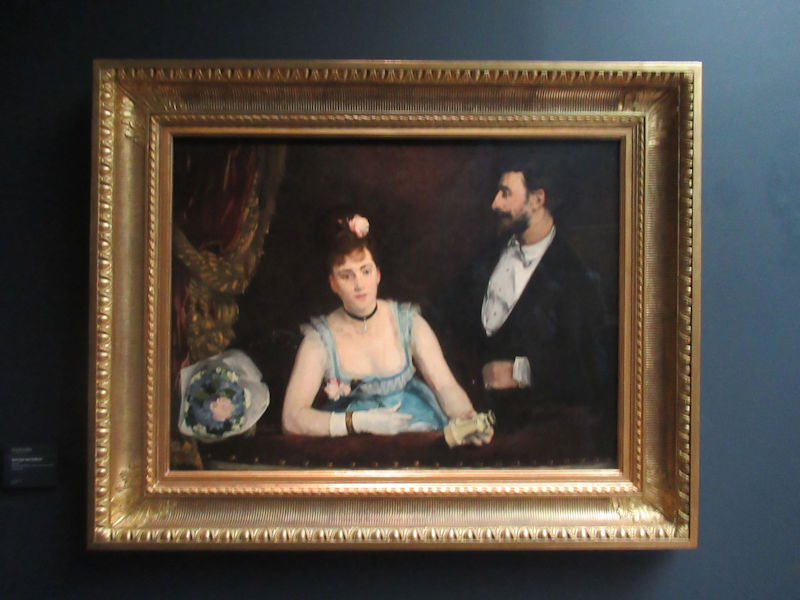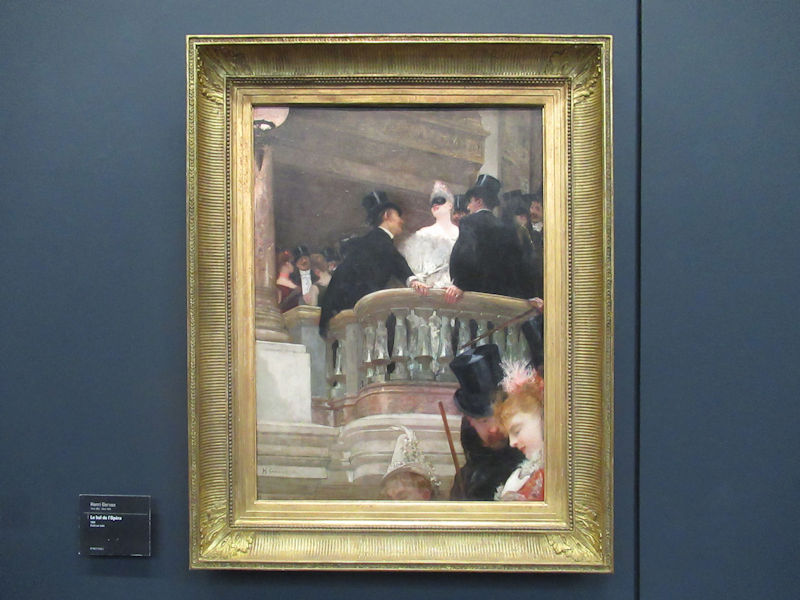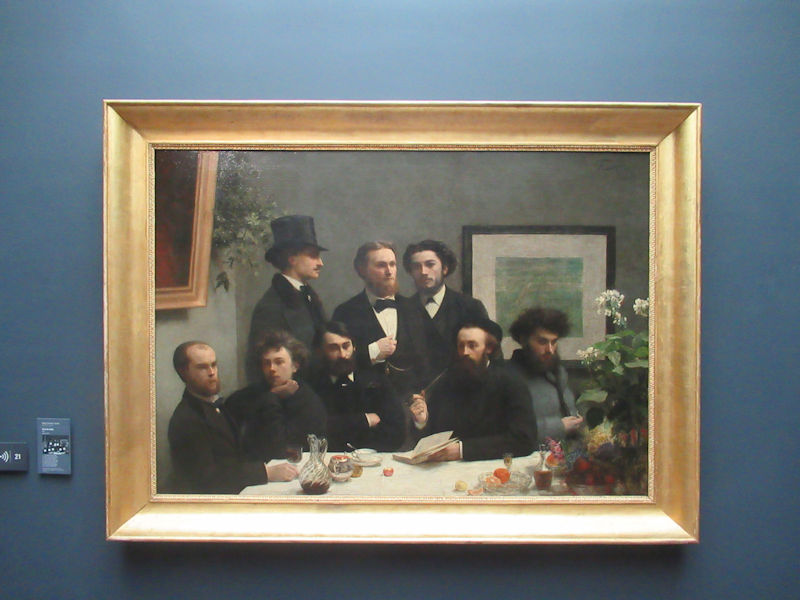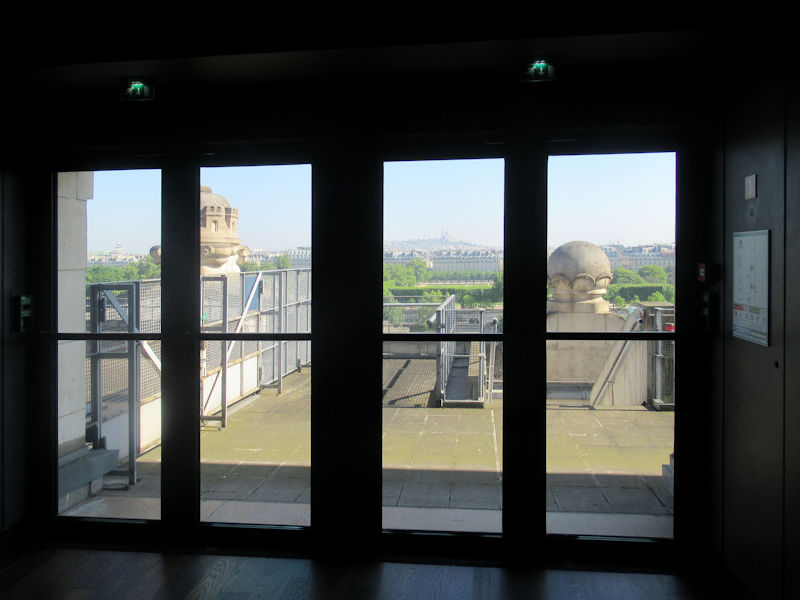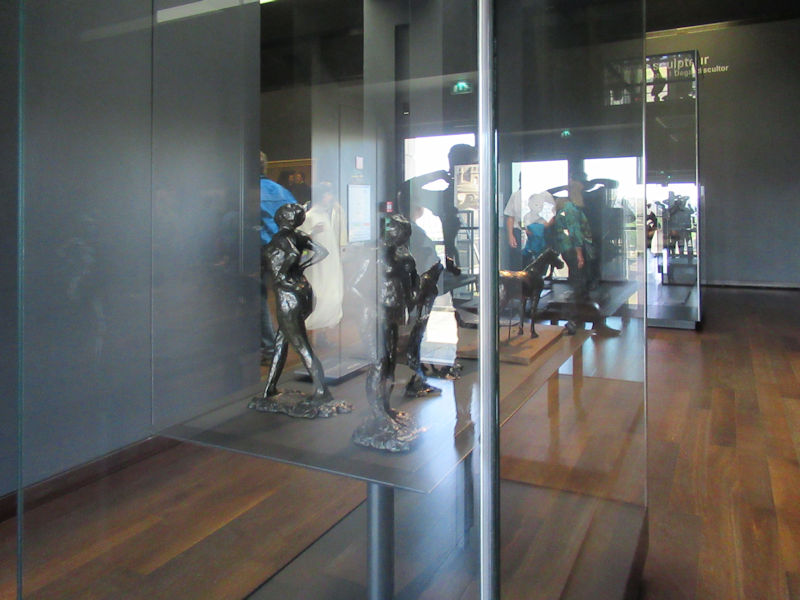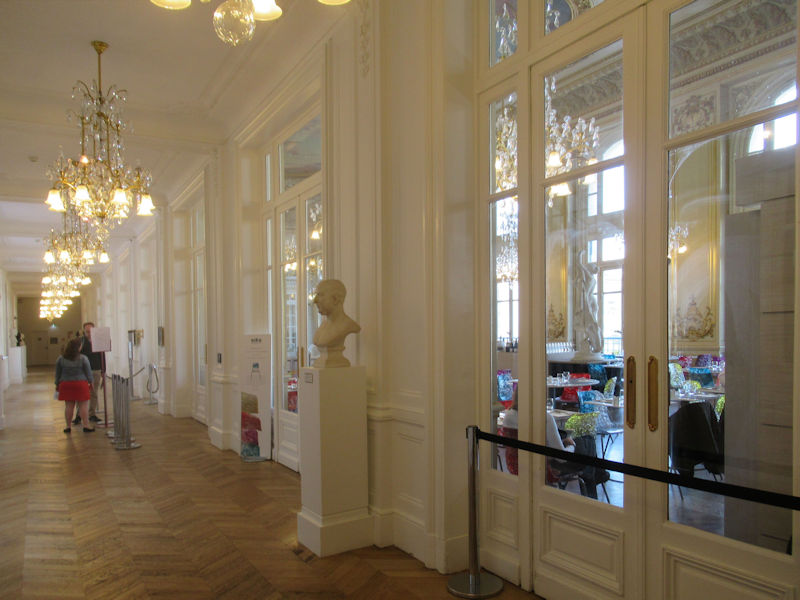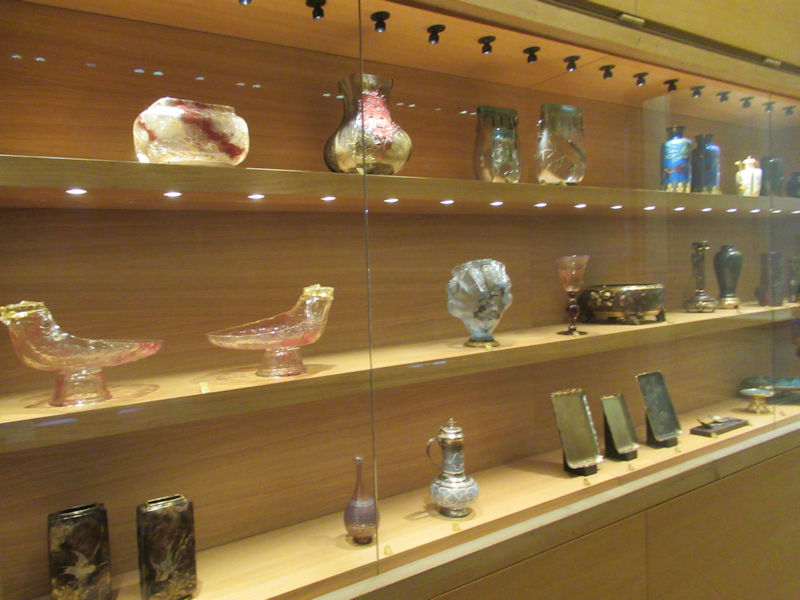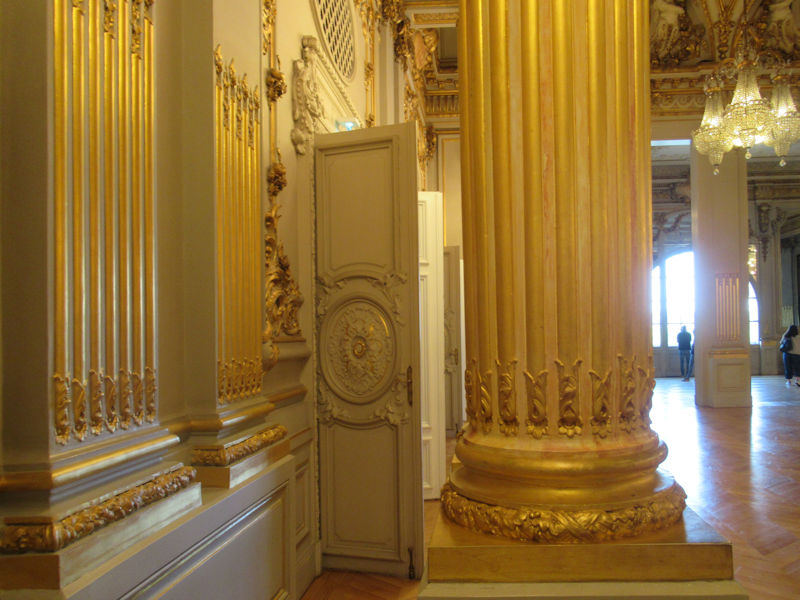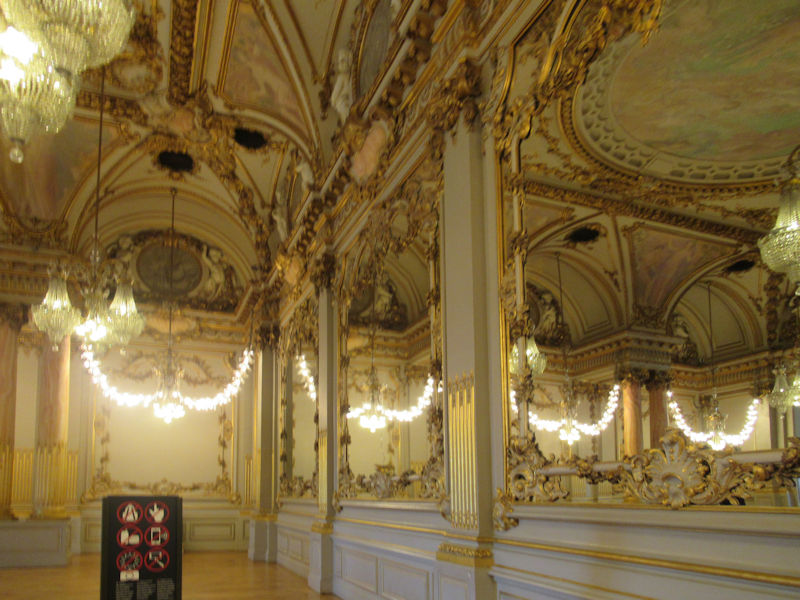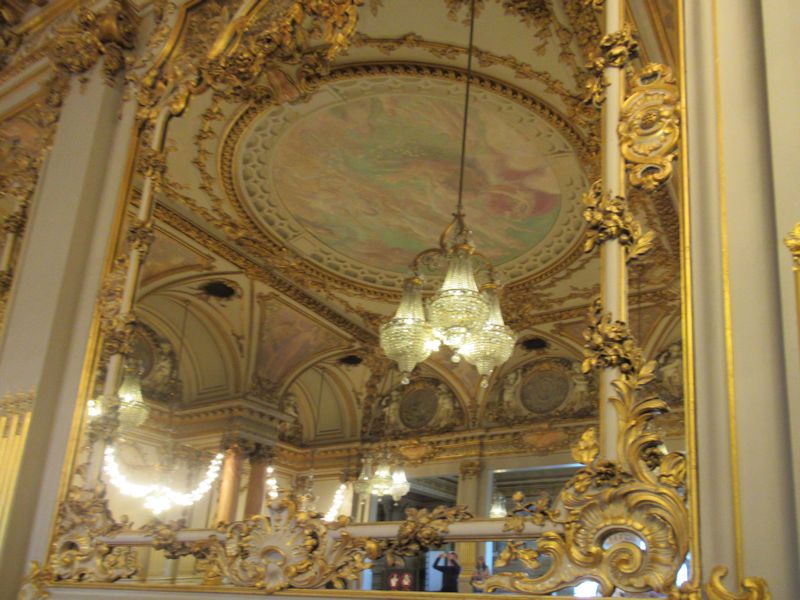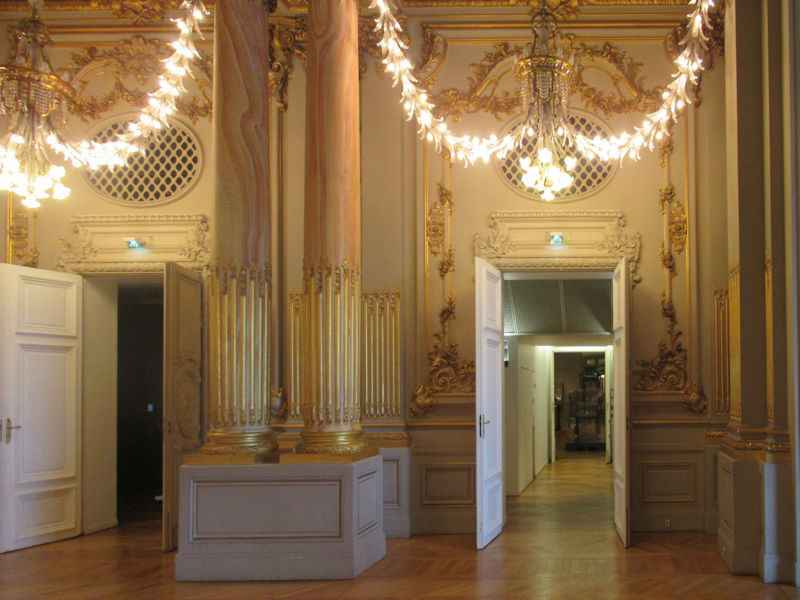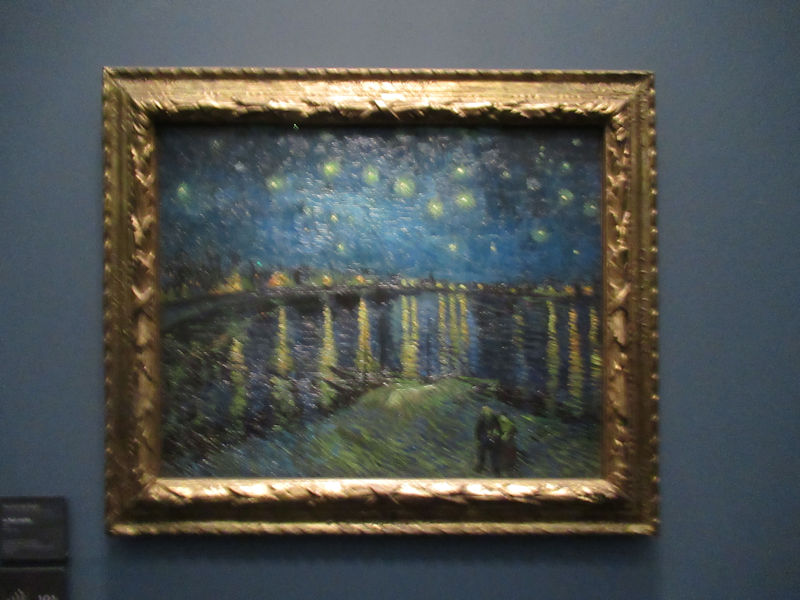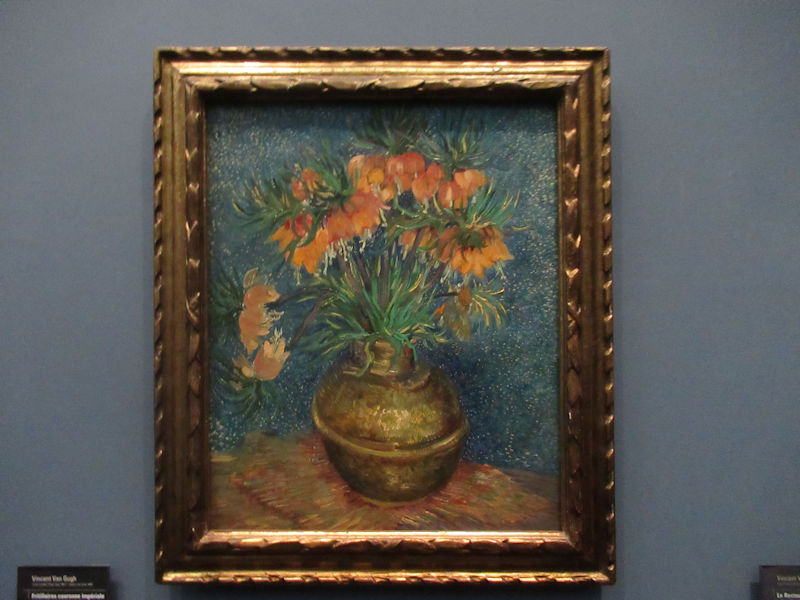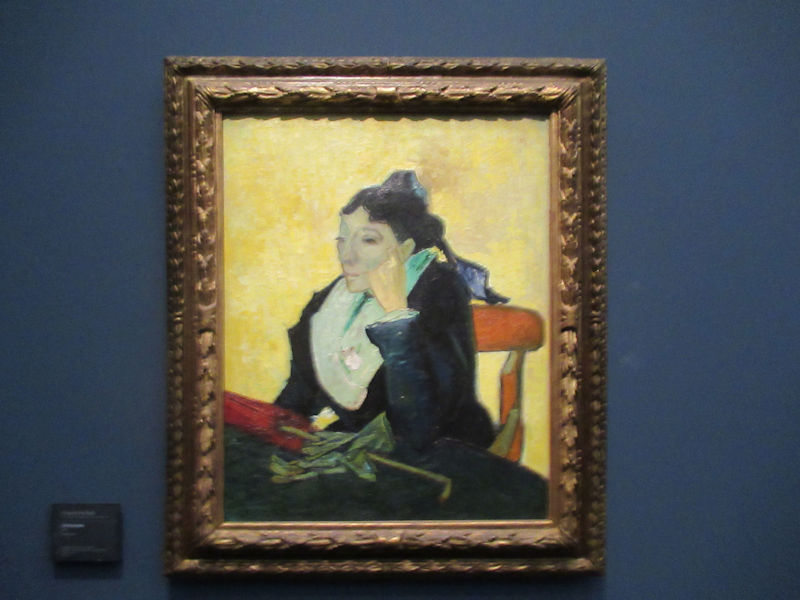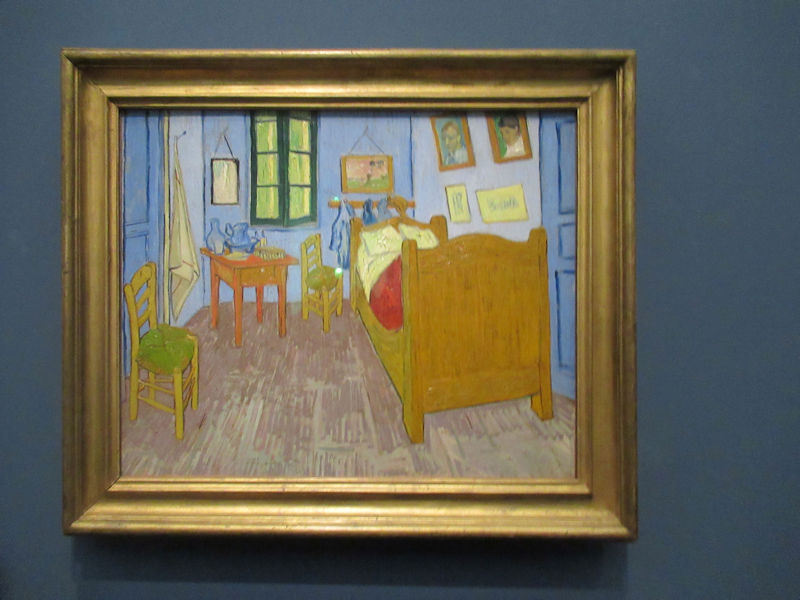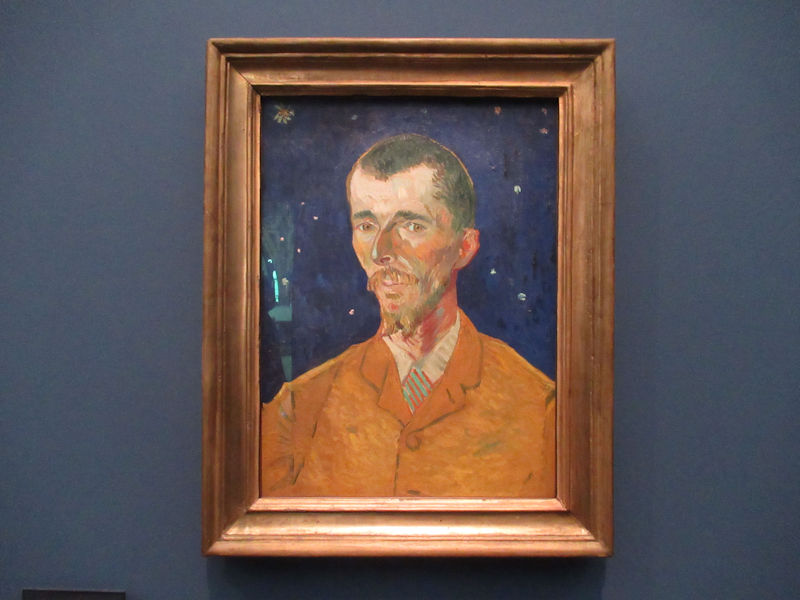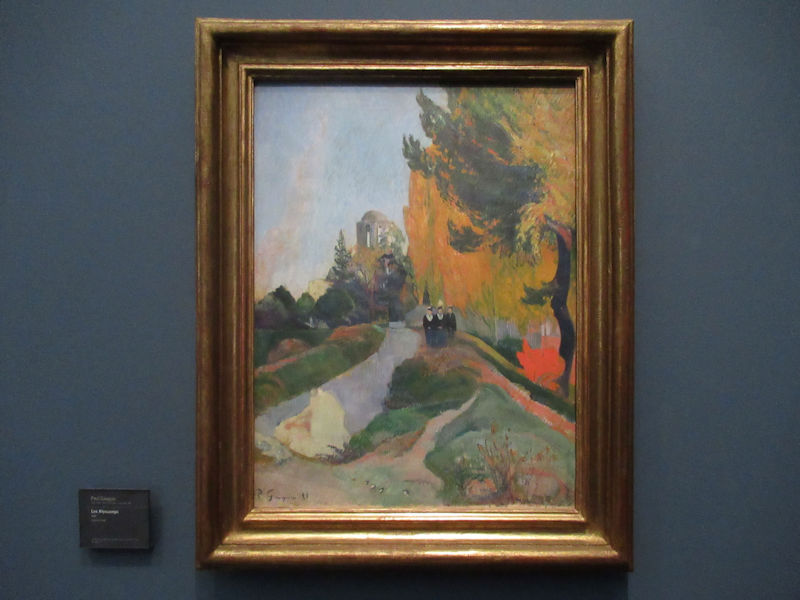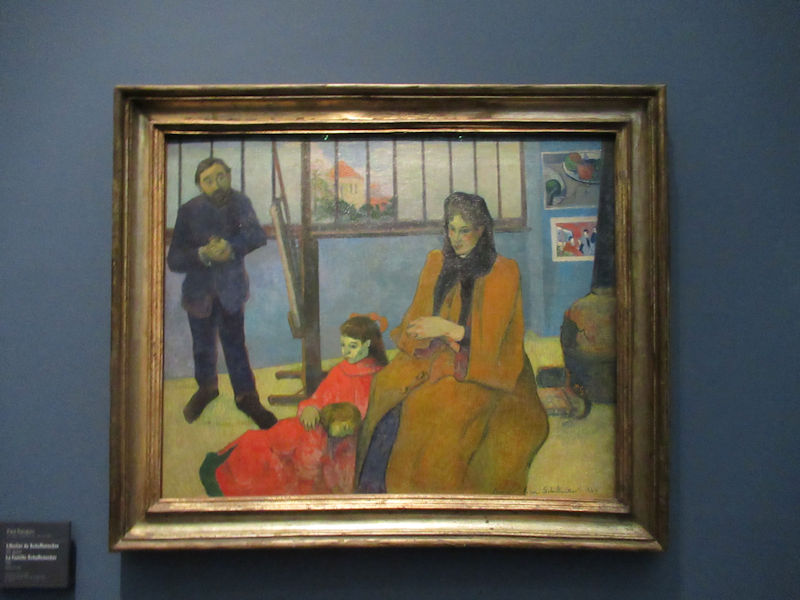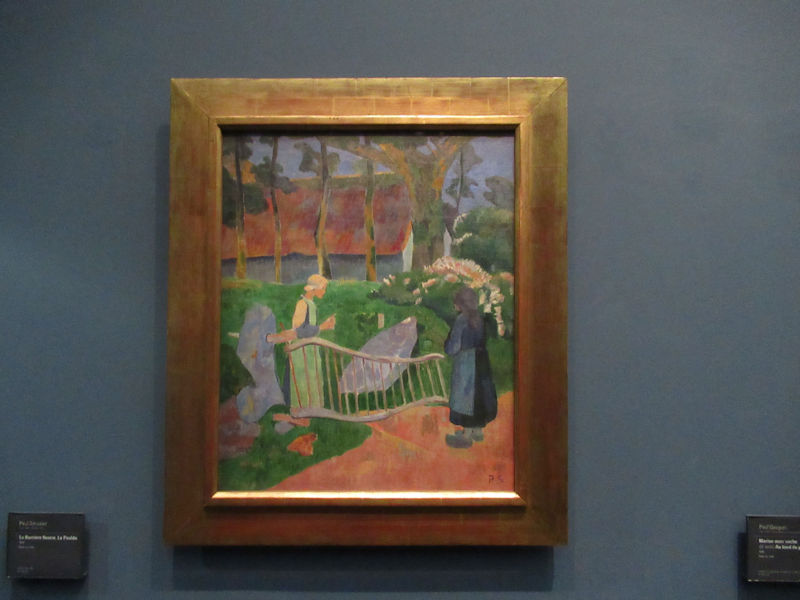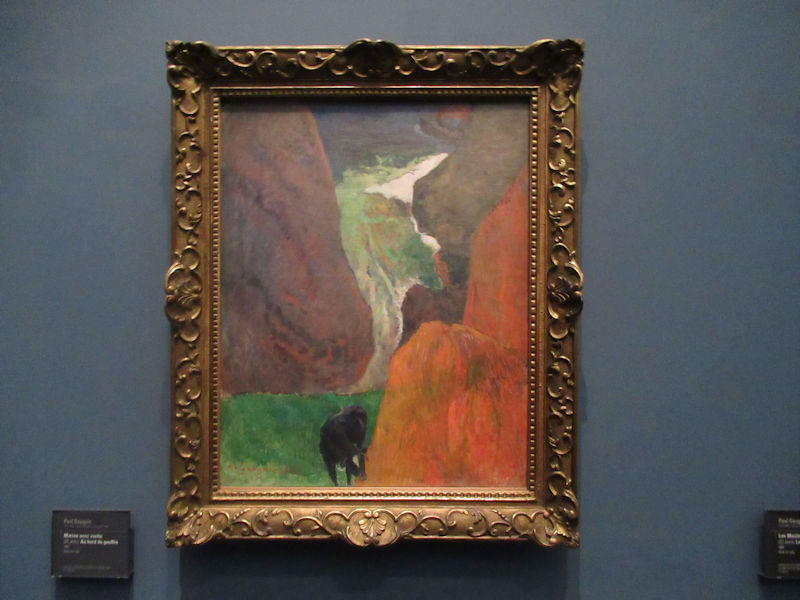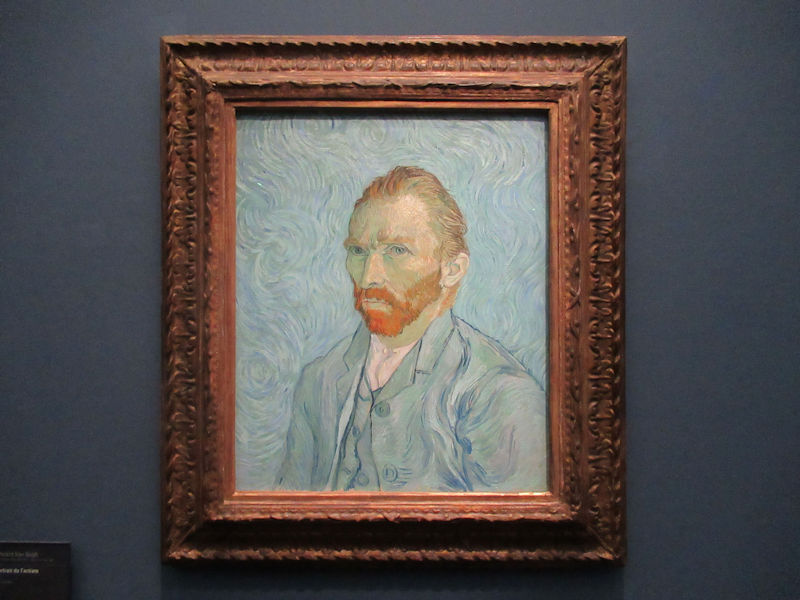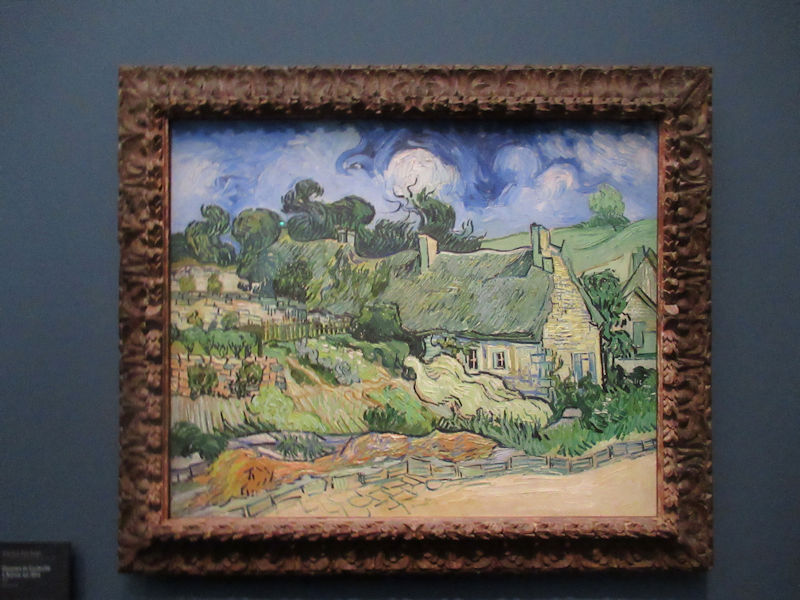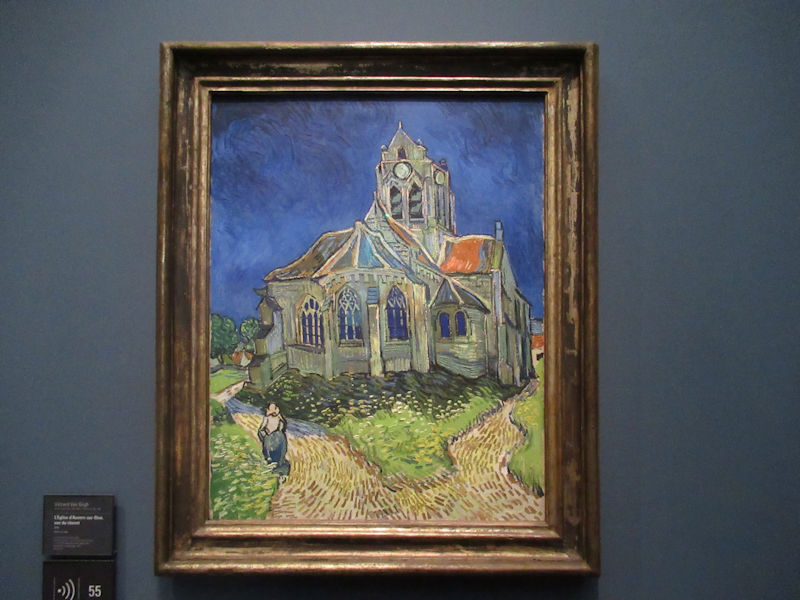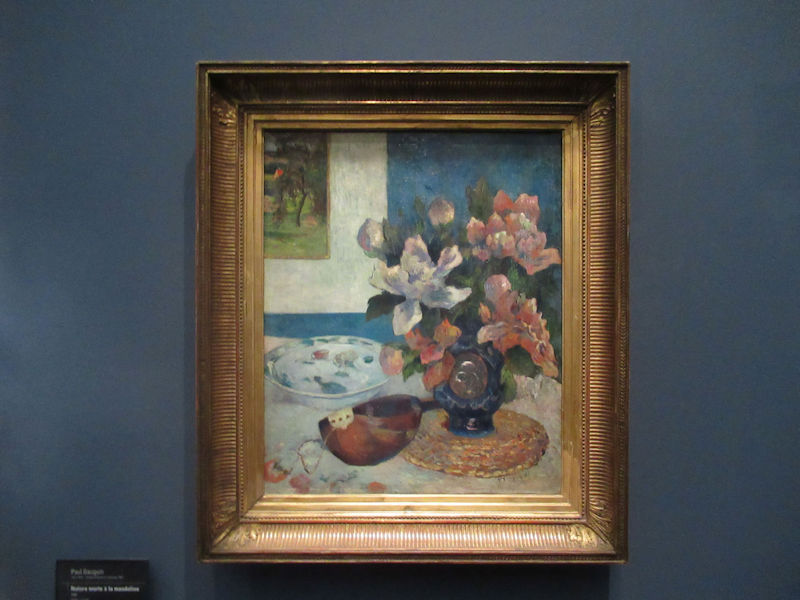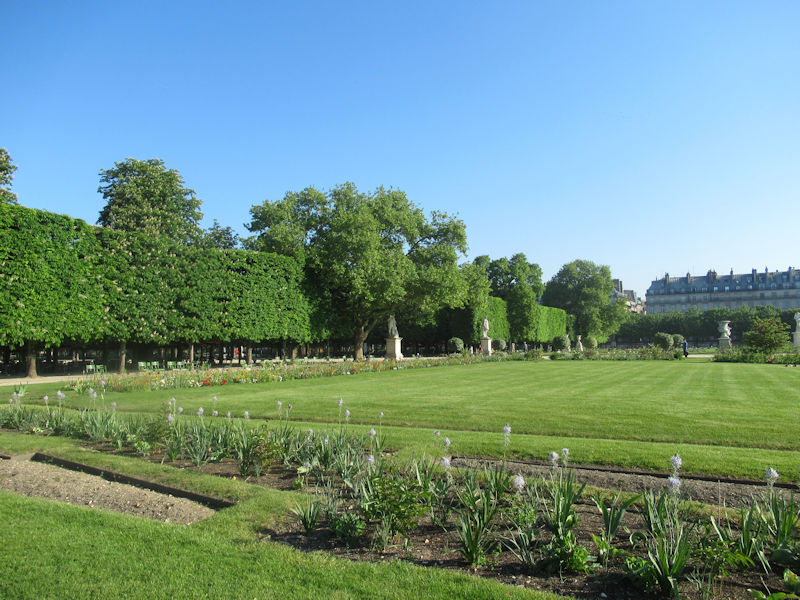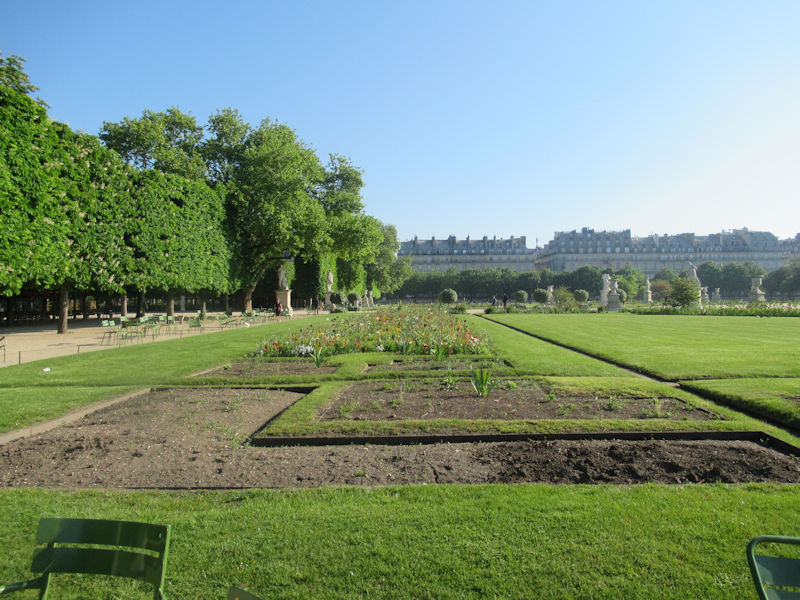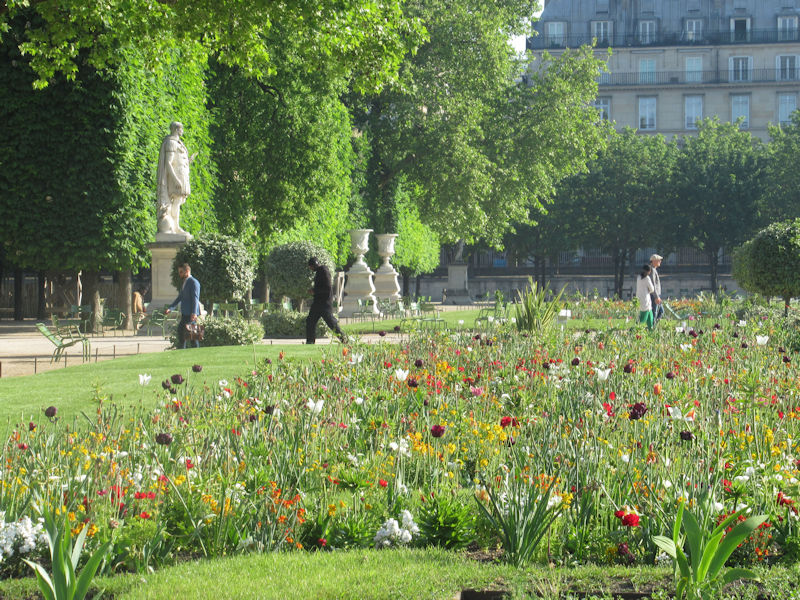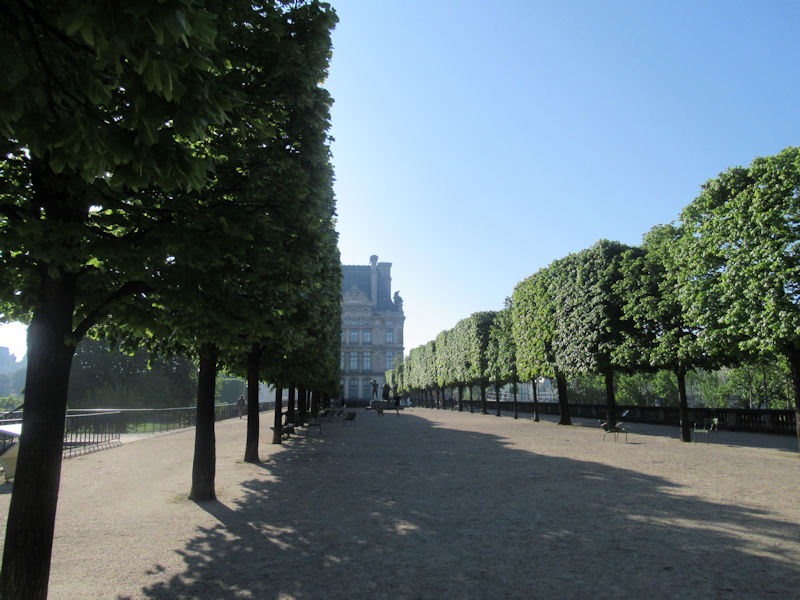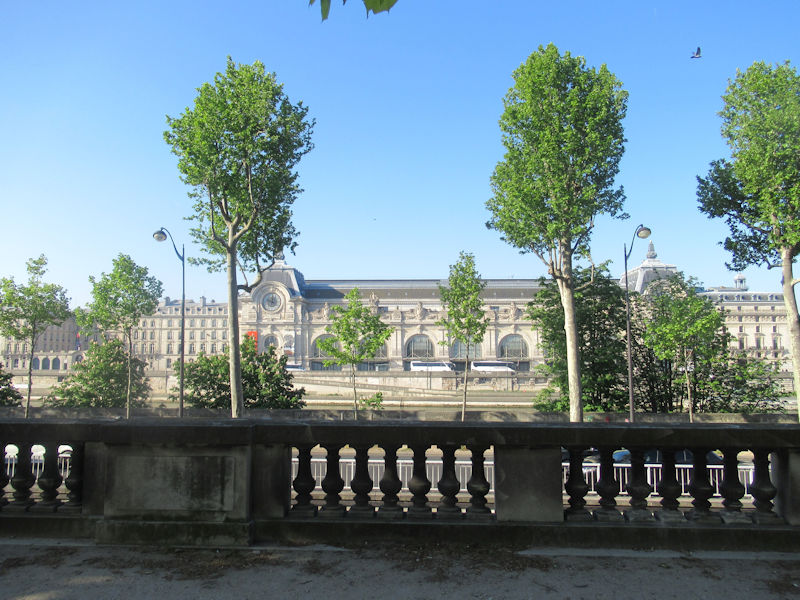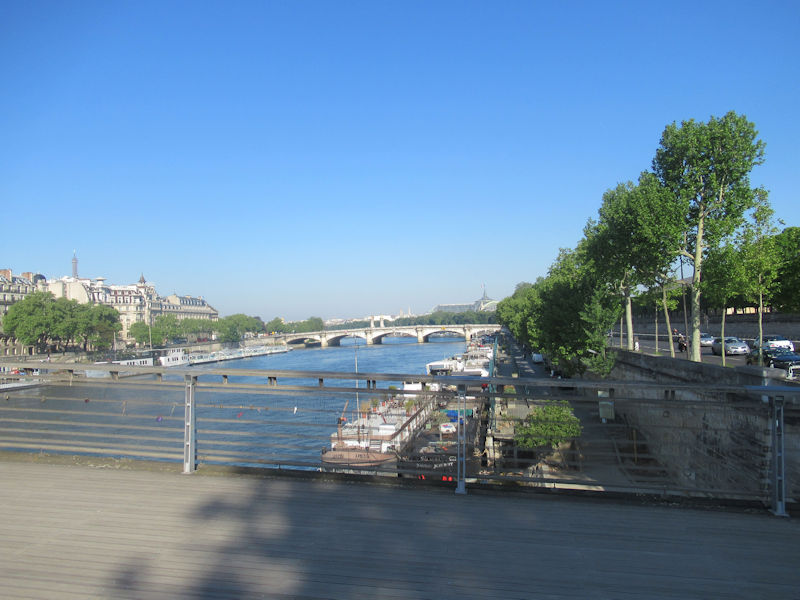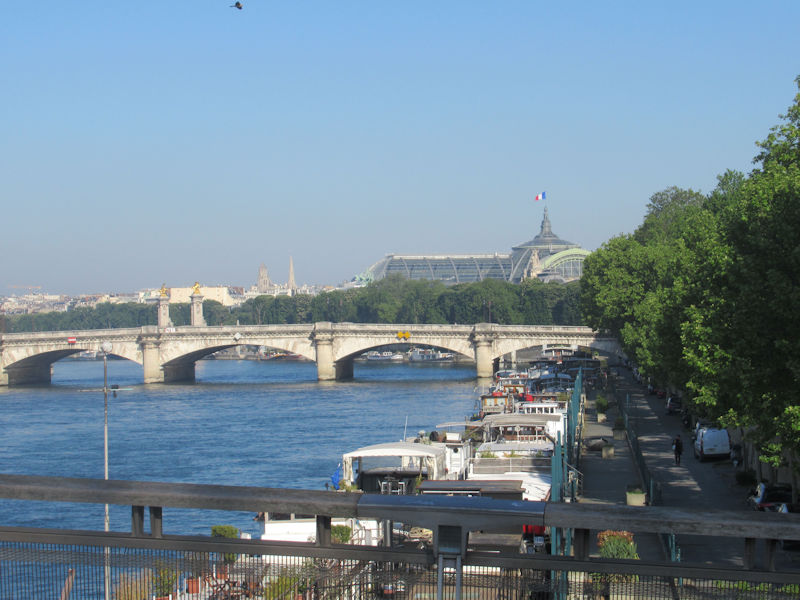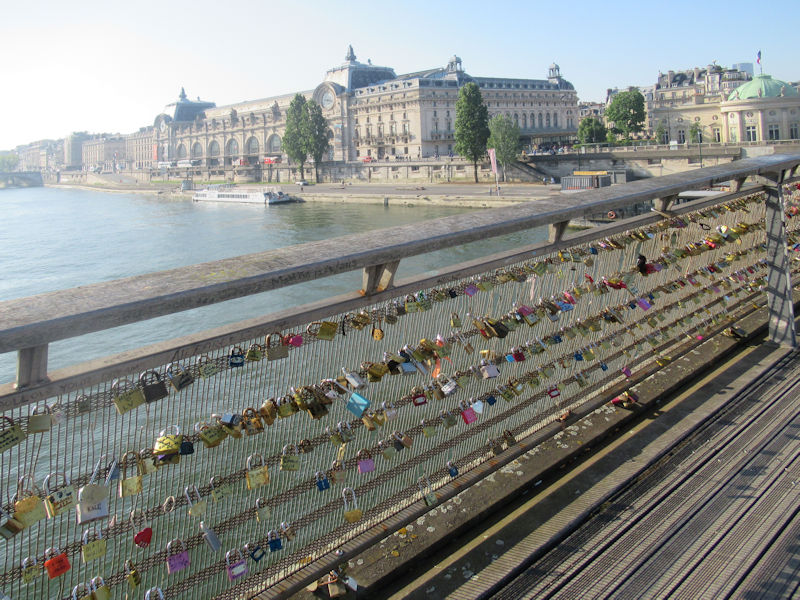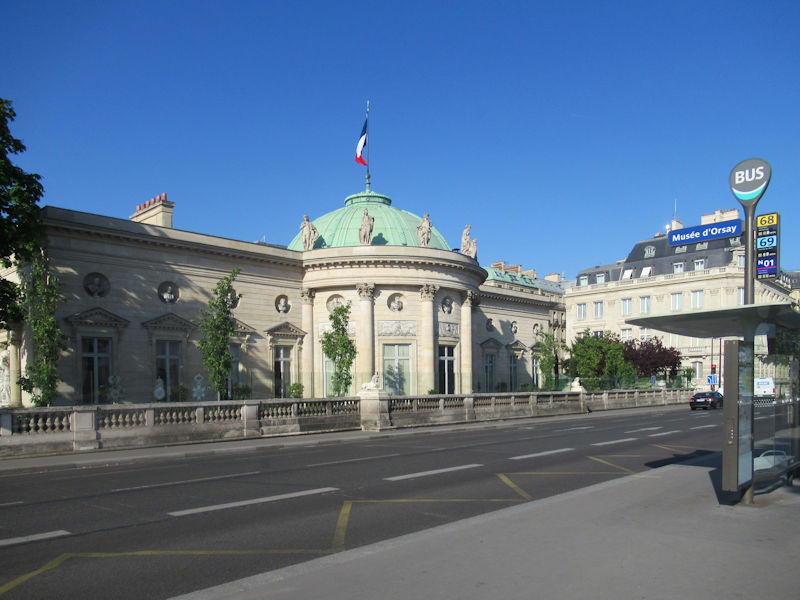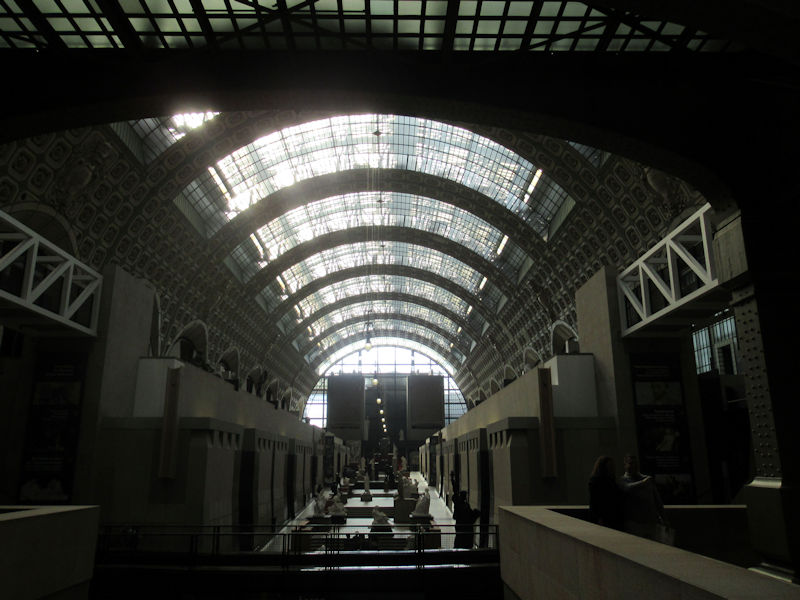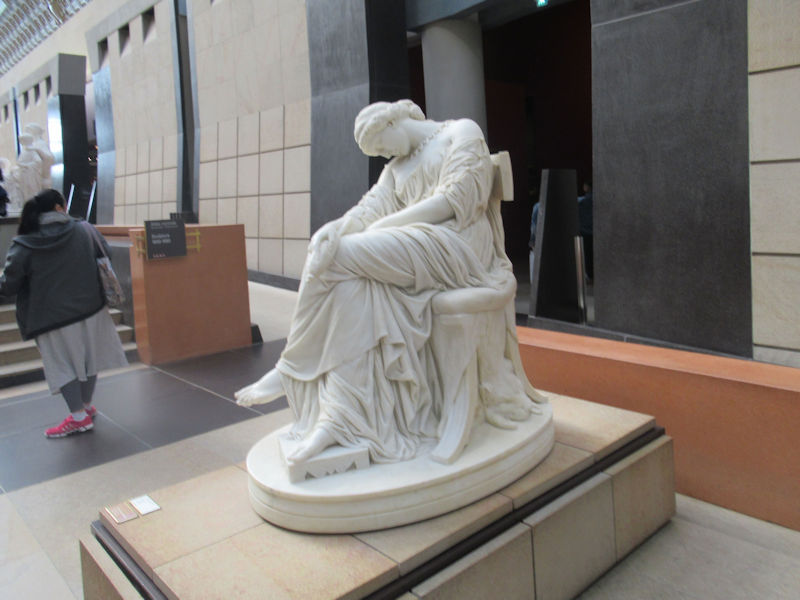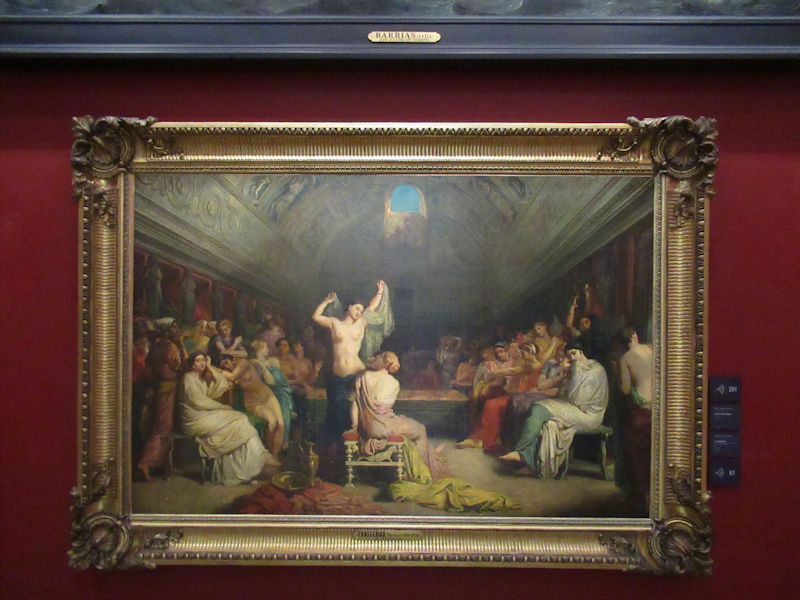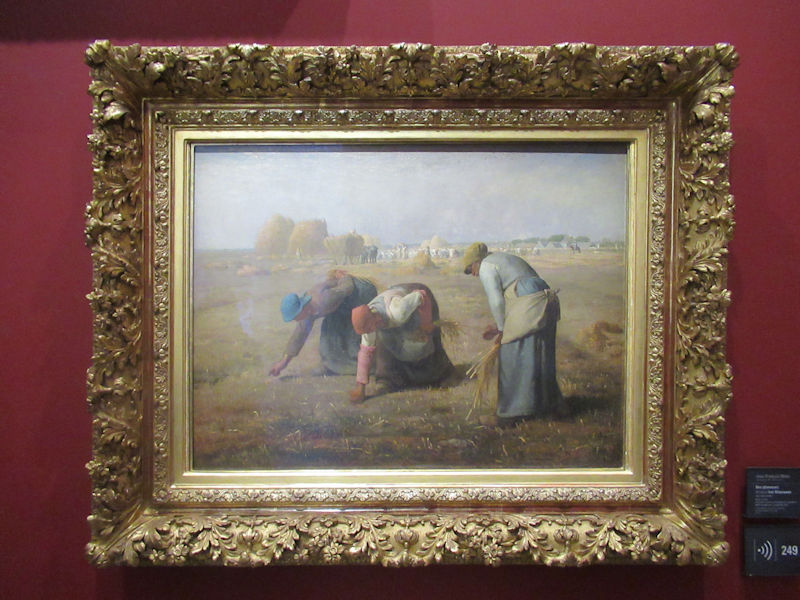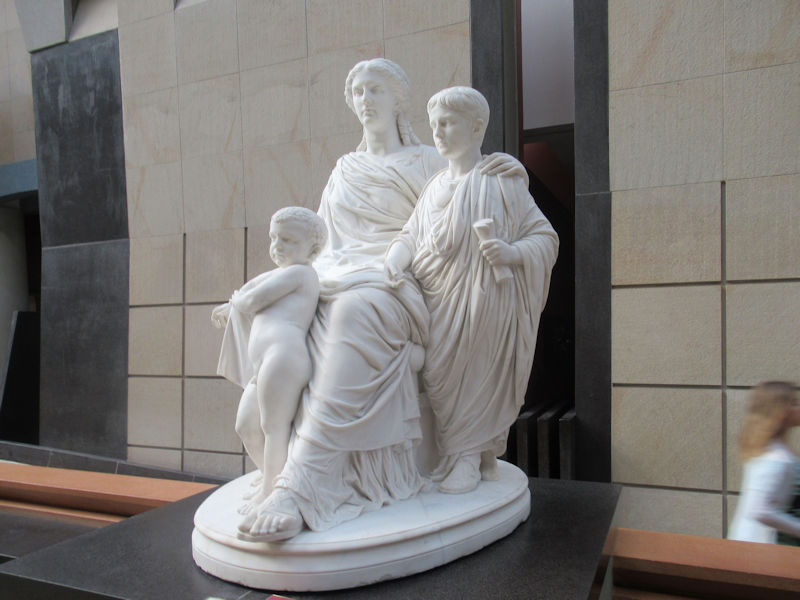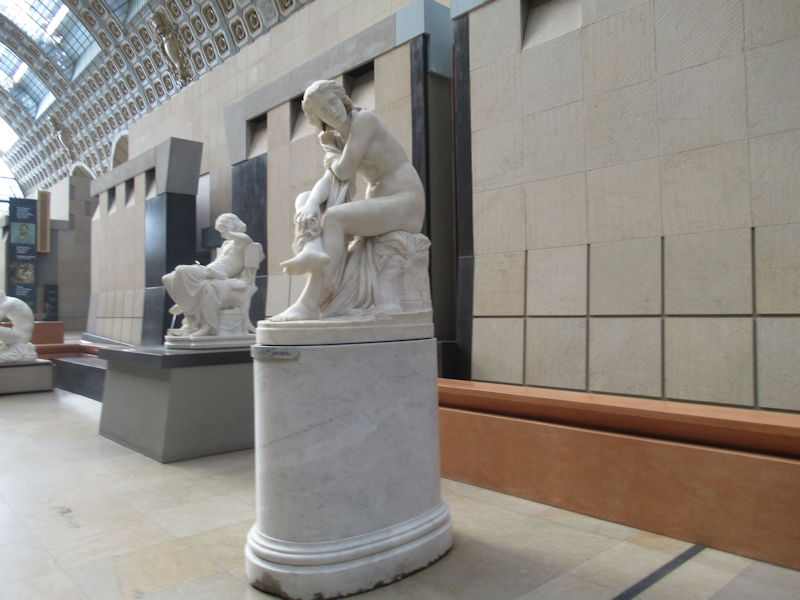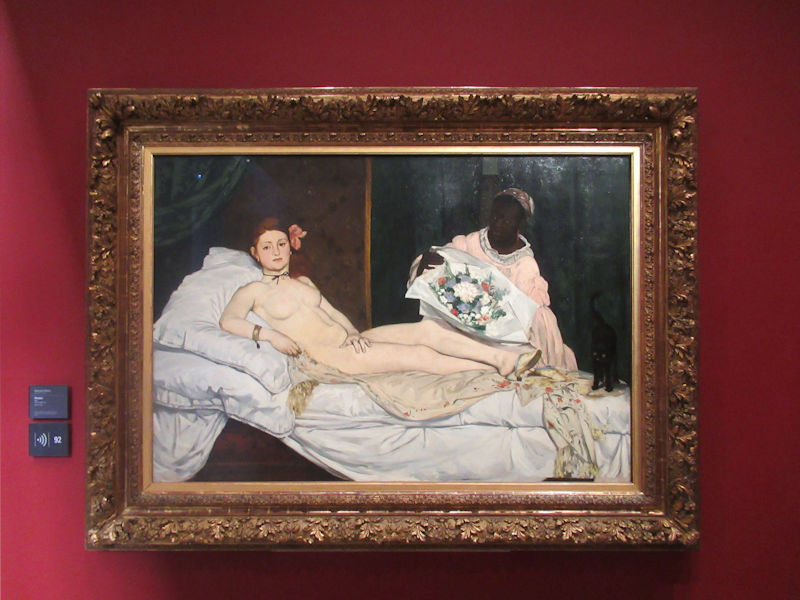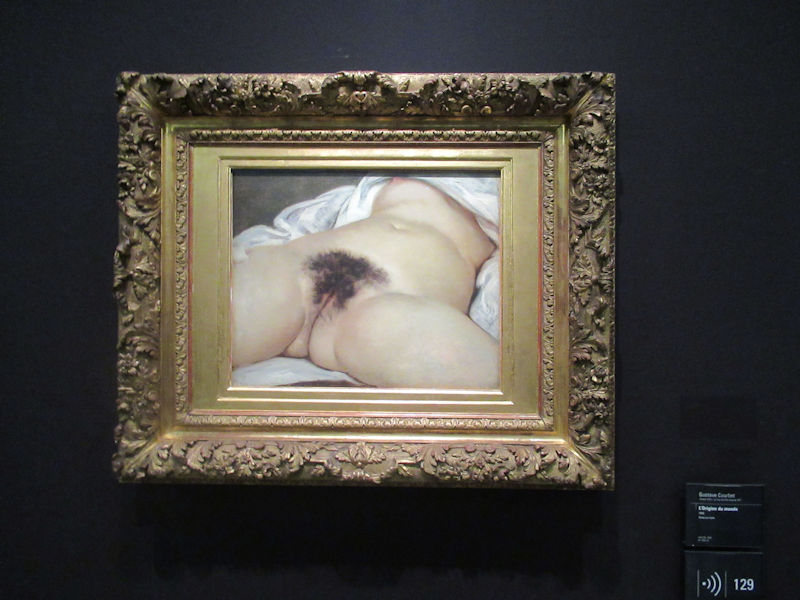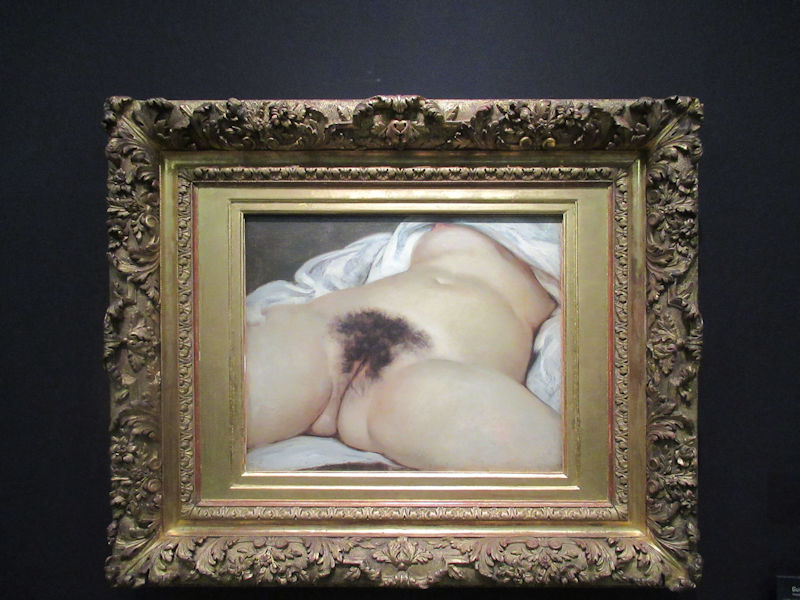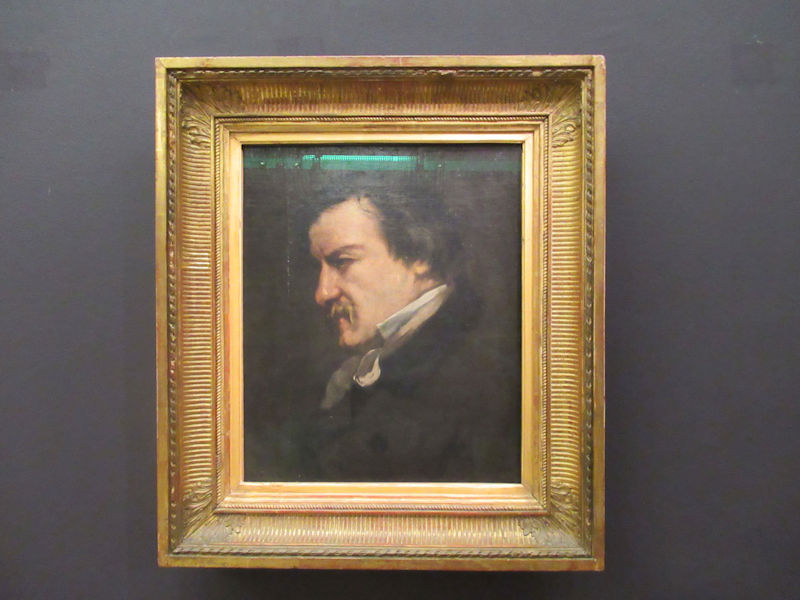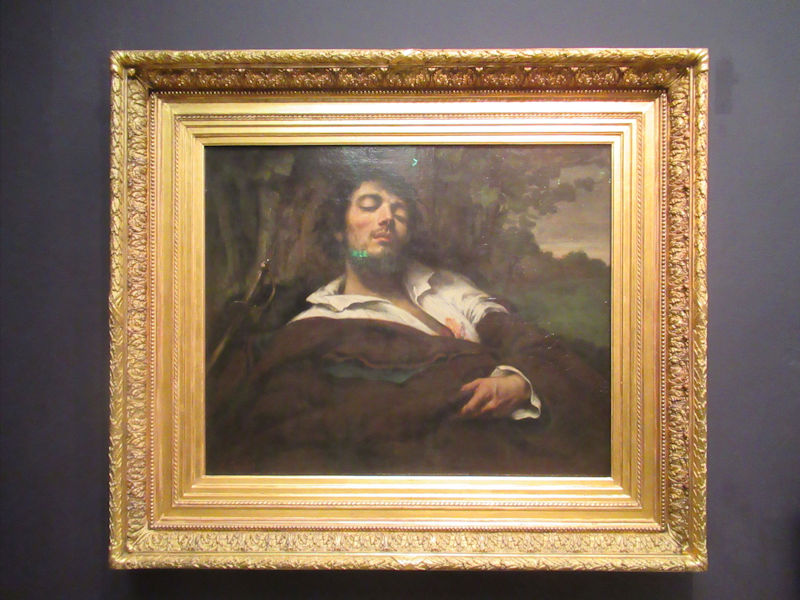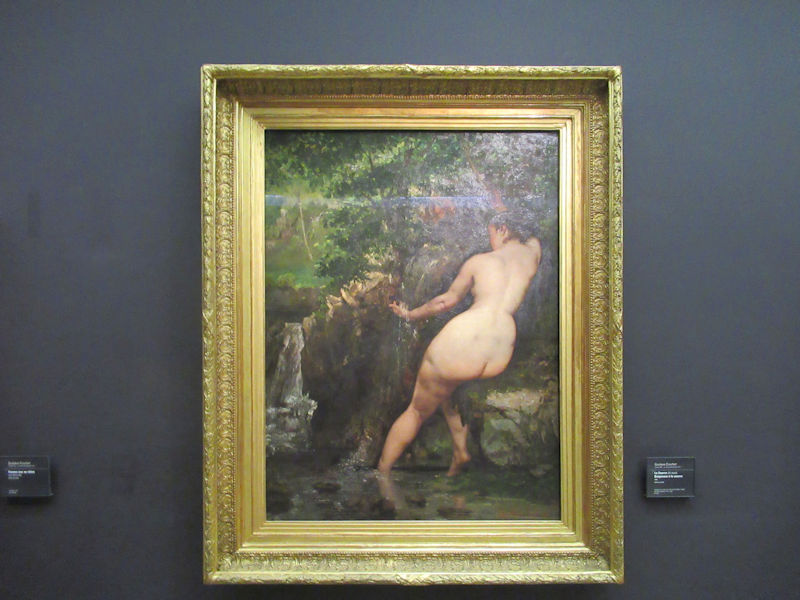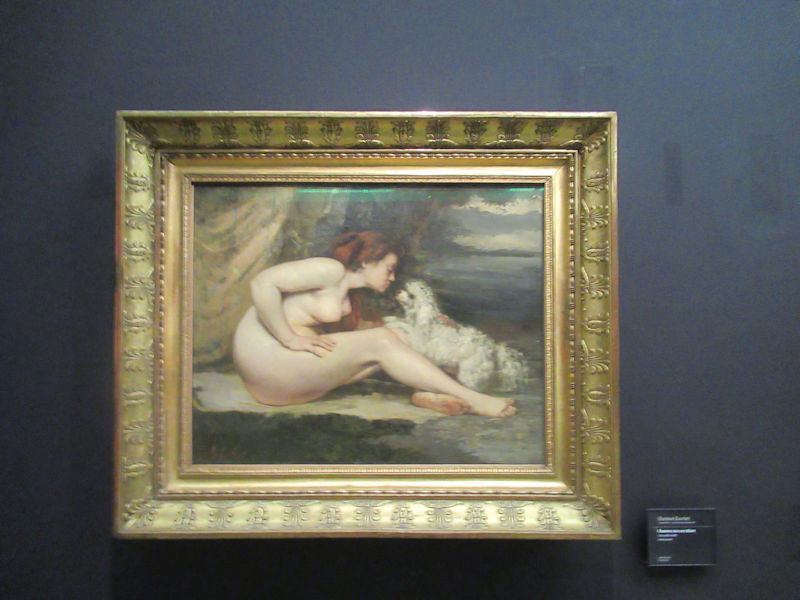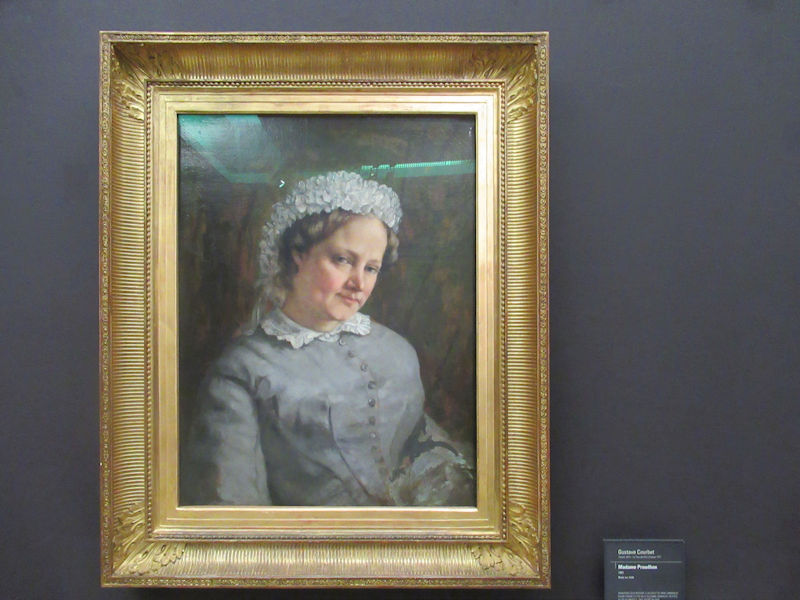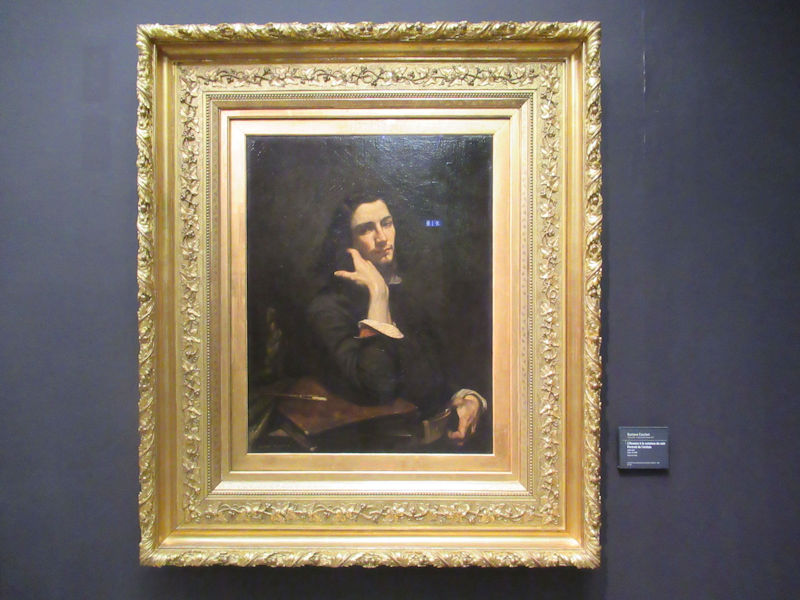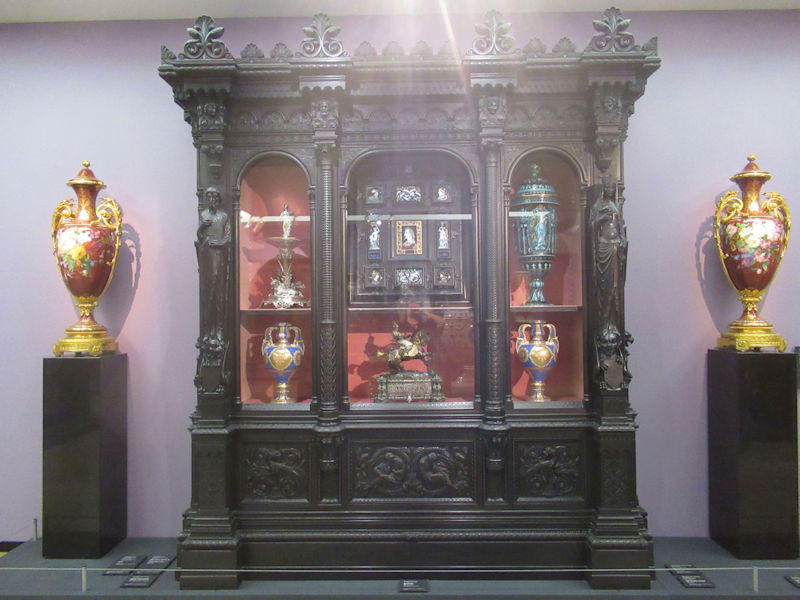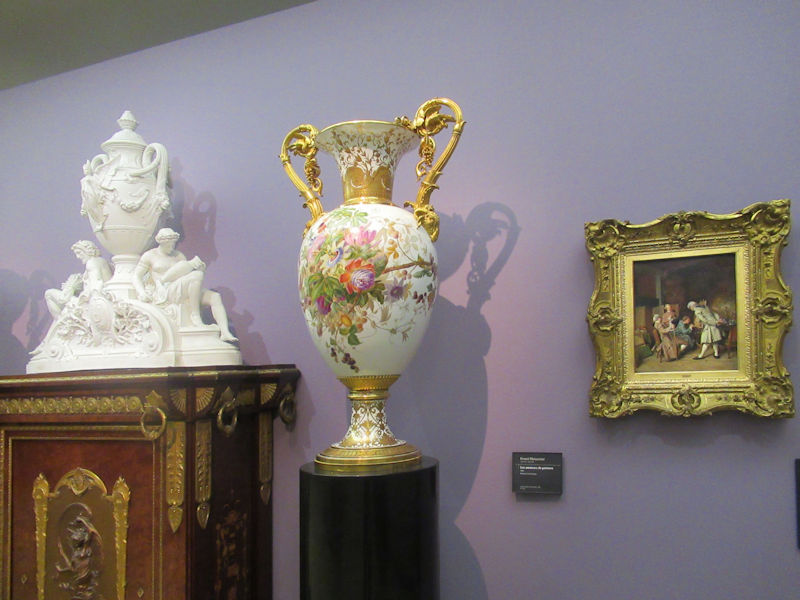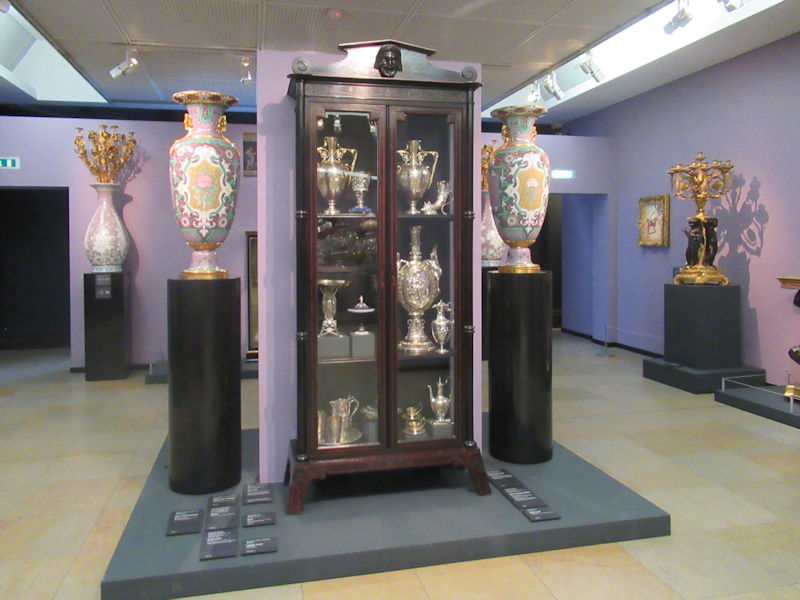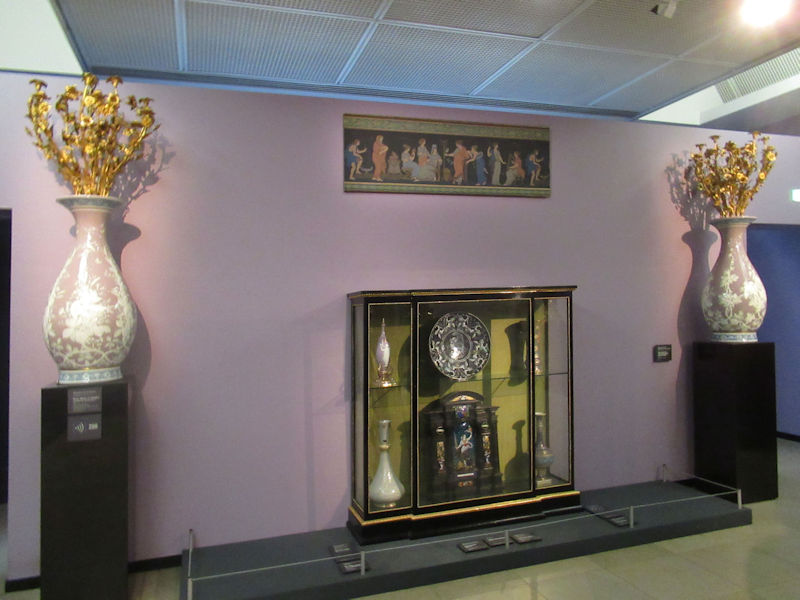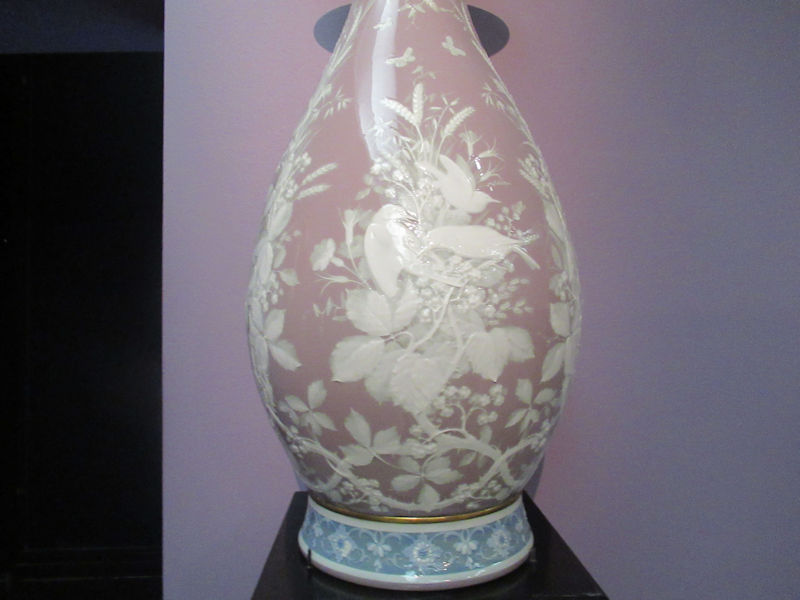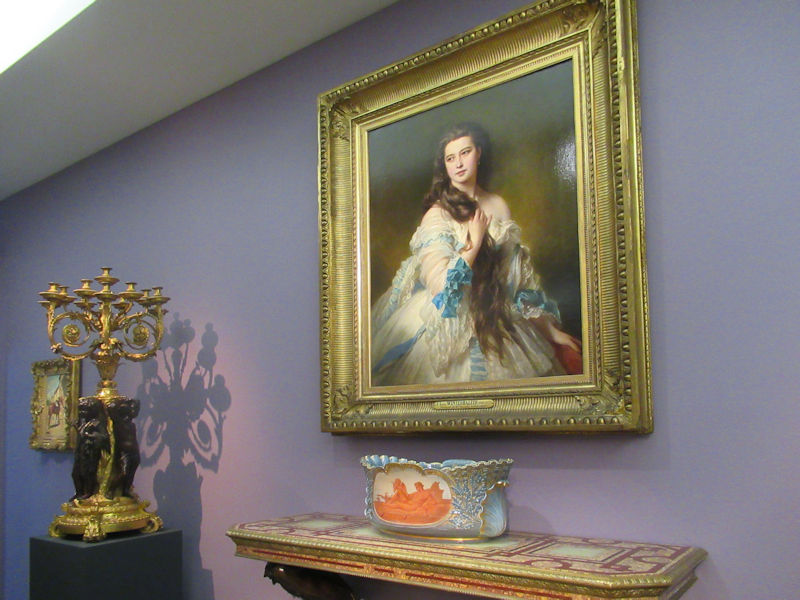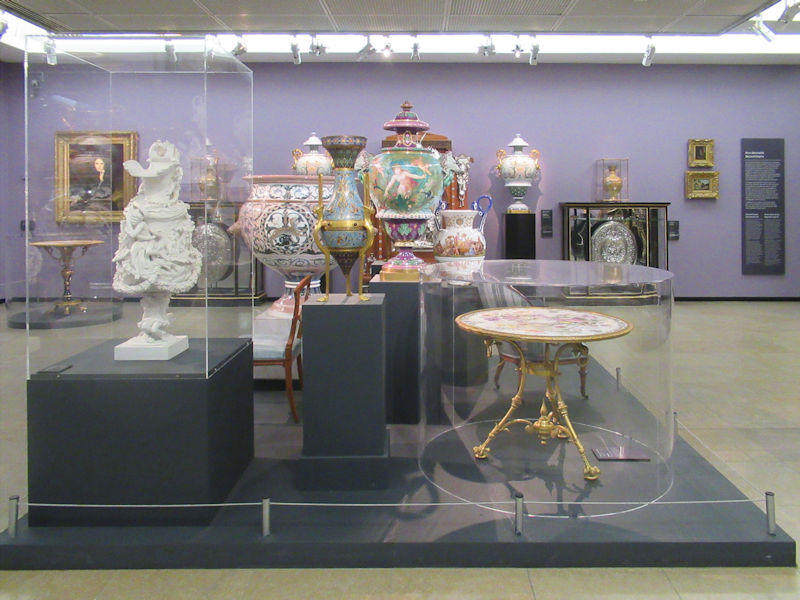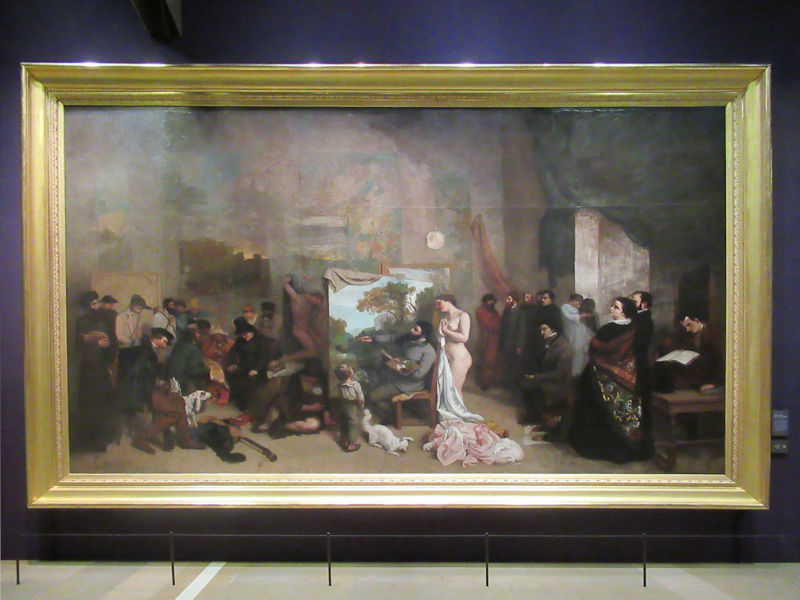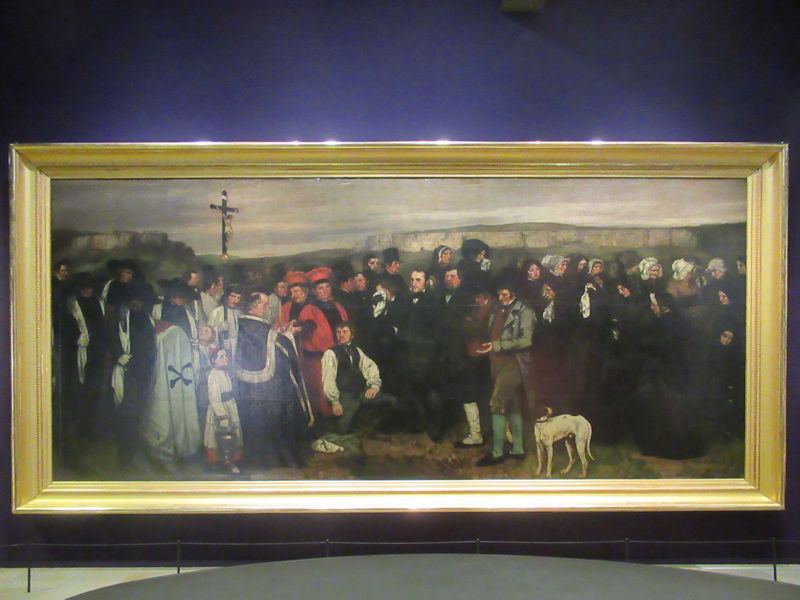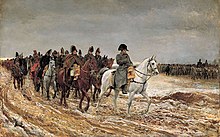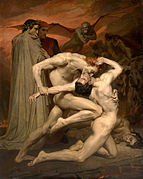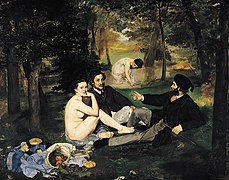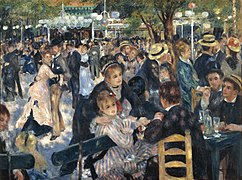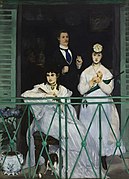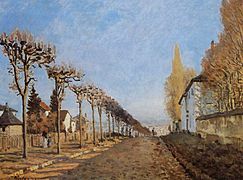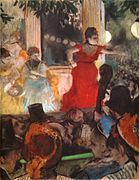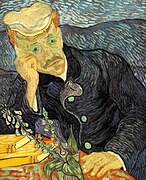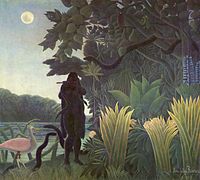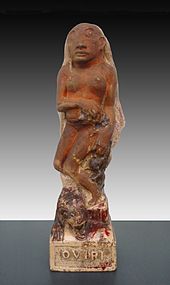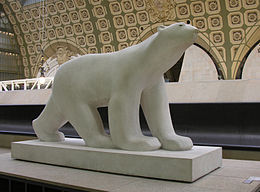View of the Musée d’Orsay.
Collections : French and European art from 1848 to 1914
Number of objects : 79,470 of which 5,765 on deposit – 4,000 works permanently presented
Architect : Gae Aulenti
Location : 62, rue de Lille, 75007 Paris
The Musée d’Orsay is a national museum inaugurated in 1986, located in the 7th arrondissement of Paris along the left bank of the Seine. It is installed in the former Orsay train station, built by Victor Laloux from 1898 to 1900 and refitted as a museum by decision of the President of the Republic Valéry Giscard d’Estaing. The collections present Western art from 1848 to 1914, in all its diversity: painting, sculpture, decorative arts, graphic art, photography, architecture, etc. It is one of the largest museums in Europe.
The museum has the largest collection of Impressionist and Post-Impressionist paintings in the world, with nearly 1,100 paintings 2 in total of more than 3,450, and can be seen as masterpieces of painting and sculpture such as Edouard Manet’s Breakfast on the Grass and Olympia, a proof of Degas’s Fourteen-year-old Little Dancer, The Origin of the World, A Burial in Ornans, The Painter’s Studio in Courbet, Card players Cezanne or five paintings of the series of Cathedrals Rouen Monet and Mill Ball Galette Renoir.
Temporary monographic or thematic exhibitions periodically cover the work of an artist, a current or a question in the history of art. An auditorium hosts diverse events, concerts, cinema, shadow theater, conferences and seminars and shows specifically for a young audience.
Click Refresh to view slides
A museum in a station
The history of the Musée d’Orsay, of its building is quite unusual. In the centre of Paris on the banks of the Seine, opposite the Tuileries Gardens, the museum was installed in the former Orsay railway station, built for the Universal Exhibition of 1900. So the building itself could be seen as the first “work of art” in the Musee d’Orsay, which displays collections of art from the period 1848 to 1914.
The station

On the eve of the 1900 World Fair, the French government ceded the land to the Orleans railroad company, who, disadvantaged by the remote location of the Gare d’Austerlitz, planned to build a more central terminus station on the site of the ruined Palais d’Orsay. In 1897, the company consulted three architects: Lucien Magne, Emile Bénard and Victor Laloux. The project was a challenging one due to the vicinity of the Louvre and the Palais de la Légion d’honneur: the new station needed to be perfectly integrated into its elegant surroundings. Victor Laloux, who had just completed the Hôtel de Ville in Tours, was chosen as winner of the competition in 1898.![]()
From station to museum
The Gare d’Orsay then successively served different purposes : it was used as a mailing centre for sending packages to prisoners of war during the Second World War, then those same prisoners were welcomed there on their returning home after the Liberation. It was then used as a set for several films, such as Kafka’s The Trial adapted by Orson Welles, and as a haven for the Renaud-Barrault Theatre Company and for auctioneers, while the Hôtel Drouot was being rebuilt.
The hotel closed its doors on January 1st, 1973, not without having played a historic role: the General de Gaulle held the press conference announcing his return to power in its ballroom (the Salle des Fêtes).
![]()
In 1975, the Direction des Musées de France already considered installing a new museum in the train station, in which all of the arts from the second half of the 19th century would be represented. The station, threatened with destruction and replacement by a large modern hotel complex, benefitted instead from the revival of interest in nineteenth-century architecture and was listed on the Supplementary Inventory of Historical Monuments on March 8, 1973. The official decision to build the Musée d’Orsay was taken during the interministerial council of October 20, 1977, on President Valéry Giscard d’Estaing’s initiative. The building was classified a Historical Monument in 1978 and a civil commission was created to oversee the construction and organisation of the museum. The President of the Republic, François Mitterrand, inaugurated the new museum on December 1st, 1986, and it opened to the public on December 9th.
Click Refresh to view slides
The Gallery
Summary (translated from Wikipedia)
Brief History
The museum is located on the site of the Palais d’Orsay, built in 1810 and decorated with frescoes by Théodore Chassériau 3, which in 1840 hosts the State Council on the ground floor and two years later late the Court of Accounts on the first floor. It was burned down in 1871 during the Paris Commune and left in the state of ruins until the construction by Victor Laloux of the station of Orsay, former terminus of the Company of the Railway of Paris in Orleans, to welcome the visitors and foreign delegations from the 1900 World Exhibition.
Its esplanade, to the west, was arranged in 1985 and endowed with numerous statues including the group called Statues of the 6 continents, initially installed on the terrace of the palace of Trocadéro during the world exhibition of 1878 4.
The Musée d’Orsay opened in the converted train station, the. To allow its transformation into a museum of arts of the nineteenth century, according to the will of the President of the Republic Valery Giscard d’Estaing, the building was reconfigured from 1983 to 1986 by architects Renaud Bardon, Pierre Colboc and Jean-Paul Philippon, laureates of an architectural competition organized in 1979, then joined by the Italian interior designer Gae Aulenti.
In the night of during the Nuit Blanche, individuals broke into the museum and seriously damaging a painting by Claude Monet, The Bridge of Argenteuil, dating from 1874, making a tear of 10 cm 5. The painting has been restored since.
Click Refresh to view slides
Collections
Decorative arts
Inaugurated at the Marsan Pavilion of the Louvre in 1905, the Museum of Decorative Arts was considered in 1879 on the site attributed to the station of Orsay in 1897, which will finally find this museum vocation in 1986. The Gate of Hell of Rodin, whose plaster is visible at the median level – terrace Rodin, was to constitute the monumental entrance.
In 1977, a collection of decorative arts objects from the 1848-1914 period was created at the Musée d’Orsay. Apart from the Charpentier dining room of 1900, reconstituted in a clean space ( period room ), furniture and objects are shown out of context. Consisting of representative works of the production of ceramics, glassware, jewelery and furniture, this collection testifies to the mutation of the production of objets d’art related to the industrial revolution, that of the fine arts applied to the industry. It has some masterpieces long unknown or poorly considered and also exhibits evidence of the exceptional quality of luxury industries of that time. The museum division of the collections of objects of art distinguishes by their location those produced under the Second Empire (1852-1870) and in the first two decades of the Third Republic (1870-1940) of those corresponding to the Art Nouveau style (to from 1890).
Painting
The Musée d’Orsay exhibits and preserves the largest collection of Impressionist paintings (more than 480 paintings) 6 and post-Impressionists (more than 600 paintings 2 cloisonnists, neo-Impressionists, Symbolists, Nabis …) at world, as well as outstanding paintings of the Barbizon School, realistic, naturalistic, orientalist and academic, including foreign schools. Nearly 5,200 paintings make up the collection, but a large number of works, including some 1,720 paintings , including about 100 non-localized or destroyed, are deposited in public buildings or provincial museums, such as 20 of the 95 paintings 7 of Vuillard, 21 of Bonnard’s 87 paintings , 19 of 83 paintings by Renoir or 33 of Maurice Denis’s 79 paintings.
This non-exhaustive list lists the main painters represented at the Musée d’Orsay with the number of their works painted in the collections as well as the title of their main achievements, whether or not they are exhibited, given the regular renewal of the clashes. This list also mentions pastels, for the artists concerned: indeed, although not belonging to the painting department, a certain number of pastels are exhibited in the permanent collections of the museum.
- Lawrence Alma-Tadema : 2 paintings
- Cuno Amiet : 4 paintings including Schneelandschaft
- Frédéric Bazille : 6 paintings (the majority of his paintings are at the Fabre Museum ), including Family Reunion , L’Atelier de Bazille and La Robe rose
- Émile Bernard : 12 paintings including Moisson by the sea and Symbolic self-portrait
- Arnold Böcklin : 1 painting, Diane’s Hunt
- Giovanni Boldini : 6 paintings including Count Robert de Montesquiou and Madame Charles Max
- Pierre Bonnard : 66 paintings and 2 pastels including the screen Women in the Garden, The Bourgeois Afternoon, The Lodge, The Pastoral Symphony, Woman sleeping on a bed and The Boxer (portrait of the artist)
- Eugène Boudin : 18 paintings and 72 pastels
- William Bouguereau : 11 paintings including Dante and Virgil, the Birth of Venus and Equality before Death
- George Hendrik Breitner : 2 paintings
- Jules Breton : 2 paintings, The Reminder of Gleaners and The Blessing of Wheats
- Ford Madox Brown : 1 painting
- Rupert Bunny : 1 painting
- Edward Burne-Jones : 2 paintings including The Wheel of Fortune
- Alexandre Cabanel : 7 paintings including the Birth of Venus
- Gustave Caillebotte : 6 paintings and 1 pastel including Planers parquet and View of roofs (effect of snow)
- Eugène Carrière : 85 paintings, including The Painter’s Family, The Sick Child, Intimacy
- Mary Cassatt : 1 painting and 5 pastels
- Paul Cézanne : 45 paintings including The Gulf of Marseille seen from L’Estaque, Montagne Sainte-Victoire, The Card Players, The Woman with the coffeepot, Apples and oranges, Portrait of the artist with a pink background, Maincy Bridge, Baigneurs, The hangman’s house in Auvers-sur-Oise, Seated peasant , Still life with the kettle, Achille Emperaire, one of the five paintings on the theme of card players and Self-portrait (circa 1875)
- Théodore Chassériau : 5 paintings (the majority of his paintings are in the Louvre), including Le Tepidarium
- Lovis Corinth : 2 paintings
- Camille Corot : 23 paintings (the majority of his paintings are in the Louvre), including A morning. The dance of the nymphs , The morning. Cow-keeper , In the evening. Far Tower and The Cart. Souvenir of Marcoussis
- Gustave Courbet : 32 paintings including L’Atelier du peintre, A burial in Ornans and The Origin of the world
- Thomas Couture : 6 paintings including The Romans of Decadence
- Henri-Edmond Cross : 8 paintings including The Golden Islands and Cypresses in Cagnes
- Charles-François Daubigny : 9 paintings including La Neige et Moisson
- Honoré Daumier : 12 paintings and 1 pastel including Crispin and Scapin, La blanchisseuse and Don Quichotte and the dead mule
- Edgar Degas : 42 paintings and 47 pastels including L’Absinthe, The Café-concert to ambassadors, Family Portrait (The Bellelli Family), The Woman at the coffeepot, The Bathers and The dance class
- Eugène Delacroix : 5 paintings (the majority of his paintings are in the Louvre) including Lions Hunt (sketch) and Tiger Hunt
- Maurice Denis : 46 paintings and 3 pastels including the 6 panels of The History of Psyche , the 6 panels of the decoration of the chapel of the College Sainte-Croix du Vésinet, the 4 panels of L’Eternel Summer, Tribute to Cézanne , Portrait of Yvonne Lerolle, The minuet of Princess Maleine, The Muses and Landscape with green trees
- André Derain : 2 paintings (the majority of his paintings are in the National Museum of Modern Art), including Charing Cross Bridge
- Thomas Eakins : 1 painting
- Albert Edelfelt : 3 paintings including Louis Pasteur
- James Ensor : 2 paintings
- Henri Fantin-Latour : 22 paintings and 2 pastels including Around the piano, Coin de table, Tribute to Delacroix, A workshop in Batignolles
- Paul Gauguin : 22 paintings, 3 pastels and 2 stained glass windows including Self-portrait with the yellow Christ, The white horse, Women of Tahiti, Arearea (Joyeusetés), The Alyscamps, Self-portrait with the hat (1893) and the Belle Angela
- Nikolay Nikolaevich Gay : 1 painting, The Calvary
- Jean-Léon Gérôme : 9 paintings including Young Greeks making beating cocks
- Henri Gervex : 7 paintings and 1 pastel
- Armand Guillaumin : 15 paintings and 3 pastels
- Osman Hamdy Bey : 1 painting
- Vilhelm Hammershoi : 2 paintings
- Ferdinand Hodler : 3 paintings including Der Holzfäller (The woodcutter)
- Winslow Homer : 1 painting, Summer Night
- Jean-Auguste-Dominique Ingres : 4 paintings (the majority of his paintings are in the Louvre), including The source and Venus in Paphos
- Johan Barthold Jongkind : 7 paintings
- Fernand Khnopff : 2 paintings
- Gustav Klimt : 1 painting
- Lucien Levy-Dhurmer : 1 painting and 16 pastels, including Calanque (six o’clock in the evening)
- Max Liebermann : 1 painting
- Raimundo de Madrazo y Garreta : 4 paintings
- Maximilien Luce : 12 paintings including A street of Paris in May 1871
- Edouard Manet : 39 paintings and 12 pastels including Le Déjeuner sur l’herbe , Olympia , Bull Fight , The Balcony , Berthe Morisot with the bouquet of violets, The Fife Player, Portrait of Émile Zola, Lola de Valence , On the beach , Portrait of Stéphane Mallarmé, Moonlight on the port of Boulogne, Suzanne Manet on his piano , Portrait of Mr. and Mrs. Auguste Manet, The Escape of Rochefort and Reading
- Jean-Louis-Ernest Meissonier : 32 paintings including Campaign of France 1814
- Meyer de Haan : 2 paintings
- John Everett Millais : 2 paintings
- Jean-François Millet : 22 paintings and 4 pastels including The Gleaners, The Angelus, Shepherd with his flock and The Spring
- Piet Mondrian : 1 painting and 1 pastel
- Claude Monet : 70 paintings and 1 pastel (the majority of his paintings are in the Marmottan Monet museum), including The railway bridge at Argenteuil , Rue Montorgueil, in Paris. Feast of June 30, 1878, The bridge of Argenteuil , Hotel Roches Noires. Trouville, Gare Saint-Lazare, London, Parliament. Fog in the fog, Carrières-Saint-Denis, Poppies, Regattas in Argenteuil, Women in the garden, Lunch on the grass, The Pie, The pavement of Chailly , Mrs. Louis Joachim Gaudibert, The Villas in Bordighera, Water Lilies, green harmony, 5 paintings from the series of Rouen cathedrals, The Turkeys and Self-portrait
- Gustave Moreau : 8 paintings (the majority of his paintings are in the Gustave Moreau museum), including Galatée and Orphée
- Berthe Morisot : 7 paintings and 1 pastel (the majority of his paintings are at the Marmottan Monet museum)
- Edvard Munch : 1 painting
- Mihály Munkácsy : 1 painting
- Camille Pissarro : 41 paintings and 5 pastels including Self-portrait, The Red Roofs
- Pierre Puvis de Chavannes : 30 paintings and 2 pastels including The poor fisherman , Young Girls by the sea and The dream
- Odilon Redon : 76 paintings and 20 pastels including the 15 panels of the dining room of the castle of Domecy, The chariot of Apollo , The Buddha , Baroness Robert de Domecy and The shell
- Pierre-Auguste Renoir : 64 paintings and 4 pastels including Bal du moulin de la Galette, Study: Chest, sun effect, The swing, Dance in the city, Dance in the country, Girls at the piano, The bathers and The boy at cat
- Ilia Repin : 1 painting, The Great Duke Michel
- Jozsef Rippl-Ronai : 3 paintings and 2 pastels, including French soldiers on the move
- Félicien Rops : 1 painting and 1 pastel
- Douanier Rousseau : 3 paintings (the majority of his paintings are at the Musée de l’Orangerie), including The Charmeuse of snakes and War
- Théodore Rousseau : 7 paintings
- Ker-Xavier Roussel : 4 paintings and 8 pastels
- Santiago Rusiñol y Prats : 2 paintings
- Théo van Rysselberghe : 4 paintings
- John Singer Sargent : 3 paintings including La Carmencita
- Valentin Serov : 1 painting
- Paul Sérusier : 15 paintings and 1 pastel including Le Talisman, Breton Eve and Breton wrestling
- Georges Seurat : 17 paintings and sketches, including Le cirque
- Paul Signac : 14 paintings and 1 pastel of which Woman with the umbrella , the red buoy and Women with the well
- Alfred Sisley : 37 paintings and 2 pastels including The Flood at Port-Marly, The Machine Path, Louveciennes, Poplar alley around Moret-sur-Loing, Les Regates at Moseley, Village of Neighbors, Passerelle d’Argenteuil, The Canal Saint-Martin, Rue de la Chaussée in Argenteuil, View of the Canal Saint-Martin, The Forge in Marly-le-Roi and the Rest at the edge of a stream. Edge of wood
- Joaquin Sorolla y Bastida : 1 painting, Return of fishing: towing the boat
- Léon Spilliaert : 2 pastels
- Alfred Stevens : 7 paintings and 1 pastel of which what is called the vagrancy
- August Strindberg : 2 paintings
- Franz von Stuck : 2 paintings
- Henry Ossawa Tanner : 3 paintings
- James Tissot : 8 paintings including The Circle of the Rue Royale, Portrait of the Marquis and the Marquise de Miramon and their children and Meeting of Faust and Marguerite
- Henri de Toulouse-Lautrec : 20 paintings (the majority of his paintings are at the Toulouse-Lautrec museum), including two panels for the barracks of Goulue, the Fair of the Throne in Paris , Jane Avril dancing , Rousse (The toilet) , Clowness Cha-U-Kao (es) and The bed
- Félix Vallotton : 22 paintings including Misia at her dressing table , Le ballon , Self-portrait and Le Poker
- Vincent van Gogh : 24 paintings including The House of Van Gogh in Arles, The Italian, Portrait of Dr. Gachet , The Church of Auvers-sur-Oise, Self Portrait (1889), Portrait of Eugene Boch, the Arlesian and Starry night on the Rhone
- Maurice de Vlaminck : 2 paintings (the majority of his paintings are at the National Museum of Modern Art) including The gardener and Restaurant de la Machine in Bougival
- Édouard Vuillard : 75 paintings and 9 pastels including the triptych Les Lilas, The millstone, The alley , the triptych of Public Gardens , The library , Jeanne Lanvin , The chapel of the Palace of Versailles and In bed
- James McNeill Whistler : 3 paintings including Arrangement in Gray and Black No. 1
- Franz Xaver Winterhalter : 1 painting (the majority of his paintings are at the Palace of Versailles), Mrs Rimsky Korsakov
- Ignacio Zuloaga : 4 paintings including Barres in front of Toledo and The Dwarf Doña Mercedes
- Anders Zorn : 2 paintings including Nude woman styling
Other artists
William Bouguereau,
Dante and Virgil (1850).
Gustave Courbet,
The Painter’s Workshop (1855).
Jean-François Millet,
Gleaners (1857).
Edouard Manet,
Olympia, (1863).
Henri de Toulouse-Lautrec,
The bed (around 1892).
Paul Gauguin,
Arearea or Joyeusetés (1892).
Paul Cézanne,
Still life with apples and oranges (1895 – 1900).
Paul Signac,
Entrance to the port of La Rochelle (1921).
Sculpture
Neoclassicism
- Eugene William (Montbard, 1822-Rome, 1905):
- The Reaper, 1849, bronze
- Anacreon, 1849/1851, marble
- James Pradier (Geneva, 1792-Bougival, 1852)
- Sappho, 1852, marble
- Jean-Jules Salmson , (Paris, 1823-Coupvray, 1902)
- La Dévideuse, 1863, bronze
- Gabriel-Jules Thomas (Paris, 1824-1905)
- Virgil, 1861, marble
Romanticism
- Pierre-Jean David of Angers (Angers, 1788-Paris, 1856)
- Goethe, 1829-1831, plaster
- François Rude (Dijon, 1784-Paris, 1855)
- Napoleon awakening to immortality, 1845, plaster
- Auguste Préault (Paris, 1809-1879)
- Ophelia, 1842, bronze
Eclecticism of the Second Empire
- Jean-Baptiste Carpeaux (Valenciennes, 1827-Courbevoie, 1875), 117 sculptures of which:
- Ugolino and his children , 1860, bronze
- Princess Mathilde, 1862, marble
- The Imperial Prince and his dog Nero, 1865, marble
- The Four Parts of the World Supporting the Celestial Sphere, 1868-1872, Lacquered Gum Plaster
- Danse, 1869, group of Echaillon stone deposited from the Opera Garnier
- Charles Cordier (Cambrai, 1827-Algiers, 1905)
- Sudan Negro, 1857, onyx, bronze and porphyry
- Capresse des colonies, 1861, onyx, bronze and pink marble
- Paul Dubois (Nogent-sur-Seine, 1829-Paris, 1905)
- Florentine singer, 1865, silver-plated bronze
- Albert-Ernest Carrier-Belleuse (Anisy-le-Chateau, 1824-Sevres, 1887)
- Bust of a woman wearing a tiara, 1860-1870, terracotta
- Sleeping Hebe, 1869, marble group
- Auguste Clésinger (Besançon, 1814-Paris, 1883)
- Woman stung by a snake , 1847, marble
- Jean-Joseph Perraud (Monay, 1819-Paris, 1876)
- Despair, 1869, marble
- Gustave Doré (Strasbourg, 1832-Paris, 1883)
- Joyeuseté , 1881, bronze
- Alexandre Falguière (Toulouse, 1831-Paris, 1900)
- The Winner in cock fight, 1864, bronze
- Tarcisius, 1868, marble
- Asia from the series of six continents, 1878, cast iron, parvis of the museum
- Antonin Mercié (Toulouse, 1845-Paris, 1916)
- David, 1871, bronze
- Hippolyte Moulin (Paris, 1832-Charenton, 1884)
- A find in Pompeii, 1863, bronze
- Jean-Baptiste Baujault (The Crèche near Breloux, 1828-1899)
- Young Gaul or Mistletoe year nine, 1870-1875, marble, mistletoe and bronze serp disappeared
- Alexandre Schoenewerk (Paris, 1820-1885)
- The Young Tarentine, 1871, marble
- Europe from the series of six continents, 1878, cast iron, forecourt of the museum
- Eugene Delaplanche (Belleville, 1839-Paris, 1891)
- Eve before sin, 1869, marble
- Africa from the series of six continents, 1878, cast iron, parvis of the museum
- Augustin-Jean Moreau-Vauthier (Paris, 1831-1893)
- Bacchante lying, 1892, marble
Eclecticism of the Third Republic
- Jean-Paul Aubé (Longwy, 1837-Cape Breton, 1916)
- Monument to Léon Gambetta, plaster model
- Frederic Auguste Bartholdi (Colmar, 1834-Paris, 1904)
- Statue of Liberty, 1889, bronze
- Lion of Belfort, 1900, bronze bas-relief
- René de Saint-Marceaux (Reims, 1845-Paris, 1915)
- Genius keeping the secret of the grave , 1879, marble
- Jean-Baptiste Hugues (Marseille, 1849-Paris, 1930)
- The Source Museum, 1900, cast iron, marble, bronze
- Oedipus at Colone, 1885.
- Lady Rateau bust, patinated plaster
- Vine , terracotta
- Emmanuel Fremiet (Paris, 1824-1910)
- Saint-Michel slaying the dragon , 1897, enlarged copper hammered
- Young elephant trapped , 1878, cast iron, forecourt of the museum
- Louis-Ernest Barrias (Paris, 1841-1905)
- Bust of Georges Clairin , painter, 1875, terracotta
- The Nubians (Alligator Hunters), 1894, plaster high relief
- Nature unveiling at Science , 1899, marble, onyx, granite, malachite, lapis lazuli.
- Theophile Barrau (Carcassonne, 1848-Paris, 1913)
- Suzanne, 1895, marble
- Jules Coutan (Paris, 1848-1939)
- Eagle Hunters, 1900, plaster
- Jean-Léon Gérôme (Vesoul, 1824-Paris, 1904)
- Gerome performing “The Gladiators”, bronze
- Tanagra, polychrome marble
- Bust of Sarah Bernhardt, tinted marble
- Corinth, polychrome plaster, wax, metal
- Denys Puech (Gavernac, 1854-Rodez, 1942)
- Aurora, white and pink marbles.
- Alexandre Falguière (Toulouse, 1831-Paris, 1900)
- Dancer, Cléo de Mérode , plaster cast on nature
Realism
- Honore Daumier (Marseille, 1808-Valmondois, 1879)
- Celebrities of the Juste Milieu, circa 1832, 36 busts caricatures in colored raw earth
- Ratapoil, around 1851, bronze
- Jules Dalou (Paris, 1838-1902)
- The Smith, 1886, study, patinated plaster
- The Republic, 1879, terracotta sketch
- The Great Peasant , 1897-1902, bronze
- Constantin Meunier (Etterbeek, 1831-Ixelles, 1905)
- Industry, 1892-1896, bronze relief
- The Harvest , 1895, bronze relief
- Henri Bouchard (Dijon, 1875-Paris, 1960)
- The Tank Top, 1905, bronze
- Bernhard Hoetger (Hörde, 1874-Beatenburg, 1949)
- The Human Machine , 1902, bronze
- Alfred Gilbert (London, 1854-London, 1934)
- Saint George, 1901-1910, bronze and ivory
- Anders Zorn (Mora, 1860-1920)
- Figure for a fountain II, 1910, bronze
Impressionism and Auguste Rodin
- Edgar Degas (Paris, 1834-1917), 76 sculptures of which:
- The Little Dancer of fourteen, 1921-1931 after the original of 1881, bronze, tulle, satin
- Dancer looking at the sole of her right foot , 1921-1931, bronze
- Dancer, large arabesque, third time , 1921-1931, bronze
- Woman sitting in an armchair wiping the left armpit , 1921-1931, bronze
- Jockey , 1921-1931, bronze
- Picking apples , 1921-1931, bronze bas-relief
- The tub , 1921-1931, bronze
- Auguste Renoir (Limoges, 1841-Cagnes-sur-Mer, 1919) and Richard Guino (Girona, 1890-Antony, 1973)
- Madame Renoir , 1916, polychrome mortar
- Judgment of Paris , 1914, plaster
- Water , 1916, bronze
- Fire , after 1916, bronze
- Auguste Rodin (Paris, 1840-Meudon, 1917), 26 sculptures of which:
- Bust of Madame Vicuna , 1917, bronze
- Bust of Jules Dalou , 1917, bronze
- The Bronze Age, 1877, bronze
- Bust of Jean-Paul Laurens , 1917, bronze
- Thought (portrait of Camille Claudel) , 1886-1889, marble
- Fugit amor , circa 1881, small bronze group
- Monument to Balzac , 1898, plaster model
- Saint John the Baptist , 1878, bronze
- the walking man , 1905, bronze
- The Gate of Hell, 1880-1917, High Relief in Plaster
- Camille Claudel (Fere-in-Tardenois, 1864-Avignon, 1943)
- The Wall Age, circa 1902, bronze
- Clotho’s torso, circa 1893, plaster
- Old woman’s head, study for Mature age, circa 1890, plaster
- Study II for Sakountala, circa 1886, terracotta
- Medardo Rosso (Turin 1858-Milan, 1928)
- Aetas Aurea, 1886, bronze
- Ecce puer, 1906, bronze
Primitivism
- Paul Gauguin (Paris, 1848-Atuana, Marquesas Islands, 1903), 30 sculptures and works of art including:
- Be mysterious, 1890, polychrome linden wood
- Mask of Tehura, 1891-1893, polychrome pua wood
- Idol with the shell, 1892-1893, ironwood, mother-of-pearl and bone
- Idol with pearl, 1892-1893, painted and gilded wood, pearl, gold chain
- Oviri (Wild), 1894, partly enamelled stoneware
- Maison du jouir , 1901, 5 reliefs in painted wood of sequoia gigantéa.
- Georges Lacombe (Versailles, 1868 – Saint Nicholas of the Woods, 1916)
- Existence, 1894-1896, walnut
- Iris, 1893-1894, polychrome mahogany
Symbolism
- Albert Bartholomew (Thiverval, 1848-Paris, 1928)
- Crying little girl , 1894, bronze.
- Marie Bashkirtseff (Gawronzi, 1860-Paris, 1884)
- The pain of Nausicaa, 1884, bronze.
- Boleslas Biegas (Koziczyn, 1877-Paris, 1954)
- The Sphinx, 1902, plaster relief.
- Leonardo Bistolfi (Casale Monferrato, 1859-Turin, 1933)
- The Crib , 1906, plaster,
- Arnold Böcklin (Basel, 1827-San Domenico, 1901)
- Shield with the face of Medusa , 1897, papier-mache painted.
- Rupert Carabin (Saverne, 1862-Strasbourg, 1932)
- The Savernoise Legend , 1914, pear wood.
- Jean Carriès (Lyon, 1855-Paris, 1894)
- Bishop , 1883-1889, bronze.
- Loyse Labé , around 1990, sandstone.
- Fauna , 1893, bronze.
- Alexandre Charpentier (Paris, 1856- Neuilly, 1909)
- Louis Welden Hawkins , 1893, bronze.
- Henry Cros (Narbonne, 1840-Sèvres, 1907)
- The history of water , 1894, bas-relief in glass paste.
- Jean Dampt (Venarey, 1853-1946)
- Towards the ideal through suffering , 1900-1906, pink marble of Comblanchien .
- Paul Dardé (Olmet, 1888-Lodeve, 1963)
- The Eternal Pain , 1913, gypsum.
- Alfred Drury (London, 1859-Wimbledon, 1944)
- The Spirit of the night , 1898-1905, bronze.
- Fernand Khnopff (Montigny-le-Bretonneux, 1858-Brussels, 1921)
- Future , 1898, marble, brass and copper.
- Max Klinger (Leipzig, 1857-Grossjena, 1920)
- Cassandra , 1886-1900, bronze.
- Maurice Maignan (Beaumont-sur-Sarthe, 1845-Saint-Prix, 1908)
- A beggar , 1897, sitting statuette, bronze.
- Pierre-Felix Masseau, (Lyon, 1869-Paris, 1937)
- The Secret , 1894, polychrome mahogany and ivory.
- Franz Metzner (Wscherau, 1870-Berlin, 1919)
- The weight of sorrow , around 1912, patinated black plaster
- Carl Miles (Lagga, 1875-Lidingö, 1955)
- Young girl with a cat , around 1900, bronze.
- Beggar , around 1900, bronze.
- The fight for life , before 1929, bronze and marble
- George Minne (Ghent, 1866-Sint-Martens-Latem, 1941)
- The mason , marble
- Kneeling at the fountain , 1898, bronze
- Porter of addition , 1897, bronze.
- Pierre Roche (Paris, 1855-1922)
- The Morgane Fairy , 1904, bronze, lead and marble.
- Augustus Saint-Gaudens (Dublin, 1848-Cornish, 1907)
- Amor caritas , 1885-1898, bronze.
- Franz von Stuck (Tettenweis, 1863-Munich, 1928)
- Ludwig van Beethoven , 1900, polychrome plaster
- City Vallgren (Porvoo, 1855-Helsinki, 1940)
- Pain , circa 1893, polychrome oolitic limestone .
- Beggar and her child or misery , 1892, bronze.
- Christ , circa 1889, patinated plaster.
- Félix Vallotton (Lausanne, 1865-Neuilly-sur-Seine, 1925)
- Woman holding back her shirt , 1904, bronze
- Adolfo Wildt (Milan, 1868-1931)
- Vir temporis acti , 1921, bronze.
Animal Sculpture
- Alfred Barye (Paris, 1839-1882)
- Antoine-Louis Barye (Paris, 1795-1855), 34 sculptures of which:
- Lion’s paw raised on a snake, 1832, bronze
- Two bears fighting, 1833, bronze
- Tartar warrior on horseback, 1845, bronze
- Seated lion, 1847, gum-lacquered plaster
- Order, 1854-1855, plaster, wood
- The war, 1855, plaster, wood
- Émile-Coriolan Guillemin (Paris, 1841-1907)
- Juno, 1867, bronze bas-relief of a basement of Charles-Guillaume Diehl
- Henri-Alfred Jacquemart (Paris, 1824-1896)
- Rhinoceros, 1878, cast iron, forecourt of the museum
- Rembrandt Bugatti, (Milan, 1884-Paris, 1916), 61 sculptures of which:
- Panther walking, circa 1904, plaster
- White elephant, 1907, bronze
- Giraffes, 1907, plaster
- Lion of Nubia, circa 1911, plaster
- Two lamas, 1911, bronze
- François Pompon, (Saulieu, 1855-Paris, 1933), 131 sculptures of which:
- Polar Bear, 1925, Lens Stone 8
- Polar bear, 1920, plaster draft
- Polar bear, 1927, bronze
- Hippopotamus, 1918-1931, bronze
- Gray Crane, 1920, bronze
- Owl, 1923, bronze
- Great deer, 1929, plaster
The return to style
- Antoine Bourdelle (Montauban, 1861- The Vesinet, 1929)
- Apollo, 1909, gilt bronze
- Penelope, (1907-1926), bronze
- The Force of the Will, (1914-1915), bronze, forecourt of the museum
- The Victory, (1914-1915), bronze, forecourt of the museum
- Herakles Archer, 1909, bronze and gilding, after the second version of 1923, melted by Eugène Rudier in 1924
-
Antoine Bourdelle, Herakles archer.
- Bather on a rock, bronze
- The Offering, bronze
- Albert Bartholomew (Thiverval, 1848-Paris, 1928)
- Bust of Federico Zandomenighi , painter, 1890, plaster
- Joseph Bernard (Vienna, 1866-Boulogne-Billancourt, 1931)
- Water carrier, 1912, bronze
- Dance, 1911-1913, marble relief
- Aristide Maillol (Banyuls-sur-Mer, 1861-1944)
- Mediterranean or Thought, 1905-1927, marble
- Ile-de-France, 1925-1933, stone
- Bather with raised arms, 1900, bronze
- Desire, 1905-1907, relief in lead
Photography
The photography collection of the Musée d’Orsay was entirely made from scratch from the late 1970s when the project of transforming the former Orsay railway station into a museum of the XIX th century has been taken, no museum fine arts in France does not yet have a section dedicated to photography. It became apparent that this major invention of the XIX th century was to take place in the future museum 9. The works of many photographers are preserved in the collections of the Musée d’Orsay, including those of Hippolyte Bayard, Édouard Baldus, Christian Bérard, Louis-Jacques-Mande Daguerre, Felix Nadar, Nicephore Niepce, Constant Alexander Fam …
Notes and references
- [archive]
- Not including the 414 paintings , sketches and studies of the studio collection of the symbolist painter Alphonse Osbert.
- The Louvre retains some frescoes Chassériau, spare the grand staircase, some in the last rooms of the Department of French sculptures.
- Statues in front of the Orsay Museum [ archive ] on the Paris 1900 site [ archive ] , accessed March 30, 2014
- Drunk, they damage a Monet TF1 [ archive
- Including 64 paintings by Gauguin, Van Gogh and Toulouse Lautrec.
- When searching for “paintings” of an artist in the online catalog of the museum, it is necessary to deduce the deposits of particular collections, as well as the “designation: drawing”, because after 2014 the drawings are kept in the museum of Orsay, rather than the Louvre as before.
- According to the original plaster of 1922 exhibited at the Musée de l’Homme
- See the history of the constitution of the photography collection at the official site of the Musée d’Orsay [ archive ]
- ” The museum of Orsay authorizes the photos … thanks to a tweet of Fleur Pellerin? » [ Archive ] , on metronews.fr/ ,(accessed April 27, 2015 )
- ” The Musée d’Orsay forbade photos … to Fleur Pellerin ” [ archive ] , on lefigaro.fr ,(accessed April 27, 2015 )
- Decree reproduced on the website of the Musée d’Orsay [ archive ]
- Decree reproduced on the website of the Musée d’Orsay [ archive ]
- Article Site Artclair [ archive ]
- Status [ archive ] on the site of the Musée d’Orsay.
- Decree of the Minister of Culture and Communication dated 2 May 1979 published in the Official Journal of the French Republic on 18 (appointment of the Director of the public institution of the museum of XIX th century from 15 October 1978) .
- Decree of 15 March 1986 appointing the director of the Musée d’Orsay.
- Decree of 12 August 1994 appointing the director of the Musée d’Orsay.
- Order of 9 April 2001 concerning the interim appointment of the director of the Musée d’Orsay.
- Decree of 26 November 2001 appointing the Director of the Musée d’Orsay.
- Decree of 26 May 2004 appointing the President of the Public Establishment of the Musée d’Orsay.
- Decree of 5 July 2007 appointing the President of the Public Establishment of the Musée d’Orsay – Mr. Lemoine (Serge).
- Decree of 28 January 2008 appointing the President of the Public Establishment of the Musée d’Orsay – Mr. Cogeval (Guy).
- Decree of 15 March 2013 appointing the President of the Public Establishment of the Musée d’Orsay and the Musée de l’Orangerie – Mr. COGEVAL (Guy).
- ” Laurence des Cars in Orsay: the new president, this is it! » [ Archive ], on France Culture ,(accessed April 3, 2017 )
- ” The SAMO ” [ archive ] , on http://www.amis-musee-orsay.org [ archive ] (accessed July 4, 2014 )
- ( in ) AFMO , ” News & Events – AFMO ” [ archive ] , on AFMO (accessed 29 January 2016 )
- ” Musée d’Orsay: Get involved! Join the Circle of Patron Women! ” [ Archive ], on www.musee-orsay.fr (accessed January 29, 2016 )
- Notice of the book, on the Orsay Museum site. [ archive ]
- “The ideal library # 46:” Modern Olympia “, a pictorial fantasy Catherine Meurisse” article article Télérama [ archive ] , the 26/03/2014.
- Album on the site of its co-publisher Futuropolis. [ archive ]
- The book, on the Orsay Museum site. [ archive ]
See also
Bibliography
Literature
- Wesh, the Musée d’Orsay [ archive ] , 2017, a novel by Michael Nativel, inspired by a real event that took place at the Musée d’Orsay on December 7, 2016 [ archive ].
Related Articles
- Decorative Arts at the Musée d’Orsay (1848-1889)
- Gare d’Orsay
- Realism
- Firefighter or Academic Art
- Pre-Raphaelite
- School of Barbizon
- impressionism
- Post-Impressionism
- Neo-Impressionism
- Fauvism
- Art Nouveau
- Nabis
- School of Pont-Aven
- Symbolism
- Naturalism
- Marlene and Spencer Hays Collection

